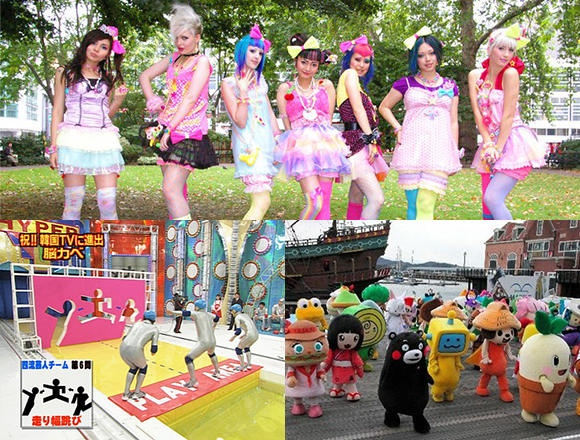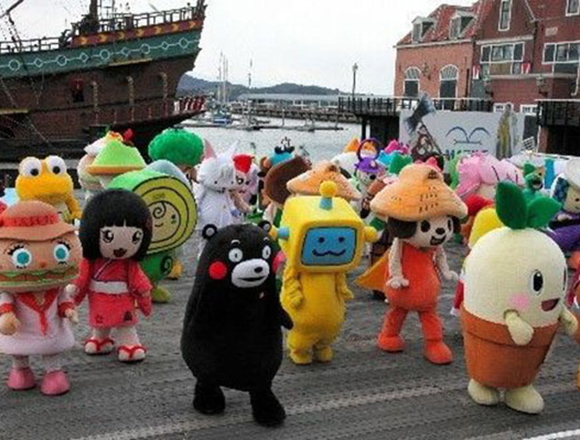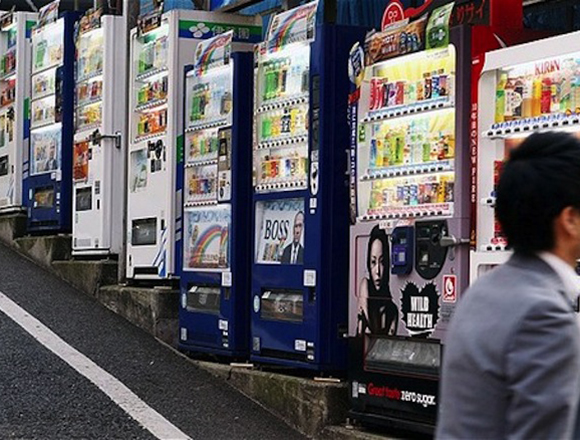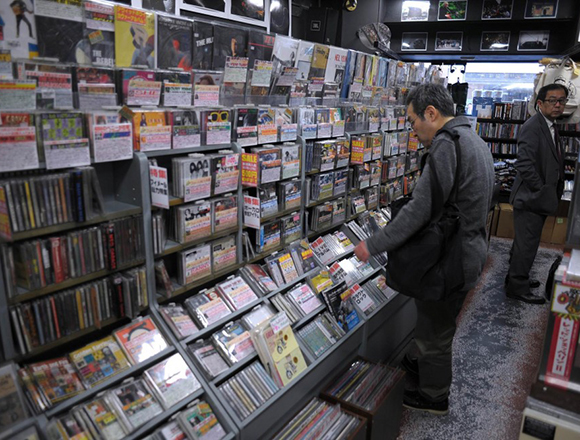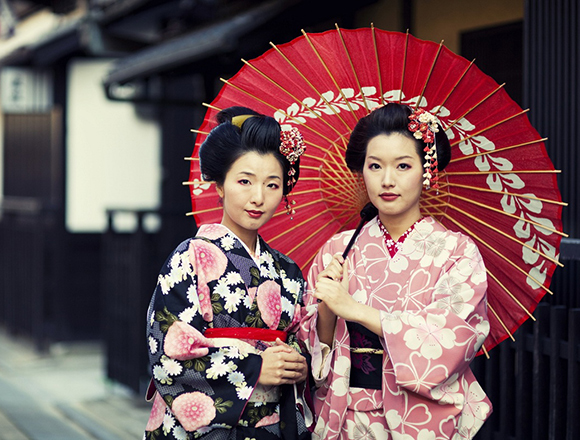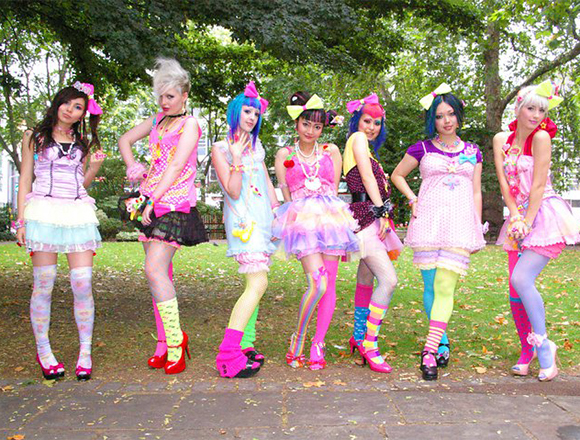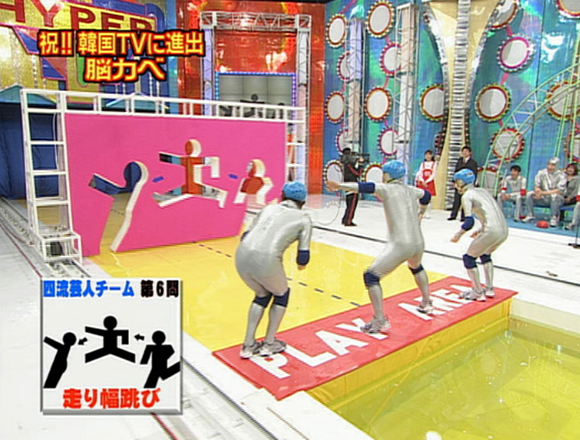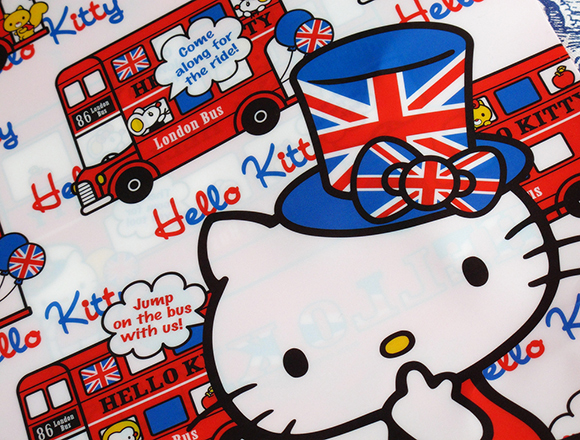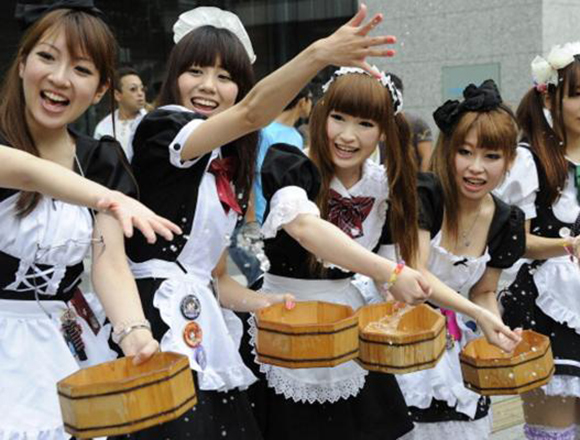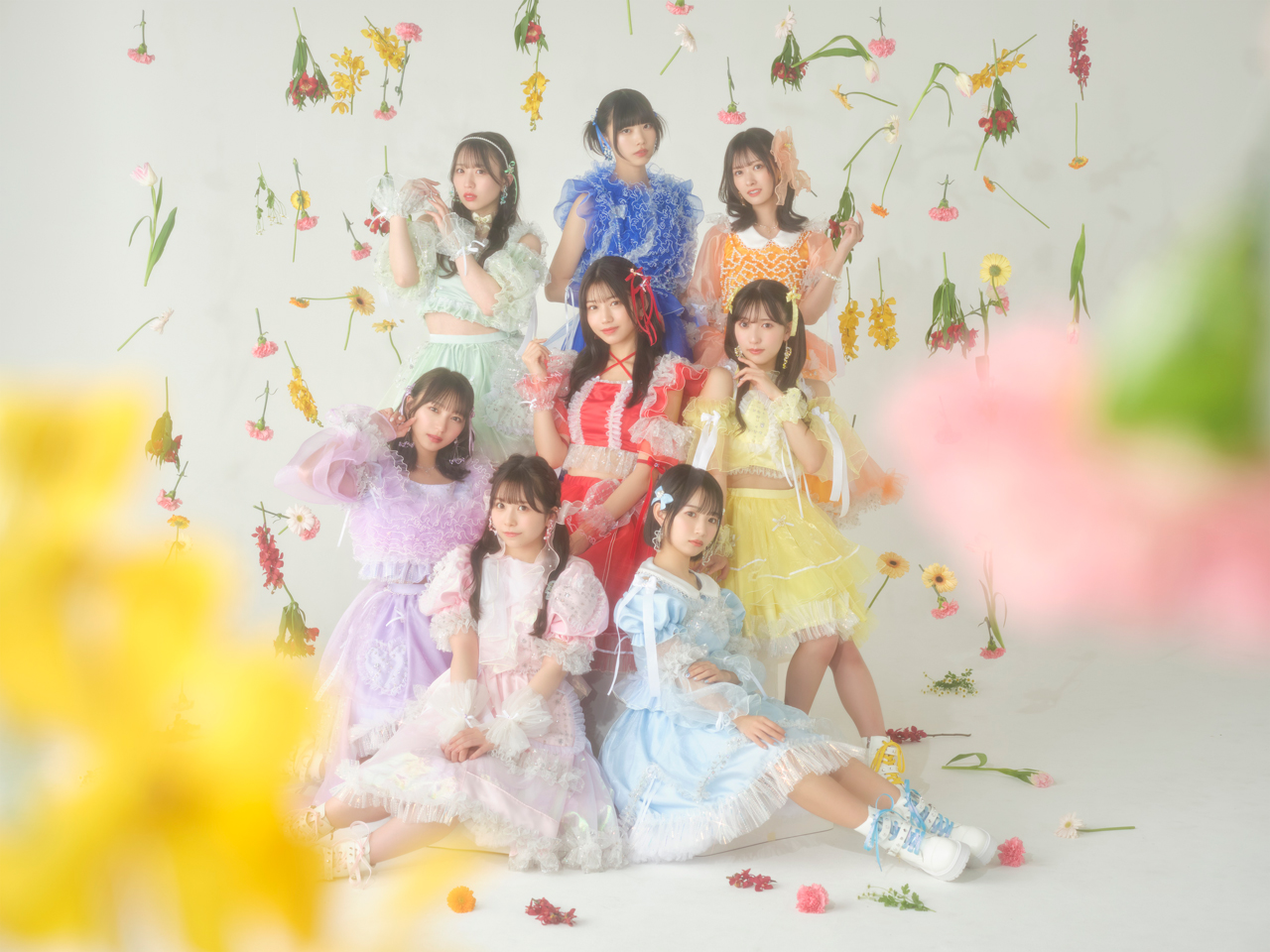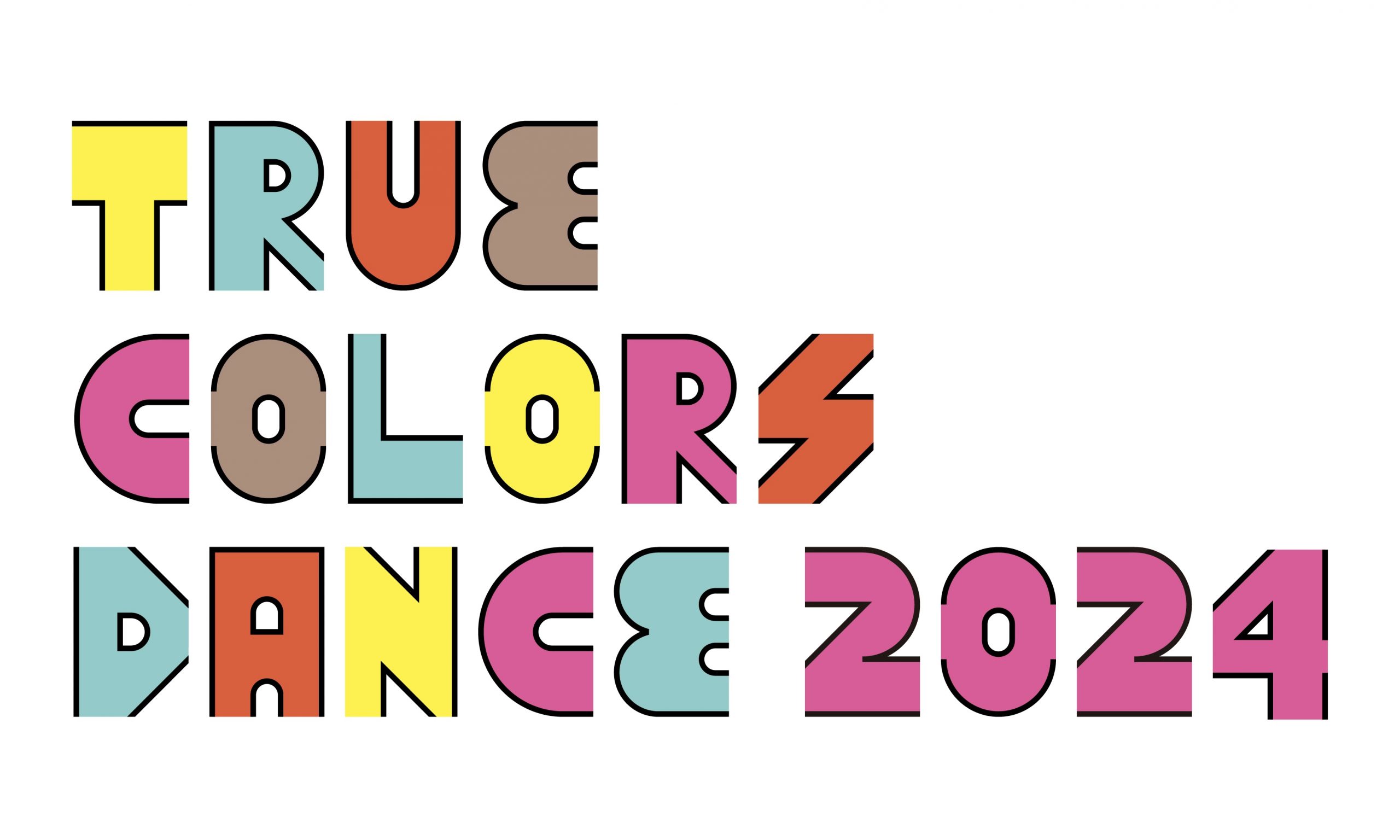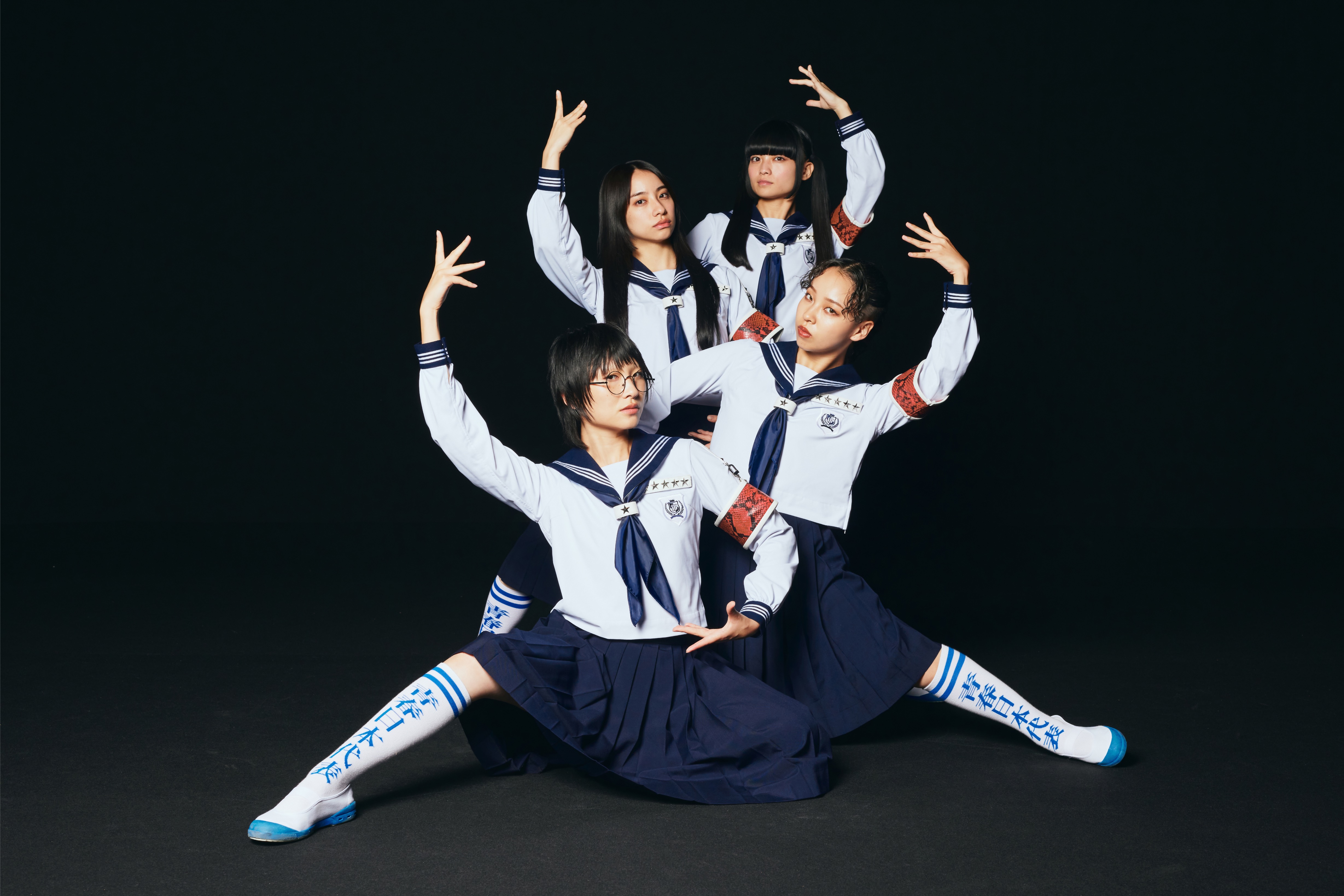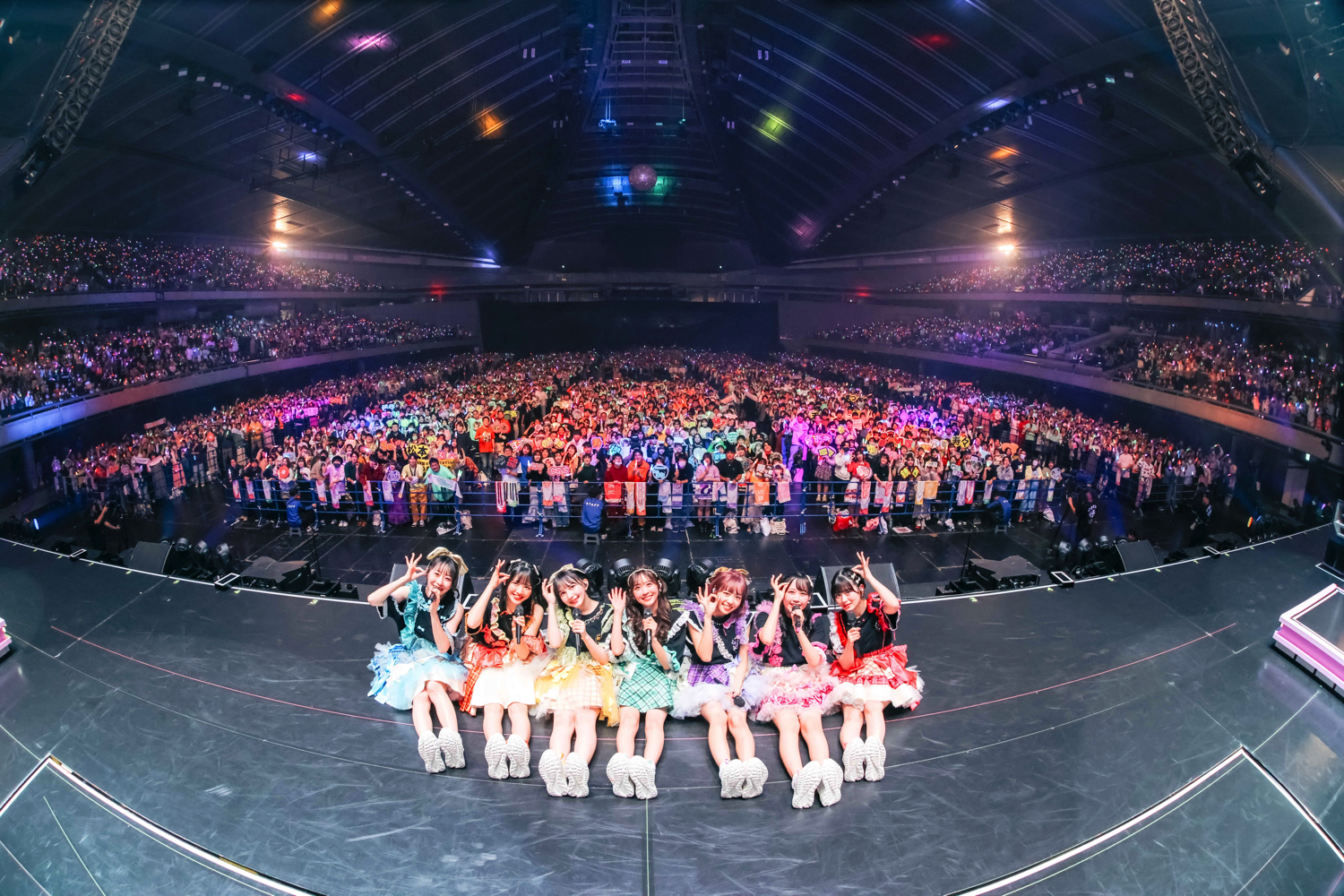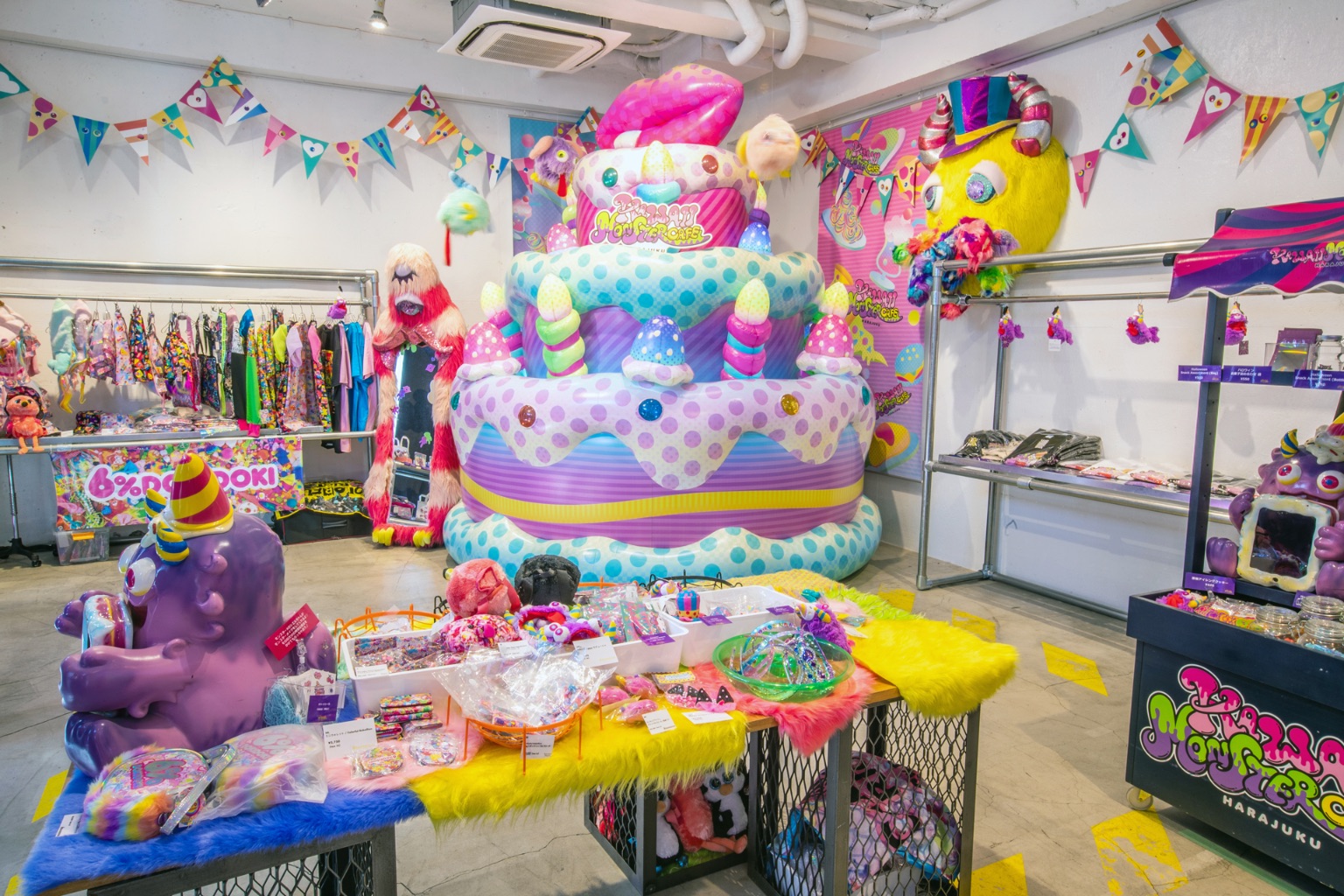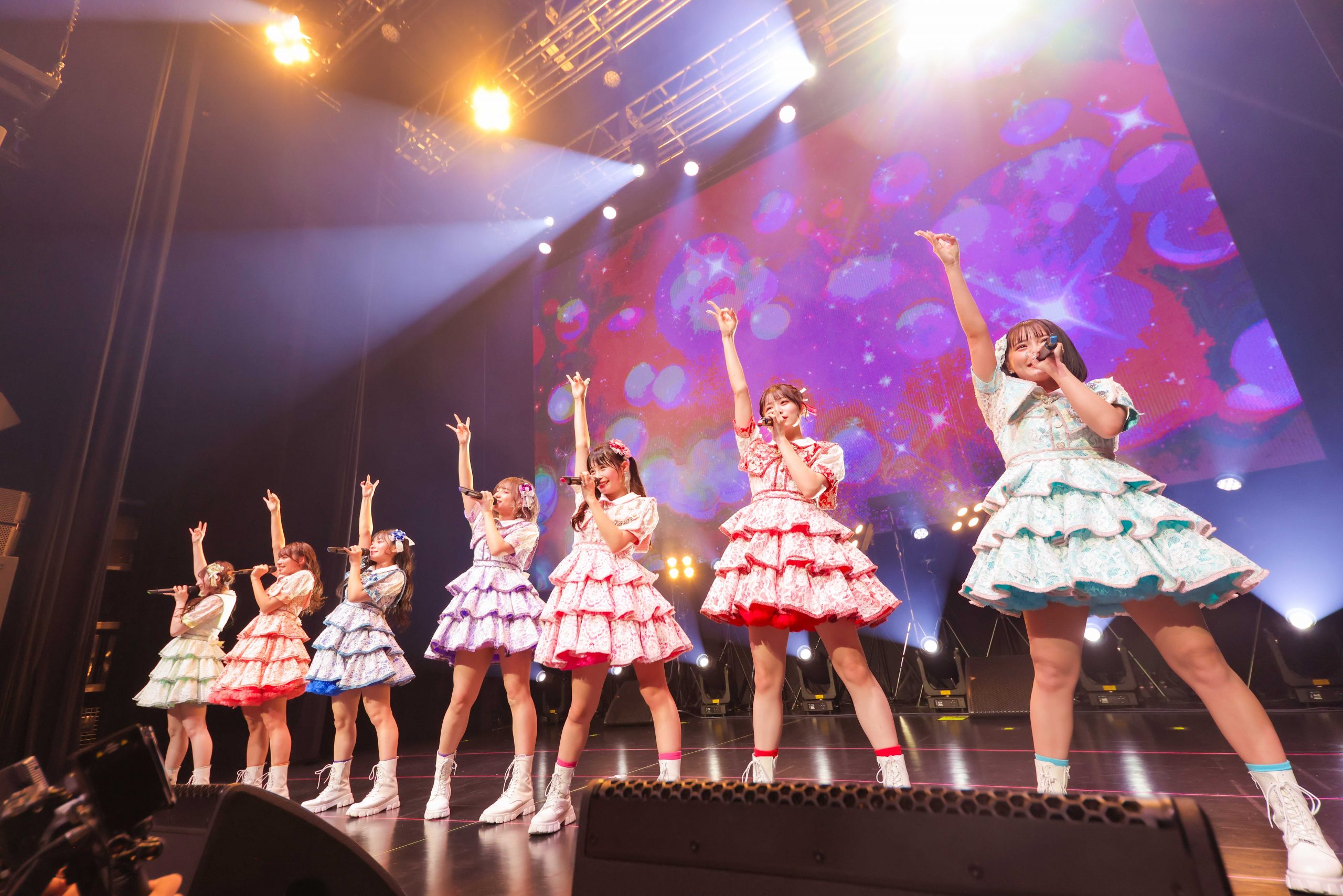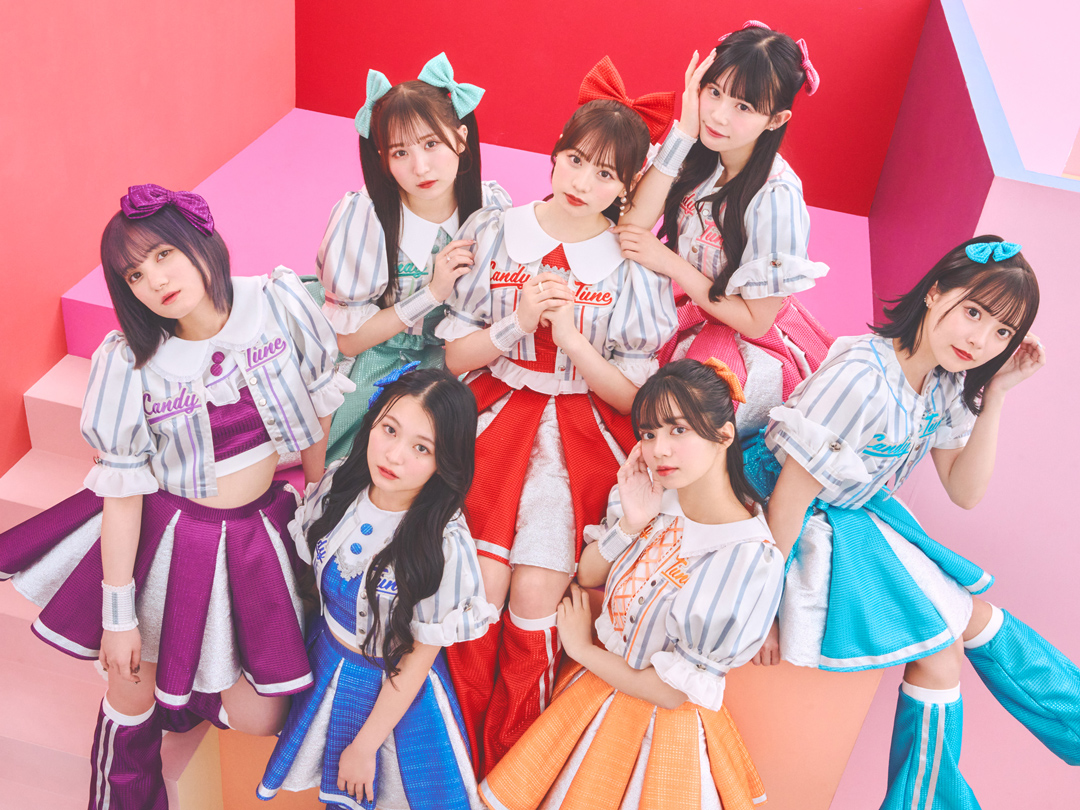MOSHI MOSHI Fact or Fiction Vol. 1: Quirky and Kawaii Japan?
04.December.2015 | FASHION / Uncategorized
Over the years, Japan has developed a reputation as a “weird” country. Whether because of general miscommunication brought on by different languages or because of the ongoing Western exotic-ization of all far-off lands, the East Asian archipelago has been saddled with a “wacky” and “quirky” image by many for decades.
So how do you separate fact from fiction? Moshi Moshi Nippon is here to help, by zooming in on various popular ideas about the country and figuring just how true (if at all) they are. For volume one, we dig into cuteness, toilets and vending machines, naturally.
Does every city and government branch of office have its own cuddly mascot?
“Kawaii” has long been a central appeal of Japanese products and people, and that concept has in recent years reached city and prefectural governments. They have busted out fuzzy mascots to rep for them, highlighted by Kumamoto Prefecture’s mischievous Kumamon. American TV show host John Oliver even talked about it on Last Week Tonight. Although the top-tier characters continue to enjoy a lot of love (and keep pulling in money), the mid-tier and bottom feeders of the government fuzzball circuit have toiled away in obscurity. This year, many started getting rid of their mascots, realizing they were too costly and weren’t pulling their weight.
Japanese toilets are super high-tech, yeah?
Non-Japanese media has long had an infatuation with the nation’s toilet seats, from major news outlets to The Simpson’s. They might not be quite as futuristic as they are sometimes painted out to be, but the covers you can buy at a typical electronics store are pretty darn nifty. Mid-range models come equipped with water-spraying features, along with heat options and even the ability to play audio in order to, errr, mask what’s happening.
Curious hitch: As prevalent as teched-up toilets are, there remains a large number of old-school squat-style options across the country, which are on the other end of the fancy scale. Hint – the further you head into the country, the more throwbacks you should expect to see. So don’t bank on a futuristic toilet experience every trip to the bathroom.
Are there vending machines everywhere, and can I really get practically everything from them?
There are, indeed, a lot of vending machines, even in smaller towns. Yet the pure number of them (around five and a half million of ‘em) isn’t the only reason so many fixate on these convenient machines in Japan. More often, they focus on what Japanese vending machines offer, everything from flowers to umbrellas to hot french fries. Those exist – but aren’t part of the common fabric of everyday life. These more off-beat dispensaries are rare. These weirder vending machines are every bit a novelty to Japanese people as to those visiting the island. There are certainly no shortage of vending machines, but most of them just sell drinks.
Are CDs still really popular?
Physical music media remains a staple in Japan – actual stores devoted to music still exist! – and the number of CDs moved in Japan is far more than in most countries. Yet the image of a Japan caught in the 1990s is also quite off base. Overall music sales keep dropping, and over the past year streaming music services such as Apple Music really started making inroads in the country. Plus, lots of Japanese music fans listen to music the same way as many all over the world do in 2015 – on YouTube.
So are ninja and geisha everywhere?
Alas, you are several centuries too late. However, there are a few places you can visit and feel like you’ve slipped through a time hole. For ninjas, book a train ticket out to the city of Iga in Mie, a town celebrated for its rich ninja history. They have a ninja museum offering a glance into what being a stealth warrior was like, along with a ninja show and the chance to throw shuriken (for a small fee). The place to see geisha walking around is a bit to the north of that town – the ancient capital of Kyoto, where in certain districts you can still see women serving as geisha walk the street.
Does everyone in Tokyo dress like a Harajuku street model?
Nope, as the name suggests, you’ll only really going to get this colorful experience in the Harajuku area (with some spillover into Shibuya). The bulk of people you’ll meet are dressed rather normally, as fast fashion – think Uniqlo – has become the norm in Japan over the last few years. Eye-popping looks can easily be found in fashionable corners of the country, but don’t expect train rides surrounded by Kyary Pamyu Pamyu back-up dancers.
Are the game shows super weird?
Well, not really, at least compared to back in the 1980s and 1990s when they were a bit more extreme. Wait, actually yes they still are. But the golden days of programs such as Takeshi’s Castle, which featured contestants taking part in all sorts of nutty challenges. The subsequent decade saw plenty of wince-worthy games, but near the turn of the century the rules of what could be shown on TV (especially in terms of violence) changed. So today Japanese game shows tend to be more like quiz programs, with an awesome round of Human Tetris coming through every few years.
Is Hello Kitty really a cat?
It’s complicated. Hello Kitty, in fact, takes on the appearance of a cat, but researchers and her parent company Sanrio have come out she isn’t a cat in the way most of us probably imagine a feline (walking on four legs). To paraphrase a Sanrio (PR, shhh) person, she isn’t a human but also not a cat. Adding to this, Hello Kitty owns a pet cat named Charmmy Kitty who is a cat, walking on all fours.
Well, at least I’m positive Hello Kitty is from Japan!
Sanrio is a Tokyo-based company and Hello Kitty is a Japanese creation – maybe the ultimate Japanese representative of “kawaii” culture. Yet the actual character technically hails from the London suburbs, as does her whole family. This owes to a boom in British culture that was prevalent during the mid 1970s when Kitty was dreamed up.
I don’t know what to believe anymore. Uhhh maid cafes are a real thing right?
Lucky for you, they are! In big cities, you can find them in most major neighborhoods, and practically on every corner within Akihabara. Yet, like a lot of things that get focused on by the West in regards to Japan, they aren’t common hangout spots for anyone. They are fun places to go every once in awhile, more for a one-time “well that was something” experience than anything else. But they do exist!
RELATED ENTRIES
-
The KAWAII LAB. idol project has announced a new group, SWEET STEADY. Previously, the project has been responsible for the formation of FRUITS ZIPPER, who won the Best New Artist award at the 2023 Japan Record Awards and whose song Watashino Ichiban Kawaiitokoro has pulled in 900 million views on TikTok, and CANDY TUNE, who filled Zepp Shinjuku to capacity just six months after their debut.
Eight members have been selected for the new group: Ayu Okuda, Yui Otoi, Natsuka Kurita, Rise Shiokawa, Mayumi Shiraishi, Nagisa Shoji, Mia Yanagawa, and Sakina Yamauchi. This will be the first KAWAII LAB. group in which all members have a history in the idol world—all eight girls have participated in various idol activities, including modeling, stage performances, and gravure shoots. Together, they have amassed over 1.8 million followers on social media even before their debut.
The group’s name, SWEET STEADY, is inspired by the hope that these sweet girls, like a bouquet of colorful flowers, will steadily grow step by step through their idol experiences. The group will be produced by Misa Kimura, general producer of KAWAII LAB.
Additionally, the group’s debut concert, KAWAII LAB. SESSION Vol.7 – SWEET STEADY, will be held at Ebisu’s The Garden Hall on March 4. All members of KAWAII LAB., including FRUITS ZIPPER, CANDY TUNE, and KAWAII LAB. MATES, are also scheduled to perform at the event.[SWEET STEADY Member Profiles / Comments]
■ Ayu Okuda : Blue

“Hi there, I’m Ayu Okuda!
I’m happy to announce that I’ll be continuing my activities as part of SWEET STEADY. I never thought I’d be able to be an idol under KAWAII LAB. again, so I’m super excited to be debuting with a new group and am looking forward to meeting all the fans!
I hope we can all aim higher and make our dreams come true! I’ll give it my all! Thank you for your support!”X: @ayu_ss0107
Instagram: @okudaayu
TikTok: @okudaayu■Yui Otoi : Light Blue
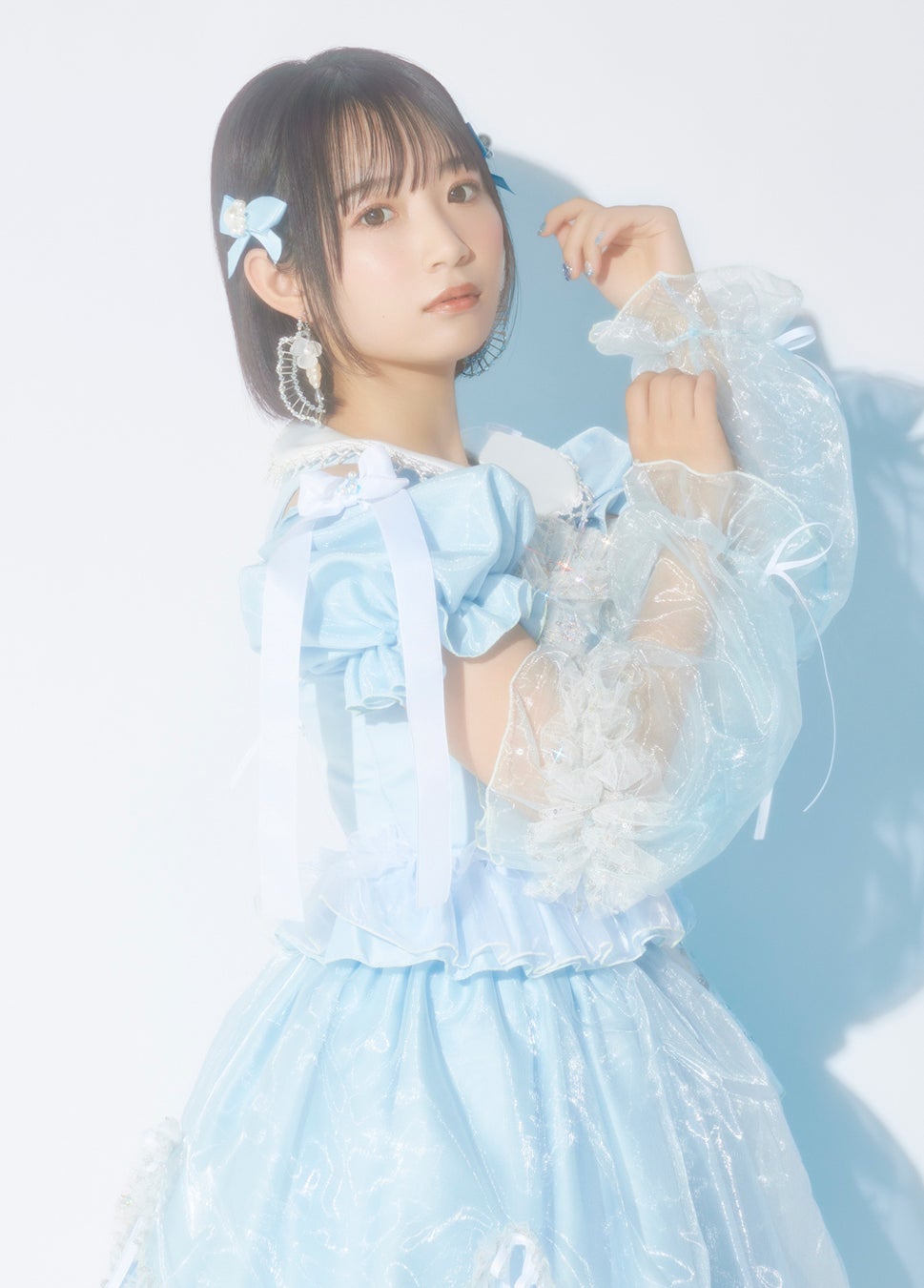
“I’m Yui Otoi, also known as Oyui! I’m pleased to announce that I’m now a member of SWEET STEADY, a new KAWAII LAB. idol group. I’m so happy to be working with these kind girls that I love so much.
I already feel like this group will be a powerhouse since each member has their own personality, strengths, and abilities.
At the moment, we’re practicing a ton and growing a lot. We’re going to give it our all from the very start, so I hope you’ll stick with us from the beginning and not miss a single second!
I’m going to do my best to bring a lot of happiness to those who support me! Thank you so much!”
X: @yui_ss0109
Instagram: @otoi_yui_19
TikTok: @otoi_yui_19■Natsuka Kurita : Pink
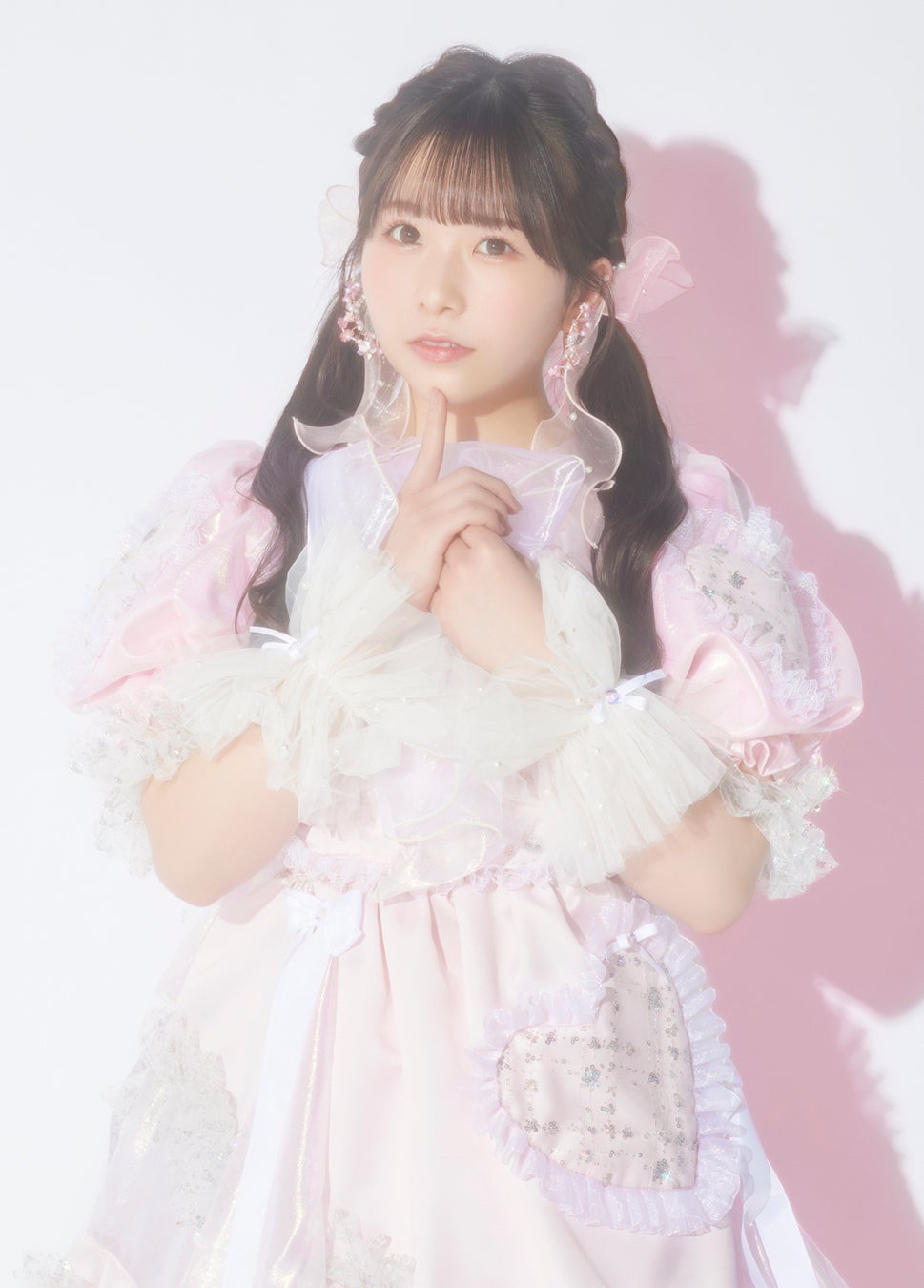
“I’m Natsuka Kurita from Kyoto!
I’m excited to announce that I’m now a member of the new KAWAII LAB. idol group SWEET STEADY. It’s so thrilling to make my idol debut with KAWAII LAB., something I’ve wanted so badly! Each member has their own personality, and I believe that we’ve gathered together some of the strongest members who love each other very much. I would like to make big dreams come true with SWEET STEADY!I’ll continue to be grateful and grow every day! Please look forward to the debut of SWEET STEADY and enjoy the happiness we bring!”
X: @natsuka_ss0719
Instagram: @n_wanwan3
TikTok: @n_wanwan3■Rise Shiokawa : Purple

“I’m Rise Shiokawa!
I’m here to announce that I’ve been chosen as a member of SWEET STEADY, a new group from KAWAII LAB. I’m so happy and proud to work with some of the strongest and most incredible members, all of whom embody both kindness and power. Although we’re just starting, I’d like the eight of us to become incredible idols so that one day we can all bloom as a single flower.
I’d like to make my dream come true with all of you who support me, as well as with the other members and the staff! Thank you very much for your support.”
X: @rise_ss0731
Instagram: @rise_shio
TikTok: @rise_7■Nagisa Shoji : Orange
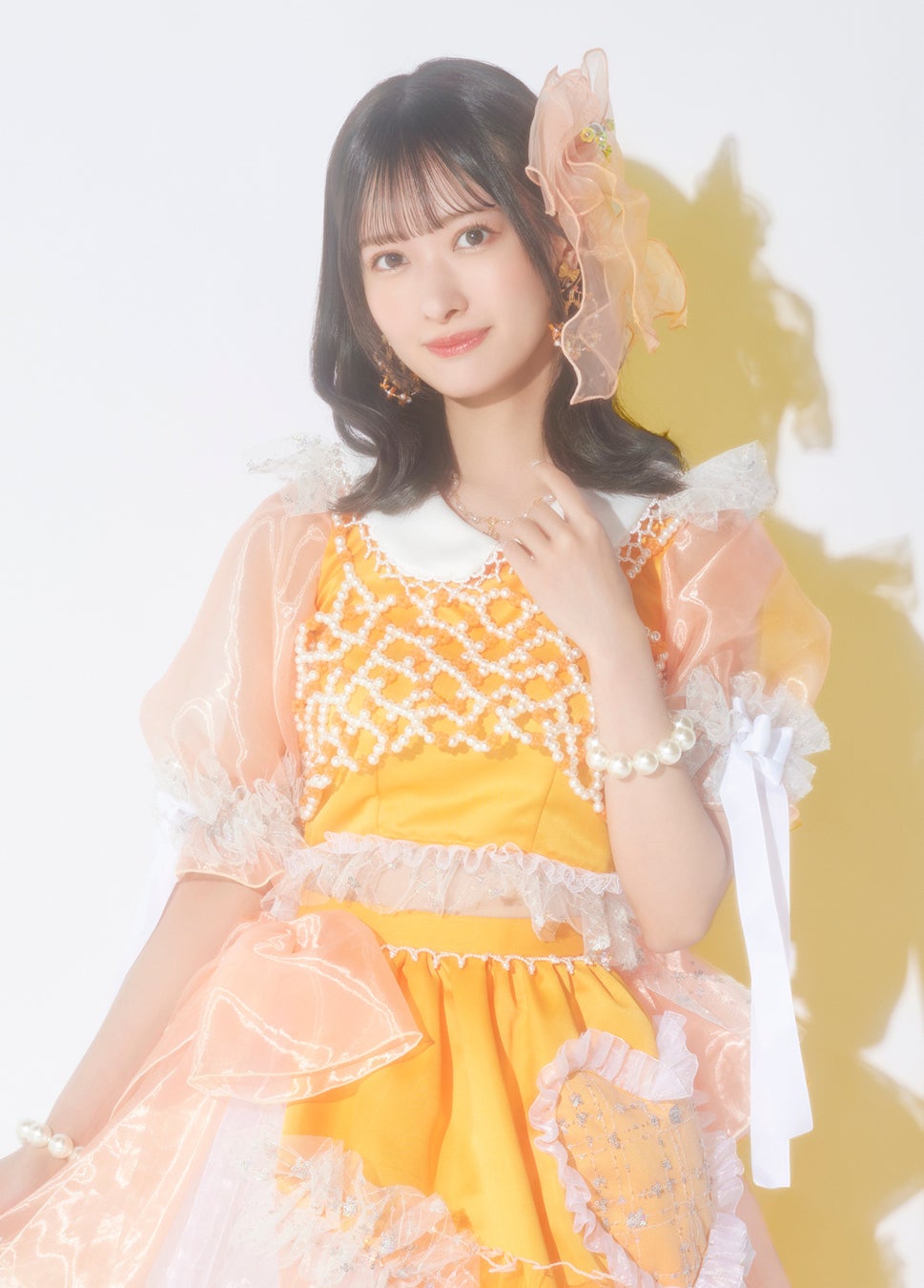
“I’m Nagisa Shoji and I’m pleased to announce that I’ve been chosen to be a member of SWEET STEADY, a new group from KAWAII LAB.!
I’m so thrilled to make my debut with the strongest members in such a supportive environment!
It’s a miracle that eight such strong members have come together, and we’ve heard people say “It’s hard to believe that they haven’t even debuted yet!” We’ll do our best to make our dreams come true one by one, hand in hand, and to make our cheering fans happy!
We’d like to become a group that can add color to the idol world! Thanks for supporting us!”X: @nagisa_ss1029
Instagram: @nagyuuu_official
TikTok: @nagyu_official■Mayumi Shiraishi : Red
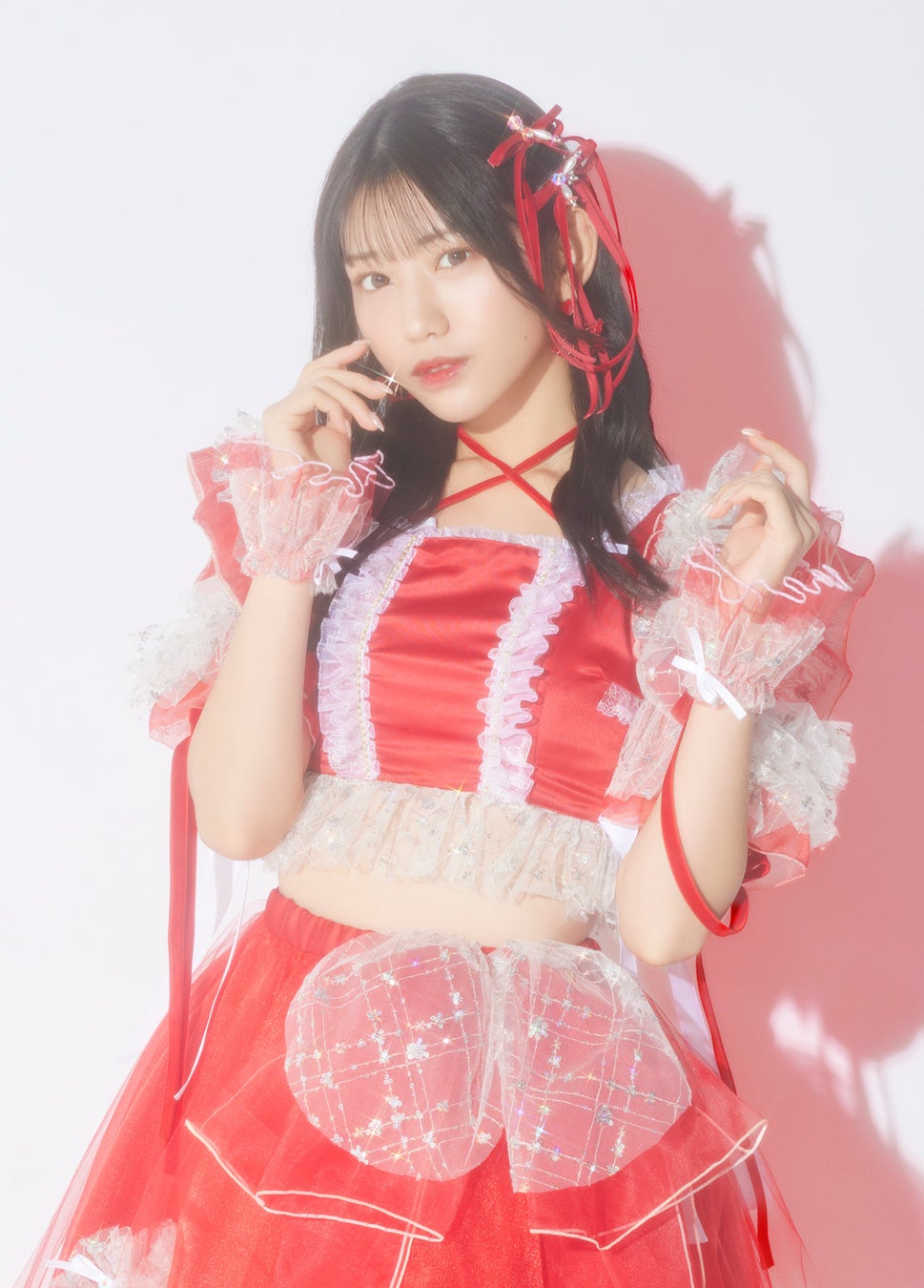
“My name is Mayumi Shiraishi!
I’m pleased to announce that I’m now a member of SWEET STEADY, a new idol group from KAWAII LAB.!
I’m very happy to be able to work hard as an idol alongside such cute and kind people as we aim to be the top performers in KAWAII LAB! I’m really looking forward to the days ahead when we can work together as SWEET STEADY! I think we have the eight strongest members out there, so I’d be thrilled if you can watch and support us as we grow!
Thanks for cheering for SWEET STEADY!!”X: @mayumi_ss1227
Instagram: @mayumi.1227
TikTok: @shiraishi_mayumi■Mia Yanagawa : Mint Green

“I’m Mia Yanagawa! I’m excited to announce that I’m now a member of the new KAWAII LAB. idol group SWEET STEADY. It’s a dream come true to work with some of my favorite people and some of the most skilled girls out there at my dream company!
With this happiness in mind, I’ll never forget my original intentions, I’ll always be grateful, and I’ll do my very best!Alongside the other members, I’d like to make big dreams come true and repay those who have helped us by becoming successful!”
X: @mia_ss0211
Instagram: @miapichan_
TikTok: @mia_pyon_■Sakina Yamauchi : Yellow
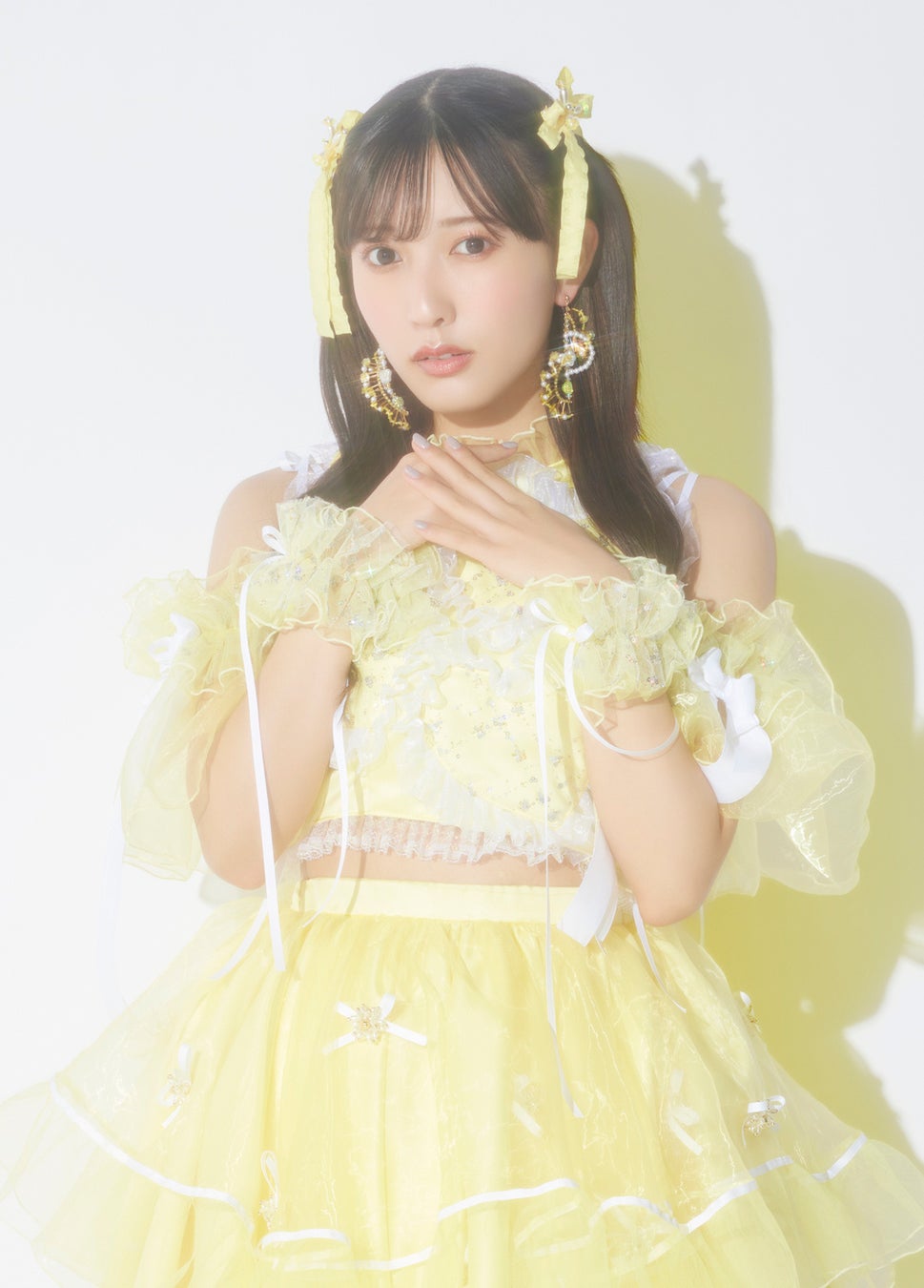
“My name is Sakina Yamauchi!
I’m happy to announce that I’ll be continuing my activities as part of SWEET STEADY!
I’m so excited to be able to work with these lovely members who I care for so much!
My goal is to spread as much happiness as I can while always remembering to be grateful for the incredible opportunity to become an idol in such a warm environment!
I hope to make many big dreams come true with SWEET STEADY and everyone who supports us! Thank you so much!”X: @sakina_ss0229
Instagram: @sakina_yamauchi
TikTok: @sakina_yamauchiInformation
<SWEET STEADY Profile>
SWEET STEADY is a new idol group created by KAWAII LAB., a project spearheaded by ASOBISYSTEM to introduce Japanese idol culture to the world. The producer of the group is model and celebrity Misa Kimura, the former leader of the idol group Musubizm and the general producer of KAWAII LAB. The group’s name, SWEET STEADY, is inspired by the hope that these sweet girls, like a bouquet of colorful flowers, will steadily grow step by step through their idol experiences.
X: @SWEET_STEADY
Instagram: @sweet_steady_
YouTube: @SWEET_STEADY
TikTok: @sweet_steady<Debut Concert Information>
Title: KAWAII LAB. SESSION ~SWEET STEADY~
Venue: Ebisu’s The Garden Hall
Date: March 4, 2024
Time: Doors open 17:00 / Show starts 18:00
Admission: Priority Standing ¥7,000 / General Standing ¥3,000[Tickets]
KAWAII LAB. FC Presale: Priority Standing / General Standing
January 23, 2024 at 18:00 ~ January 29, 2024 at 23:59
URL: https://kawaiilab.asobisystem.com/news/detail/21463PG Preorder: General Standing only
January 23, 2024 at 18:00 ~ January 28, 2024 at 23:59
URL: https://w.pia.jp/t/kawaii-lab-vol07/General Sales
February 3, 2024 at 10:00~
URL: https://w.pia.jp/t/kawaii-lab-vol07/More details will be announced on KAWAII LAB. and SWEET STEADY’s official social media channels in the future.
-
ATARASHII GAKKO! Wows Audience of 12,000 at First Ever Budokan Concert
12.January.2024 | MUSIC
The vocal-dance group ATARASHII GAKKO! made their global debut in 2021 on the 88rising label, which promotes Asian music and culture to the world. The four members have continued to attract attention over the past few years, recently performing on NHK’s New Year’s staple Kohaku Uta Gassen for the first time and starting their own TV show. On January 9, the group held its first concert, SEISHUN SHURAI (Youth Invasion), at Nippon Budokan.


When the first notes of Tokyo Calling began playing, all 12,000 fans in attendance instantly reached maximum excitement as they focused their attention on the 360-degree stage. The LED lights covering the stage began to shine and the members, clad in red sailor uniforms, appeared to the sound of wild applause.
After performing Toryanse, a new song released from embargo just before the start of the concert, and thePineapple Kryptonite Remix, the members began a brief MC, eager to address and thank the audience. “All of you fans out there, can you see us in all 360 degrees? We’ve dreamed of the day that all four of us would be here, standing on our own feet on this legendary stage.”


After a short intermission, the group moved on to a block of songs appearing on their first and second albums, including Night Before the Exam, Tomei Boy, Koi Geba, and other fan favorites, followed by a medley featuring Freaks, NAINAINAI, and other songs released following the group’s international debut in 2021. Rin performed finger drumming and the members amused fans with a cover of the Beastie Boys’ classic Intergalactic while wearing traffic guard costumes.

The audience’s excitement only continued to grow as the girls called out, screaming “Budokan, here we go!” before breaking into an intense performance of Saisyu Jinrui filled with head-banging and shoulder rides. During the last part of the concert, ATARASHII GAKKO! performed their new song BORN TO BE FREE!!!! for the first time. The track’s fast-paced sound immediately captured the hearts of fans, and the girls closed the main event with SEISHUN WO KIRISAKU HADO, an extremely popular song at their live performances.
 The first encore song, unsurprisingly, was OTONABLUE, the global hit that has pulled in over 3.3 billion views on TikTok. The audience cheered, joining in with the viral ‘neck swing’ dance during the chorus.
The first encore song, unsurprisingly, was OTONABLUE, the global hit that has pulled in over 3.3 billion views on TikTok. The audience cheered, joining in with the viral ‘neck swing’ dance during the chorus.During the final MC portion, there was a tearful moment in which Suzuka cried and hugged the other members. “I don’t want anyone to suffer alone,” she said. “We’re all here together. Thank you all so much.”
The group’s first concert at Nippon Budokan ended with Mayoeba Toutoshi, known as a common final song at ATARASHII GAKKO! concerts. “If you ever feel lost, you can always rely on us–on our concerts, our videos, and everything else,” Suzuka said.


Along with the announcement of a new fan club, the group’s first fan club tour, which will visit five prefectures, was announced during the show. Additionally, the new song Toryanse will be available to stream on January 26.


■SET LIST
Tokyo Calling
Giri Giri
Toryanse
Pineapple Kryptonite (Yohji Igarashi Remix)
Night Before the Exam
Sekigae Gattuso
Tomei Boy
Koi Geba
Dokubana
Shiritai
Freaks
NAINAINAI
Fantastico
Pineapple Kryptonite
Intergalactic
Saishuu Jinrui
Janaindayo
BORN TO BE FREE!!!!
SEISHUN WO KIRISAKU HADO<ENCORE>
OTONABLUE
Que Sera, Sera
Mayoeba ToutoshiInformation
■Celebrating the 1st Budokan Concert! ATARASHII GAKKO! WOWOW Special
To commemorate the group’s performance, WOWOW will stream the concert and feature ATARASHII GAKKO! for three consecutive months. In February, a music video collection will be aired covering the group’s past activities, and in March, a ‘Special Edition’ will be broadcast featuring footage from the January 9 Budokan performance along with interviews with each of the members.Special Site
https://www.wowow.co.jp/music/leaders/<Fanclub Information>
The Official ATARASHII GAKKO! Fanclub ‘ATARASHII GAKKO!’s SEISHUN CLUB’
URL: https://www.fanclub.ag-official.com/ja/home<Tour Information>
ATARASHII GAKKO! NEW FANCLUB TOUR 2024 (Tentative Title)
May 5, 2024 Zepp Fukuoka
May 6, 2024 Zepp Osaka Bayside
May 9, 2024 Zepp DiverCity
May 16, 2024 Zepp Sapporo
May 28, 2024 Zepp Nagoya[Tickets]
Available: January 9 ~ January 31, 2024 at 23:59
Where to Buy: https://www.fanclub.ag-official.com/tickets<New Song Information>
Toryanse – ATARASHII GAKKO! (Digital Single)
Release Date: January 26, 2024 -
FRUITS ZIPPER Member Yui Sakurai to Release 1st Photobook in February 2024
Having celebrated her 10th year in showbiz in 2023, Yui Sakurai, a member of the popular idol group FRUITS ZIPPER, will release her first photobook on February 20, 2024.
The photos were shot in Phuket, Thailand, and the Phi Phi Islands, which Sakurai had dreamed of visiting. On the world-class island of Phuket, the artist experienced riding an elephant along the beach and enjoyed a romantic floating breakfast in a warm pool. When visiting the Phi Phi Islands, Sakurai visited Maya Bay, which served as the location for the film The Beach and is known by many as ‘Phantom Beach.’ Along with some swimsuit shots, Sakurai also makes her first appearance in lingerie.
A special edition of the photobook including an acrylic stand, a special book, and an exclusive box will be sold exclusively at HMV&BOOKS online, HMV&BOOKS, HMV (participating stores), and Tower Records (the Shibuya store and online). The special book features an exclusive dialogue between Sakurai and the other members of FRUITS ZIPPER, snapshots of their many outfits, and other rare personal details. Those who purchase the special edition will also be invited to attend an exclusive event.
<Comment from Yui Sakurai>
“I am so excited to announce the release of my first photobook! Shooting this book overseas during the 10th anniversary of my idol career was a dream come true. The release date is February 20, which is the last day I’ll be 23 years old. I’m so lucky to be able to experience so many wonderful things!
Thank you so much to the fans and all of the people whose support has made this dream come true! In the book, you’ll see plenty of photos that show not only my on-stage self, but also my more relaxed self and a more personal side of me! I hope this release will give more people an opportunity to get to know me…I hope you’ll enjoy it…”
Information
Yui Sakurai’s 1st Photobook (Title to be announced)
Release Date: February 20, 2024
Specifications: 128 pages / Softcover
Publisher: KobunshaOnline Stores:
・Standard Cover (Amazon) http://x.gd/oFHwA
・Seven Net Exclusive Cover http://x.gd/XRqga
・Rakuten Books Exclusivev Cover http://x.gd/K16aG
・[Special Edition] HMV&BOOKS http://x.gd/m8tBo
・[Special Edition] Tower Records http://x.gd/0Kpi1
-
Miyu and ATARASHII GAKKO! to Participate in ‘True Colors DANCE 2024’ Dance Project for Diversity
21.December.2023 | MUSIC
As part of the True Colors Festival -Super Diversity Arts Festival-, the diversity dance project True Colors DANCE 2024 will be held alongside several other exciting events. The festival invites artists and audience members to celebrate their individuality in terms of disability, gender, age, language, and nationality through performing arts. Both Miyu and ATARASHII GAKKO! will participate in the project.
Held in September 2019, True Colors DANCE wowed audiences and subverted expectations when focusing on disabilities. The multinational world-class breakdance team ILL-Abilities, whose members all have physical disabilities, and the Japanese group Bboy Shigekixx came together for some intense battles, leaving an impression on viewers.
In 2024, a group of unique dancers, many of whom are junior high and high school students, will hit the stage along with ATARASHII GAKKO!, the dance and vocal group taking the world by storm. Under the themes of individuality and freedom, the unpredictable, wild, and powerful concert is sure to impress audiences next March. The theme song for the event has been announced as Odoru Honnou 001 by ATARASHII GAKKO!
Miyu, active in many fields both in Japan and abroad, and the group SOCIAL WORKEEERZ will work as mentors to support the True Color DANCERS. The latter is led by DAIKI, a dancer with chondrodysplasia, and its members work in the welfare sector helping both children and the disabled.
The schedule for the event next month will be posted on the special True Colors DANCE 2024 website, as well as the official YouTube channel and social media accounts. Details can also be found on the website of the high school dance club magazine D-S-K. We hope you’ll look forward to seeing how the True Colors DANCERS transform the stage with their unique personalities next year!
The theme song for the project, Odoru Honnou 001, will also be aired as the January theme of HNK’s SDGs campaign ‘Minna no Uta ~Hirogare! Irotoridori.’ The project aims to share the fundamental power of dance with a wider audience.
<Comment from ATARASHII GAKKO!>
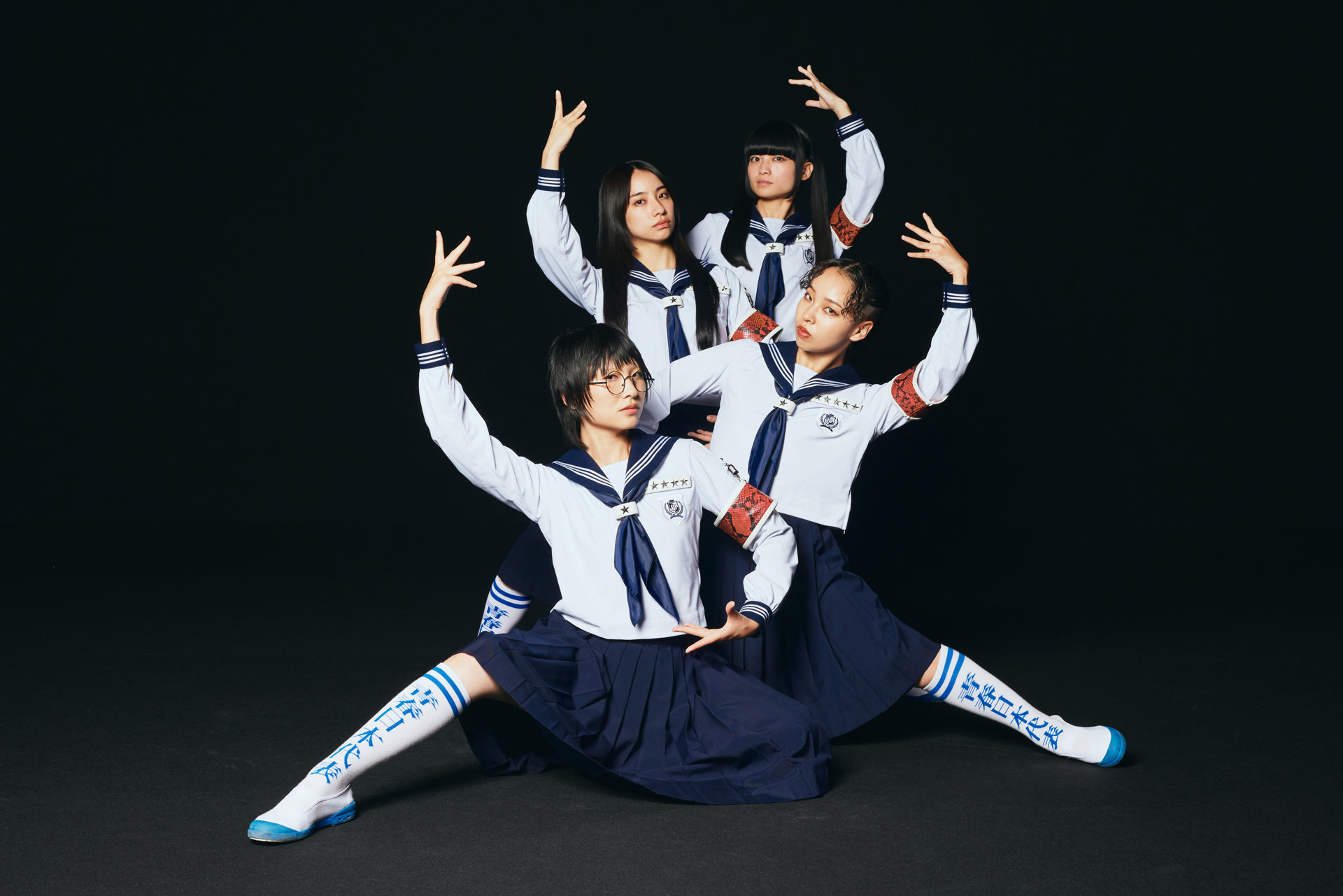
“Hi there, we’re ATARASHII GAKKO!
We’re happy to announce that our song Odoru Honnou 001 has been chosen as the theme song for True Colors DANCE 2024! When we started performing overseas, we realized that dance is a form of communication that everyone can understand, regardless of differences in gender, language, nationality, or background. We’re looking forward to going all out on stage with these uniquely individual dancers while our song plays! We’ll put on a special show for everyone, so please come watch!”<Comment from Miyu>

“Last year, I had the amazing opportunity to see True Colors Festival THE CONCERT 2022 in person and I was shocked by the wonderful performance. I hoped that more people would know about it, so when I was invited to participate, I immediately said yes. Though it’s my first time participating, I’ve been looking forward to it the moment it was announced.
I’d like this year’s performance to express each dancer’s personality, and I hope that they can inspire the world itself through dance. I hope to open up even more possibilities while respecting the unique qualities of every person, so let’s have a fun and memorable time together!”Information
About the True Colors Festival
The True Colors Festival is an experimental project by The Nippon Foundation’s DIVERSITY IN THE ARTS division, which aims to create a future in which everyone can live together while valuing their own individuality (True Colors). Starting in 2019, the project imagines a future in which those with disabilities and other differences more often appear on stage, and teaches audiences how exciting and unique an experience this can be.
For more information on past initiatives, please visit the True Colors Festival website.
-
ATARASHII GAKKO! appeared on the popular U.S. late-night show Jimmy Kimmel Live!
15.December.2023 | MUSIC
After successfully holding their first solo arena concert in Japan and completing their first overseas tour for a total of 10 shows, ATARASHII GAKKO! performed on the popular ABC late-night show Jimmy Kimmel Live! on December 7, 2023.
Hosted by popular comedian Jimmy Kimmel, Jimmy Kimmel Live! has been on the air since 2003 and attracts more than 1.3 million viewers each night. Countless famous guests have appeared on the program, including Taylor Swift, BTS, BLACKPINK, and former U.S. President Obama.
The episode featuring ATARASHII GAKKO! also features Maroon5 vocalist Adam Levine and actress Halle Berry. The group will perform Tokyo Calling, released in October by the record label 88rising, and the performance will be available on the program’s official YouTube channel following the broadcast.
Information
Jimmy Kimmel Live!
Jimmy Kimmel Live! Official Site
https://abc.com/shows/jimmy-kimmel-live/news/schedule/jkl-schedule-for-12042023YouTube
https://www.youtube.com/@JimmyKimmelLive<Release Information>
ICHIJIKIKOKU DELUXE – ATARASHII GAKKO!
Release Date: December 13, 2023
*Now available to preorder[Tracklist]
01. JANAINDAYO (Theme song for the film Baby Assassins 2)
02. SEISHUN WO KIRISAKU HADO (Opening theme song for the TV Asahi series ATARASHII GAKKO!’s Extracurricular Lesson)
03. Giri Giri
04. Suki Lie (Theme song for the TV Tokyo drama series Nanika Okashii 2)
05. OTONABLUE
06. Otome no Bigaku
07. Odoru Honno 001
08. OTONABLUE (Hyper School Remix)Preorder here
https://leaders.asobisystem.com/news/350876 -
Concert Report: ATARASHII GAKKO! Mesmerizes Packed Crowd in St. Paul during the Final U.S. Performance of the Seishun Tour
Upon my arrival on Thursday, November 16, I wondered if the intimate space of the Amsterdam Bar & Hall in downtown St. Paul, Minnesota would be able to contain the massive personalities of ATARASHII GAKKO! The four members never hold back–either on or off the stage, it seems–and as fans began to arrive en masse, it was clear that the Twin Cities wasn’t lacking a fanbase for the dance-vocal group currently taking the world by storm.
Just under three weeks prior, ATARASHII GAKKO! had performed for a whopping 8,000 fans at their first arena concert, held at the famed Tokyo Metropolitan Gymnasium. Now, they were preparing to walk out to a crowd of only a few hundred, most with cocktails in hand and lyrics memorized. The majority of the concertgoers seemed more than passingly familiar with the group, though a few bewildered onlookers couldn’t possibly have been prepared for what the night would bring. Needless to say, although the stage was quaint, the concert was anything but. None of the members’ usual energy had diminished, and despite this being the final stop on the U.S. portion of the tour, there wasn’t a hint of fatigue to be found during the hour-long set.
The show was sold out weeks in advance, and plenty of eager fans equipped with glowsticks and wearing the group’s signature socks rushed toward the stage to secure the best spot. Other attendees swarmed the merch booth, eager for a hoodie or bag to show their pride.
For the show to be standing room only was a boon–it’s unlikely anyone in the audience could have remained seated once the four girls appeared following the intro, quickly leading into the high-energy number Seishun wo Kirisaku Hado. Fans were instantly chanting in unison, responding eagerly as Suzuka addressed the room, her enthusiasm bordering on contagious.
Nine years after its formation, ATARASHII GAKKO! Recently announced that the group would be making its Kouhaku debut at this December’s 74th Kouhaku Uta Gassen. The New Year’s Eve staple features performances from the most popular musical acts of the year, proving that the group has found its footing both domestically and abroad.
Fans swatted balloons around and jumped in time to the beat as saisyu jinrui, one of the group’s older songs, began to a sea of applause. Suzuka, Rin, Mizyu, and Kanon didn’t seem phased to hear the largely American audience singing along in Japanese, though their appreciation and joy were palpable as they moved in perfect unison. CANDY and The Edge followed, with the members taking turns asking the audience to raise their hands or clap along. Anyone who wasn’t already a fan was likely converted by the commanding energy sweeping the room, making it impossible not to move along.
During the MC portion, the members showed off their English, asking the audience “do you know Seishun?” They explained that it means “to live your life to the fullest,” and quickly invited the audience to celebrate this important idea. Throughout the show, they would often initiate a call and response, teaching those assembled a few words in Japanese and expressing their interest in returning to America for another tour in the future. Given how quickly the tickets sold out this time around, the sky’s the limit for concerts in the future.
In January, ATARASHII GAKKO! will perform at Nippon Budokan for the first time, ushering in a new era of popularity for the four members. It makes me wonder what massive U.S. venues may someday play home to another of their unforgettable shows. Madison Square Garden? Radio City Music Hall? The Hollywood Bowl?As the question “Suki?” rang out, the crowd cheered, as Suki Lie has become a fan favorite since its release earlier this year. The girl’s choreography, as usual, was a highlight of the show, with Fantastico and the Yohji Igarashi remix of Pineapple Kryptonite quickly sending the audience into a rhythmic frenzy.
Just in front of me, I watched a couple mimic the vast majority of moves in perfect unison, taking time to laugh and joke when they failed to hit the mark. That’s the essence of ATARASHII GAKKO!–fun. The group represents ‘fun’ in its purest form, asking fans to recall the freedom of youth and to reach out to grasp it one more time, without fear of failure or embarrassment. Dance as if no one is watching, sing along in a language you cannot understand, and dress up in a school uniform despite being in your upper 30s. Why not?
As expected, the entire building shook as fans marched along during the group’s newest release Tokyo Calling. It had been enough of a warm-up, and as each of the girls placed a hand behind their heads, Otona Blue, the group’s magnum opus, rang out to a sea of screams. The track has amassed an incredible response on TikTok over the past year; this, despite being released way back in 2020. ATARASHII GAKKO! performed the song on THE FIRST TAKE, with the YouTube video now sitting at 50 million views. Everyone likely woke up with a sore neck after mimicking the classic choreography during the chorus.
After the explosive energy of WOO! GO! and NAINAINAI, the girls began to say their goodbyes, asking their fans to visit Japan someday and promising to return to St. Paul sometime in the future. Exiting the stage, they returned only a few minutes later after the audience demanded an encore, this time dressed more casually and eager to chat with a few fans at the front, one of whom was holding up a skilled drawing of Suzuka. The singer accepted the gift gladly, with other fans handing bouquets to the other members. As the lights in the venue brightened, the group snapped a few photos with the audience, creating the perfect keepsake for such a perfect night.
No one wanted such an energetic time to end, and the group knew just how to bid farewell to America–with the lively rock track Free Your Mind. The venue became a sea of clapping hands, and the concert came to a close on the highest possible note.
With a performance at Kouhaku fast approaching and their first-ever Budokan show only two months away, it’s almost certain that ATARASHII GAKKO! will return to the U.S. in the future. Until then, American fans will continue to support these four powerhouses from afar, eager for the day we meet–and dance–again.
Report: Carley Garcia
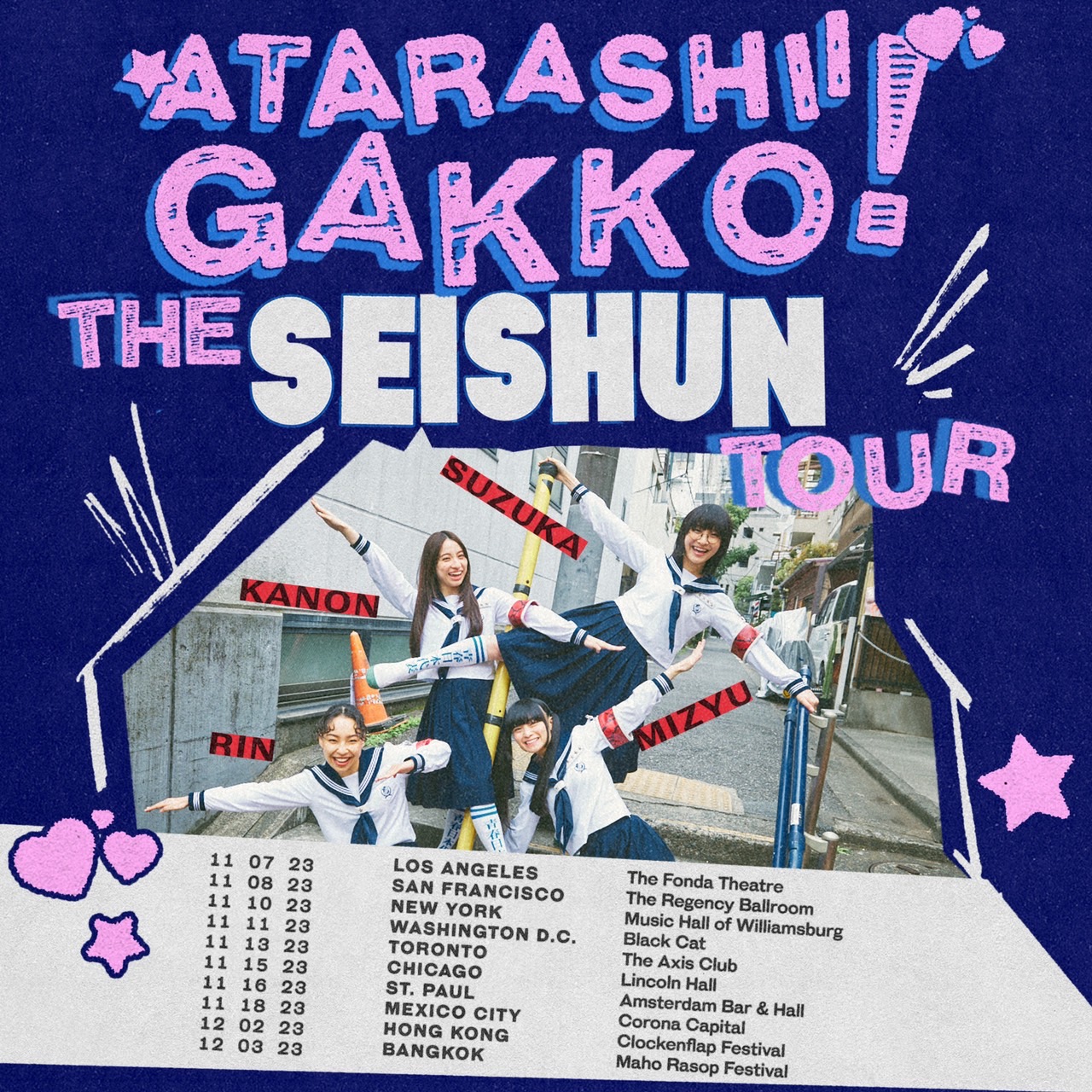
-
FRUITS ZIPPER’s First Arena Concert Report: Group to Hold Second Anniversary Concert at Nippon Budokan!
09.November.2023 | MUSIC
On October 28, the idol group FRUITS ZIPPER held their first arena concert at the Tokyo Metropolitan Gymnasium and announced that they would perform a solo show at Nippon Budokan on May 18, 2024 to celebrate the group’s second anniversary.
During the concert, the group also performed the new song Kimikoi (Dear you) for the first time. The track is filled with gratitude for the legions of fans who have supported the group since their debut and is available to stream now.
This September, FRUITS ZIPPER’s first nationwide tour ‘FRUITS ZIPPER JAPAN TOUR 2023 -AUTUMN-’ took the girls to Osaka, Aichi, Fukuoka, Hiroshima, Hokkaido, and Kanagawa. The tour culminated in a sold-out show at the Tokyo Metropolitan Gymnasium, the first arena performance for the group. Presale tickets also sold out, and around 8,000 people attended the event. Even before the show started, there was plenty of excitement both inside and outside the venue.

When the show’s opening video began to play, the crowd’s fervor exploded. Penlights incorporating wireless lighting were introduced for this concert, and once the entire venue was flooded with beautiful, unified light, the members appeared. The concert began with Pure in the World, which has been popular throughout the tour. Continuing with Kanpeki Shugide☆ and Kimino Akaruimiraiwo Oikakete, the girls were ready to show off their skills in their first-ever arena show.
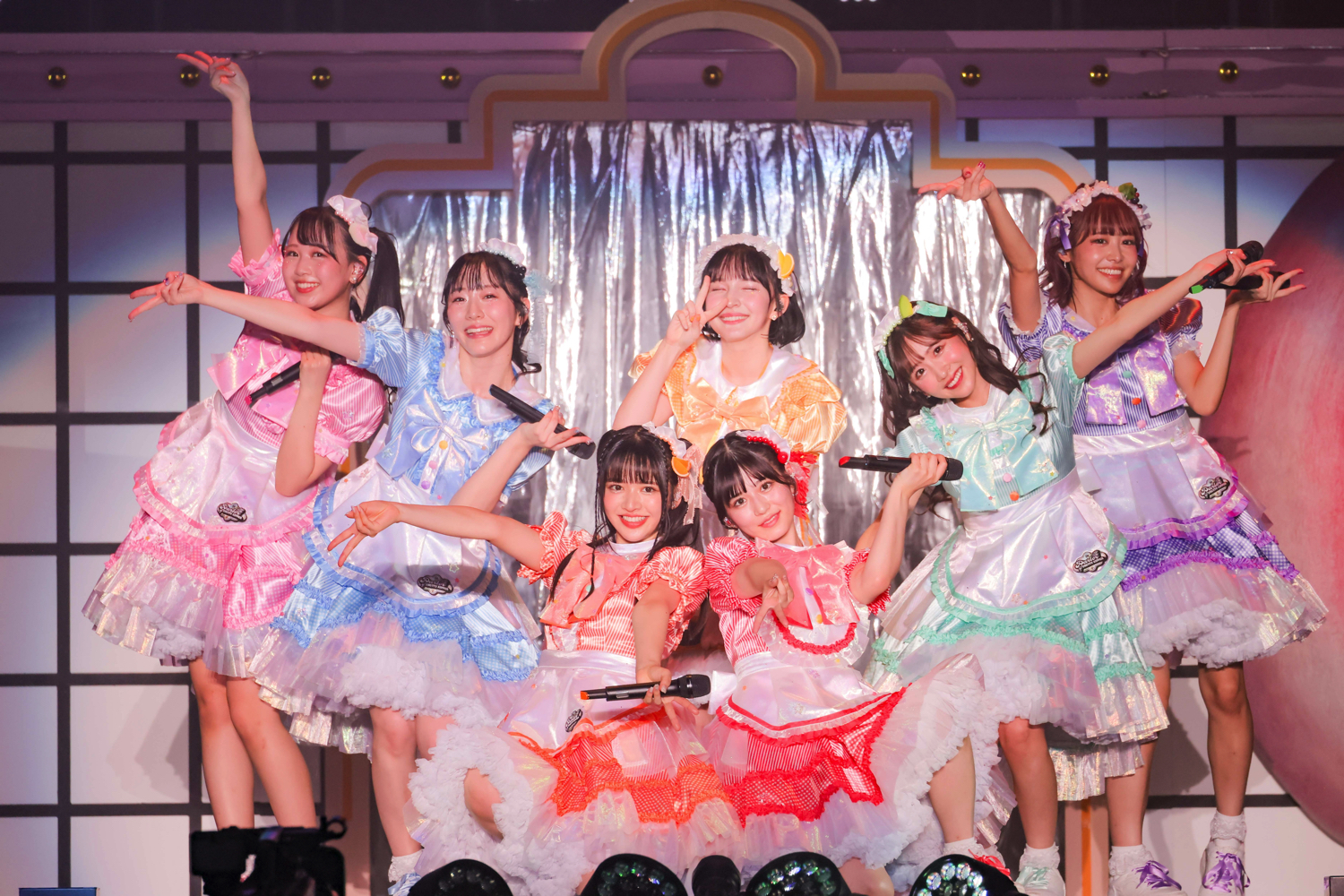
Once the girls had a chance to breathe, the audience’s cheers echoed throughout the venue. Each member asked the crowd if they were excited, and the fans quickly responded as loudly as they could.
During Fre-Fru Summer!, the girls rode in a giant float that traveled around the arena, bringing the members and fans even closer. Despite the show taking place at the end of October, the vibes inside the arena were entirely mid-summer. As the excitement of the fans grew, RADIO GALAXY began, featuring lasers and other flashy effects, turning the Tokyo Metropolitan Gymnasium into a dance hall. Not letting up, the group transformed the atmosphere into something more emotional, performing Roller Coaster Heart, We are Frontier–remixed for the tour–and Zutto, Zutto, Zutto! The final song of the first half was CO-Kosei, which was performed for the first time at the Kanagawa concert in September and shows off FRUITS ZIPPER’s individuality.
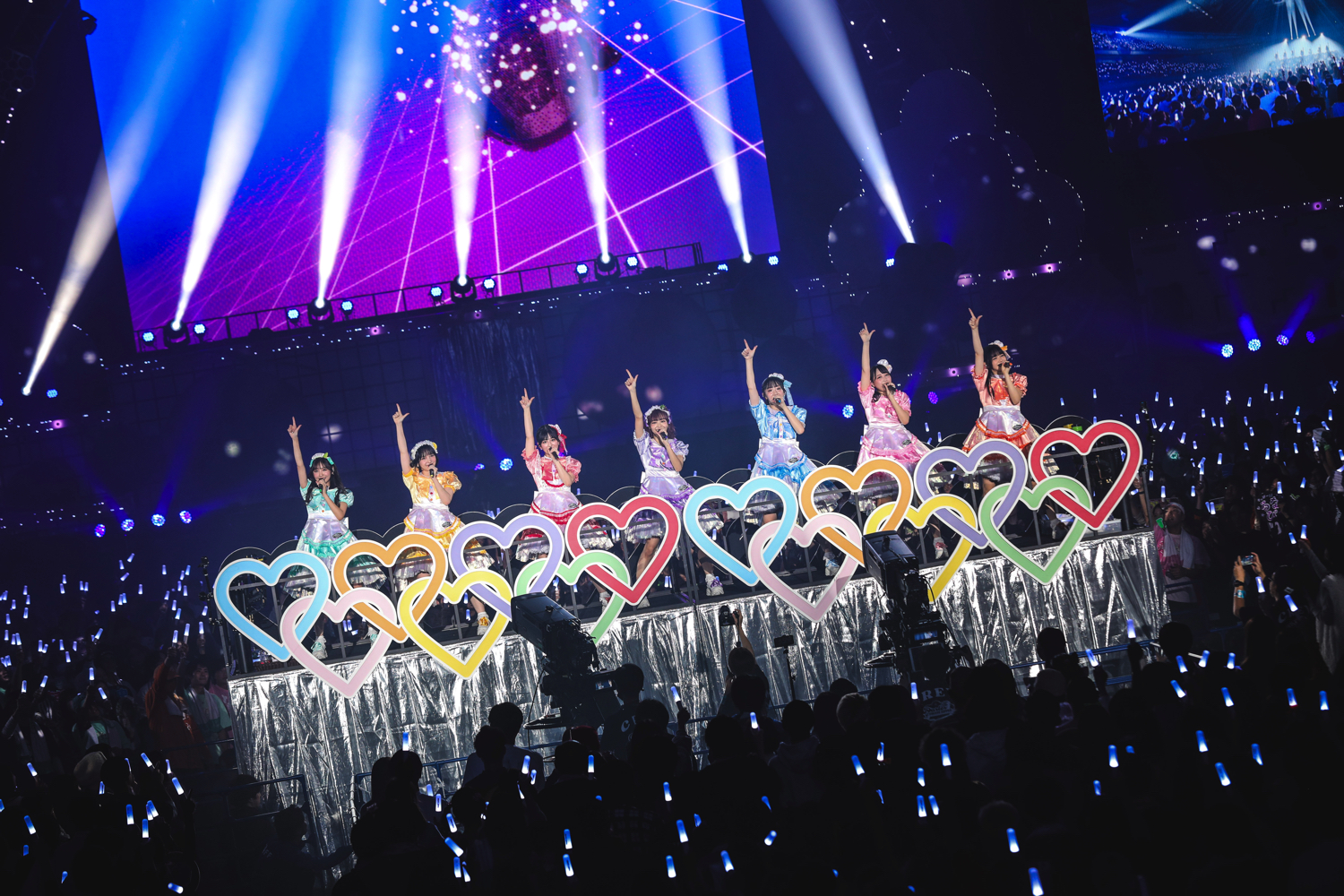
During the halfway point titled WORLD KAWAII CLASSIC, the seven members were divided into three groups and performed a unit song for the first time. First on stage were the friendly Amaren Sisters (Amane Tsukiashi, Karen Matsumoto) to perform their song Pinky Red. The song’s comical lyrics and catchy melody transformed the venue into a sea of cuteness, playing into the pair’s standard interactions. The audience was also excited to see the world’s most adorable JoJo Pose during the performance. The next unit was comprised of Suzuka Chinzei, Yui Sakurai, and Mana Manaka, who performed their song Tenshinranmanwhile showing off both their cute idol-like appearance and their uniqueness. Finally, Luna Nakagawa and Noel Hayase performed Bye-Bye, showing off a next-level melody and rap segment not heard in any FRUITS ZIPPER songs in the past. Fans couldn’t take their eyes off the girls’ performance, which was completely unexpected for an idol concert. During the MC, the members shared the story behind each song and praised one another.
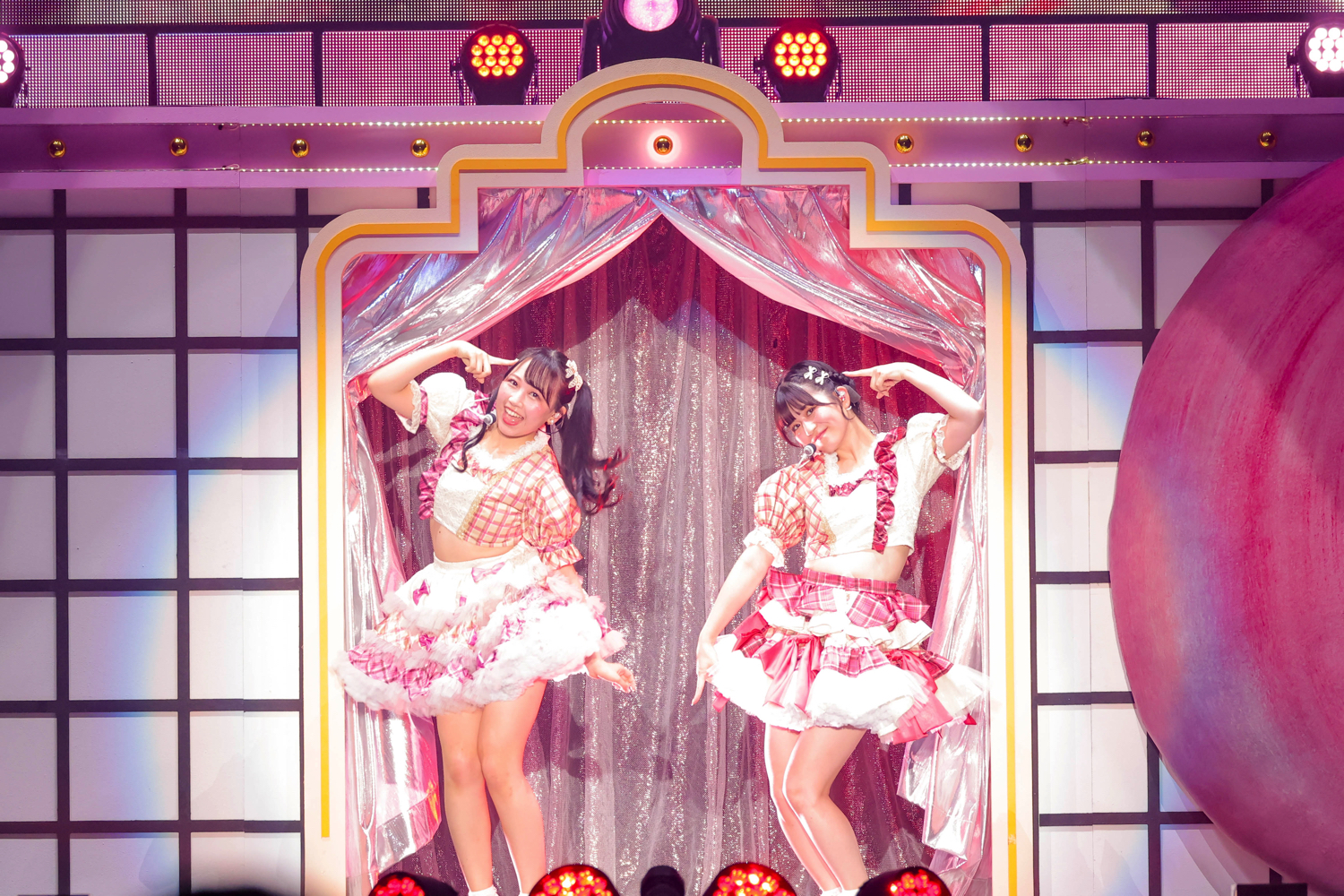
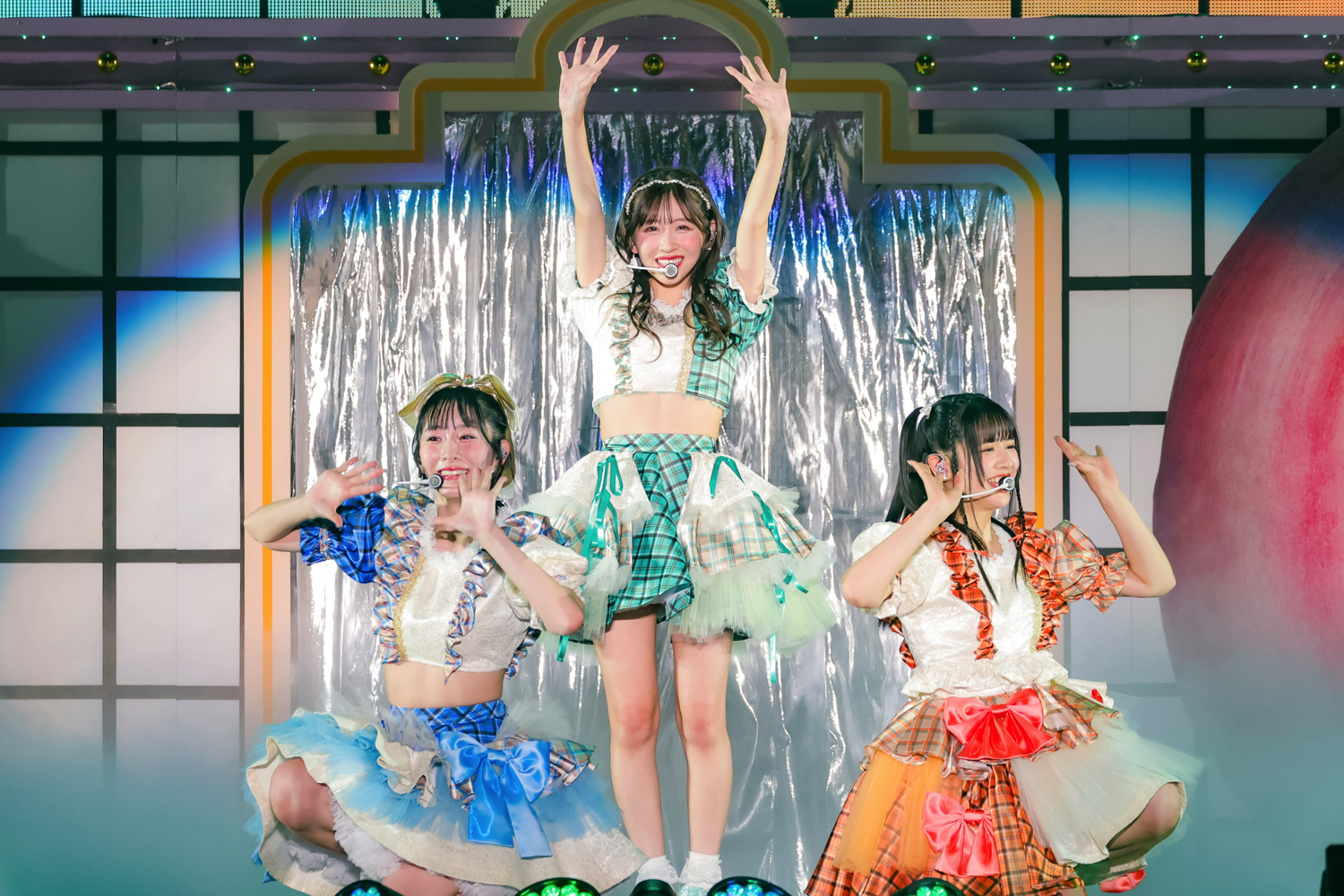
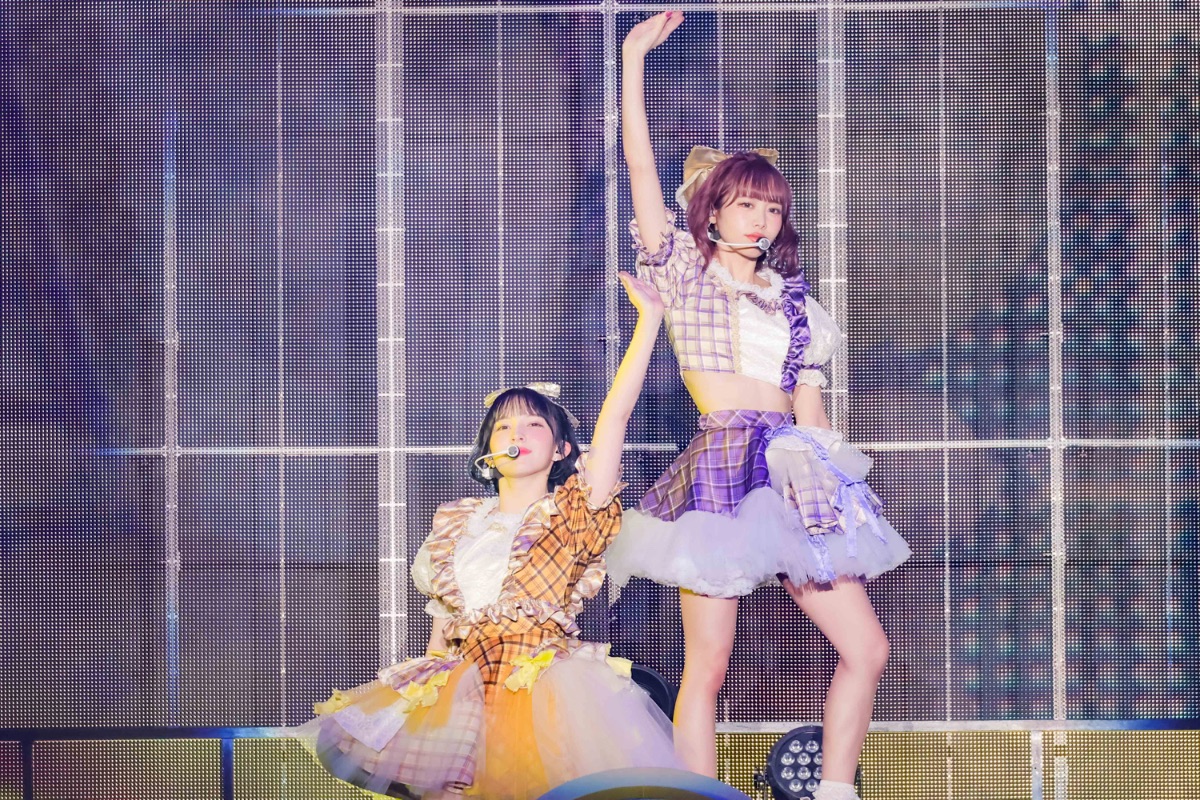
The second half of the show continued with the same incredible momentum as the first. Each member appeared in new costumes covered in ribbons before performing Sekaiwa Kimikara Hajimaru, Welcome to the ♡ Furuppa, and the incredibly popular Happy Chocolate. Yui Sakurai’s line ‘Naani, naani,’ which trended on TikTok earlier this year as ‘Naaze, naaze,’ immediately struck a chord with fans.
During the second half of the show, the girls gave an energetic and cool performance of Re→TRY & FLY as flames illuminated the stage. The voltage in the venue continued to ramp up as the group performed skyfeelan and Going!, making it the perfect environment for FRUITS ZIPPER to perform their new songKimikoi (Dear you) as a surprise. The track is packed with gratitude for the group’s fans who have supported them from the start and urged them to aim higher, through their first CD release, nationwide tour, and solo concert at the Tokyo Metropolitan Gymnasium. Kimikoi (Dear you) was produced with the hope of “continuing to make dreams come true together with the fans.” The lyric-like posts that have been posted on FRUITS ZIPPER’s Twitter over the past few days caused a stir among fans, and all foreshadowing led to this new song. The girls thanked everyone from the bottom of their hearts as they sang the moving lyrics with all of their might.
The concert came to a close with FRUITS ZIPPER’s signature track Watashino Ichiban Kawaiitokoro. As the members danced along to their signature track, many people in the audience did as well. 8,000 people dancing in unison truly embodied the heart of “NEW KAWAII.”
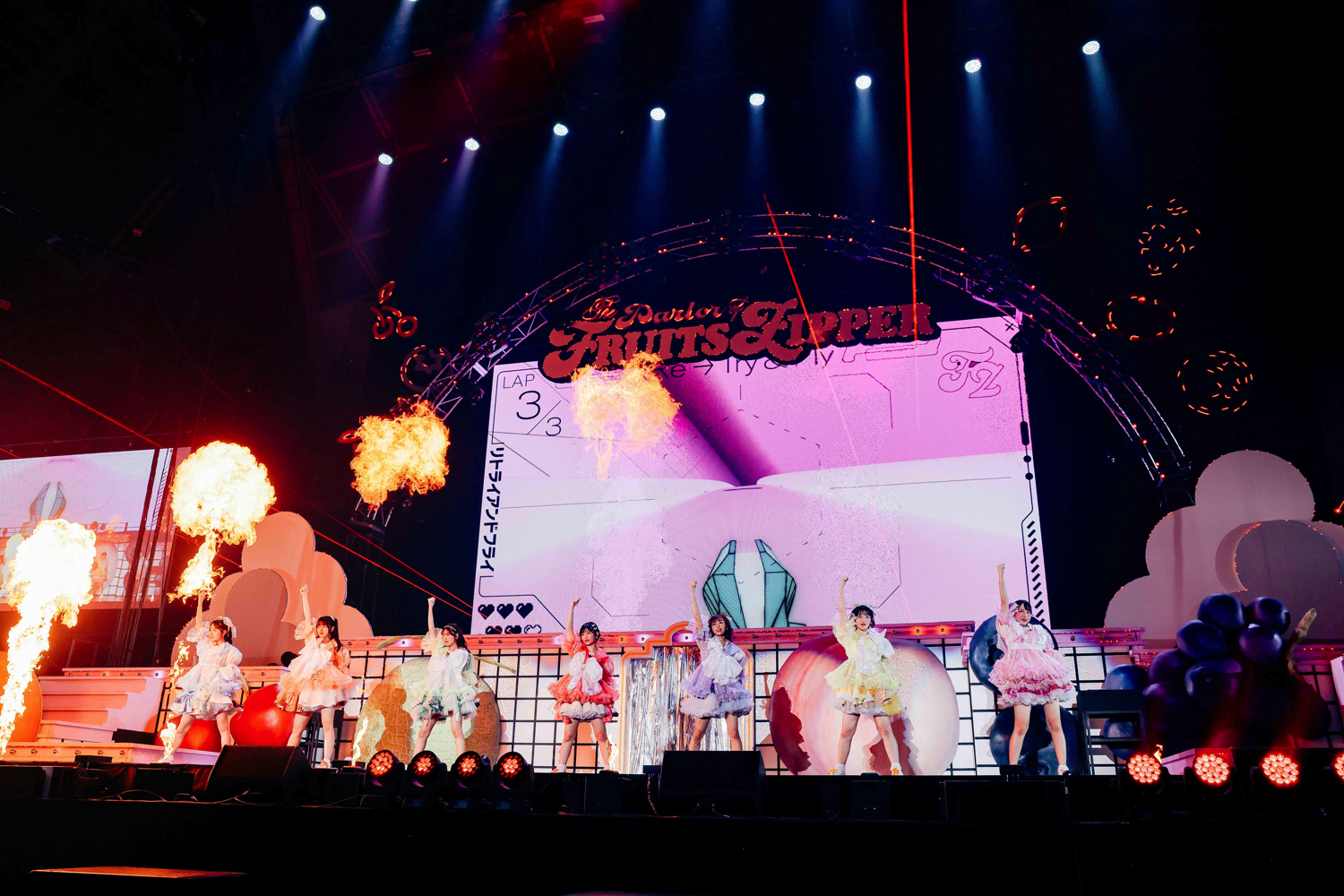

But the concert wasn’t over yet. The members returned to the stage after hearing the audience loudly begging for an encore, thanking the fans for their support. “We’re not done yet, so I’d like to show everyone an even more incredible performance,” said Yui Sakurai. The group filmed a TikTok with the 8,000 audience members as they performed Watashino Ichiban Kawaiitokoro, so visit FRUITS ZIPPER’s social media to check it out!
For the encore, the girls performed Kimikoi (Dear you) again, this time allowing the audience to record video. “Let’s get this trending,” said Matsumoto as the performance began.
Suddenly, a video began playing on the large screen on stage, announcing that FRUITS ZIPPER would be celebrating its second anniversary with a performance at Nippon Budokan on May 18, 2024. The members were also speechless, as they hadn’t been made aware of this exciting news. As some of the girls were moved to tears, the fans congratulated them with loud voices and warm applause. Fittingly, the group then sang Chou Medetai Song ~Konnani Shiawasede Iinokana?~, and the entire venue celebrated the overwhelmingly exciting news. The shouts of “Congratulations” rang out louder than ever before at the massive Tokyo Metropolitan Gymnasium.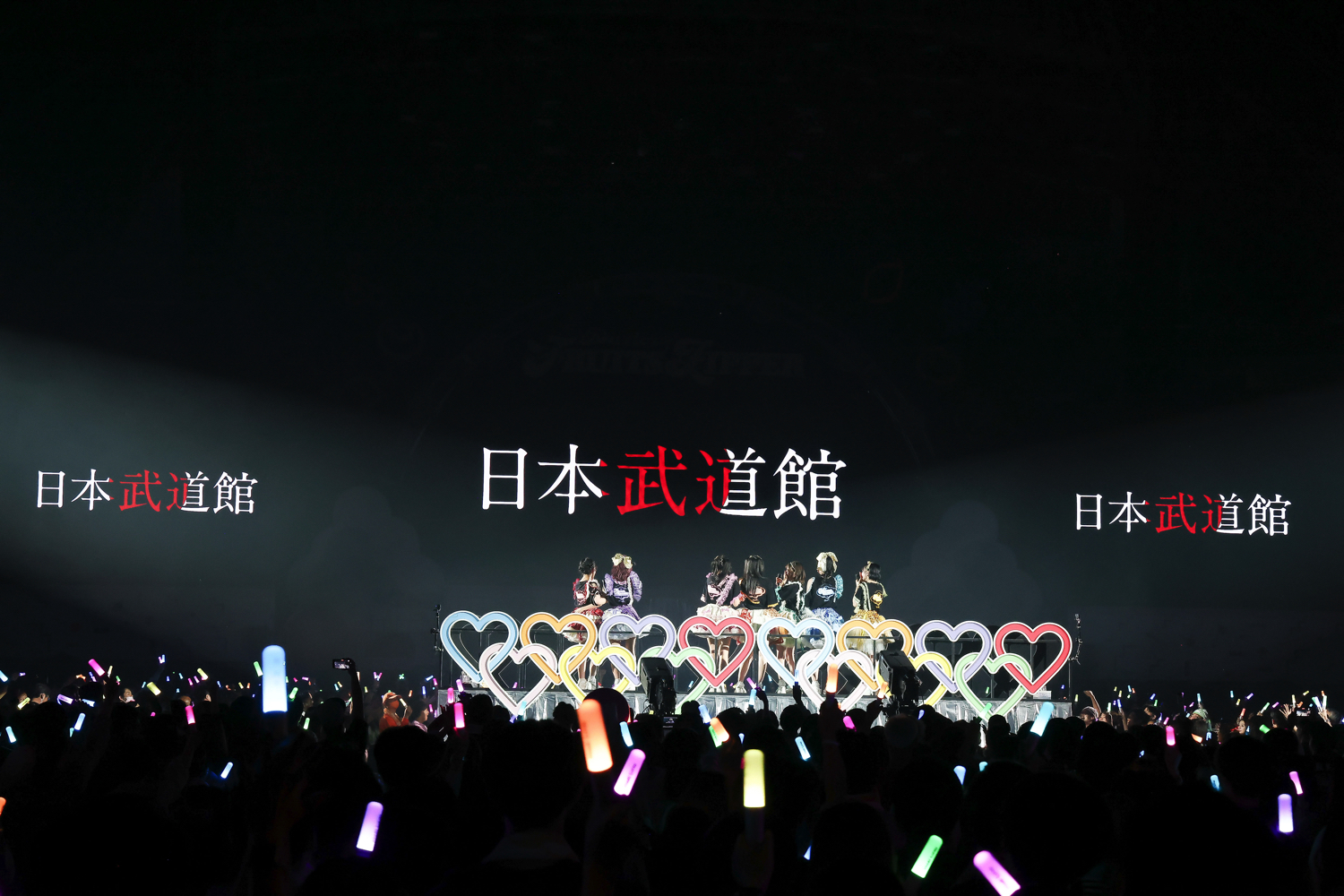
Luna Nakagawa commented on the final performance of the tour with tears in her eyes, expressing her joy at being able to stand on the stage she had always dreamed of. Yui Sakurai, who celebrated her 10th idol anniversary on October 20, also reflected on the day she passed her first idol audition and the day she quit her part-time job to pursue showbiz. “I’m so happy to be able to stand before you all today as an idol, and I’m so glad I came back. Today, I was able to fulfill my dream of making so many people happy, and I hope I was able to repay everyone for their incredible kindness.” Suzuka Chinzei continued with her final remarks. “I want everyone here tonight to be happy,” she yelled with a huge smile on her face before the group launched into their debut song Kimino Akaruimiraiwo Oikakete. The girls showed their determination to strive towards the next stage of their careers, and after the song, Luna Nakagawa asked that the lights in the venue be turned off so that the girls could only see the penlights in the crowd. The seven-colored lights illuminating the venue may as well have been beacons leading FRUITS ZIPPER towards their bright future.
FRUITS ZIPPER has had a total attendance of over 16,000 people since its nationwide tour began in September, and is scheduled to perform at Nippon Budokan in May. Fans look forward to seeing what kind of happy performances await them in the future as the girls continue to evolve.

<Member Comments>
Comment from Suzuka Chinzei
“It’s a miracle that we’ll be able to perform at Nippon Budokan on our second anniversary, and it’s all thanks to the fans and people who have always supported us that this dream is coming true. We’ll give the best possible performance as a girls’ idol group worthy of standing on stage at such a legendary venue, so I hope that everyone in the world and the universe comes!”Comment from Yui Sakurai
“I can’t believe that we’ll soon be standing on stage at Budokan. It’s the goal of every idol, and we’re doing it just two years after our debut. I hope that the fans will look forward to that special day–we’ll work hard and do our best to truly become idols worthy of Nippon Budokan!”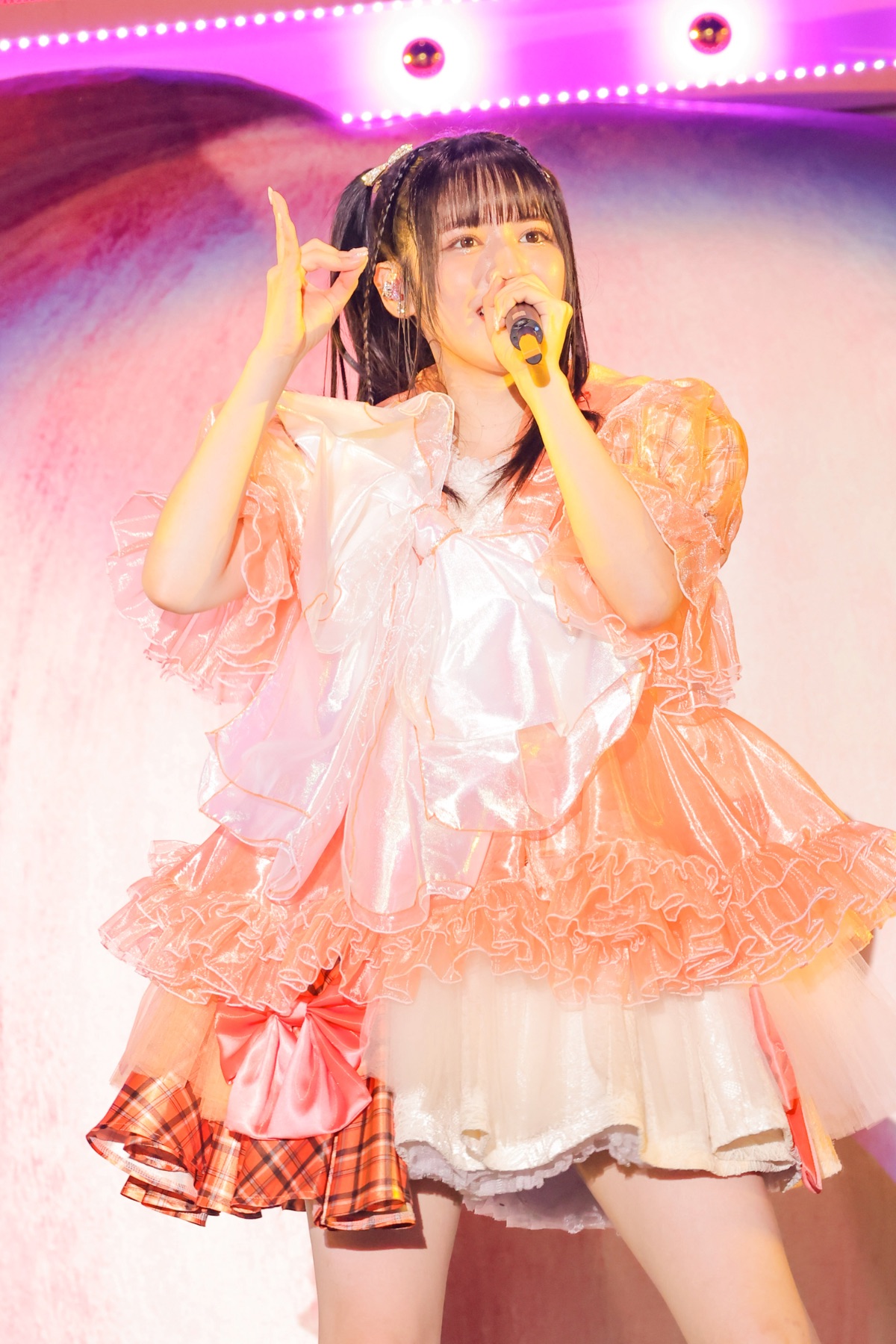

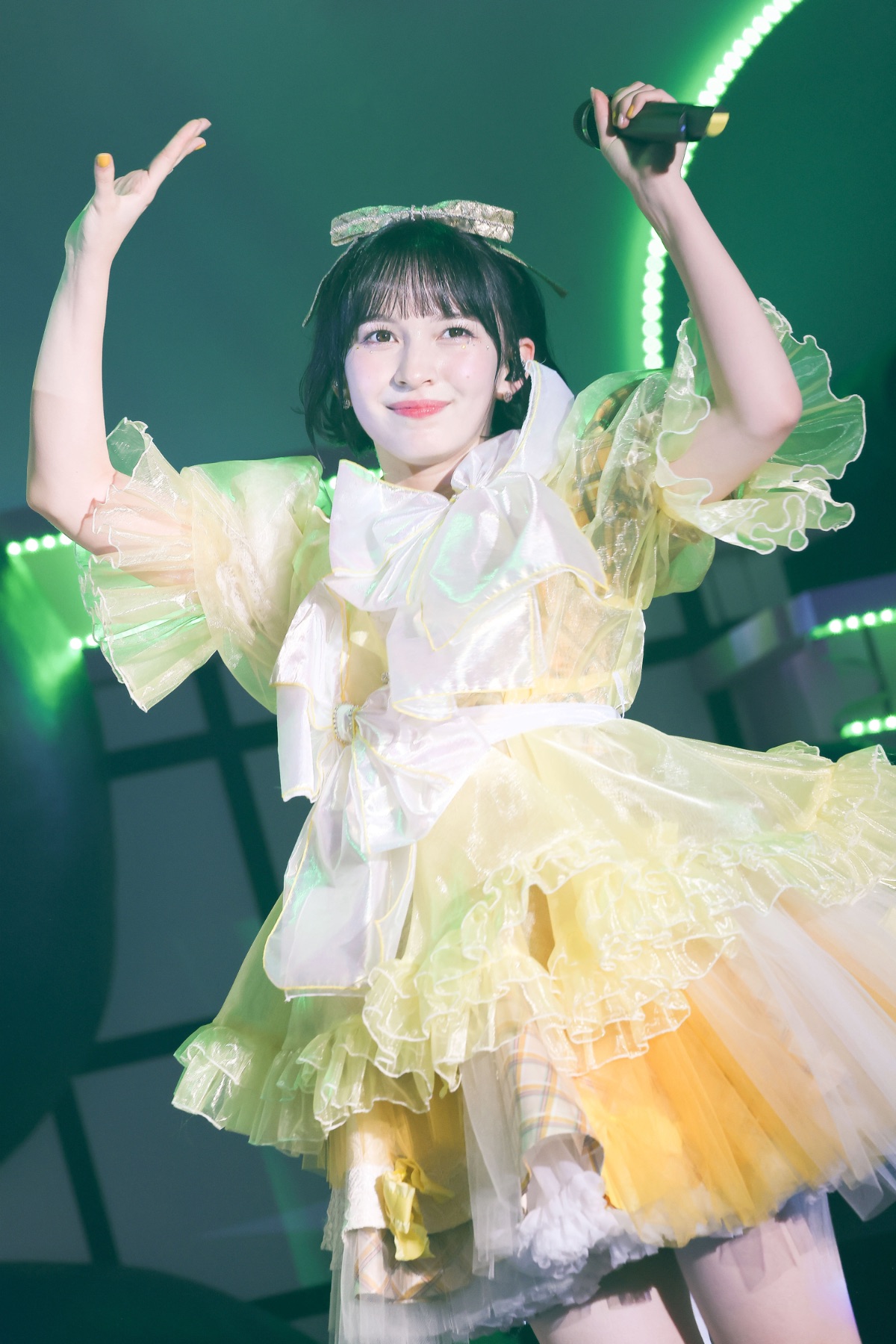
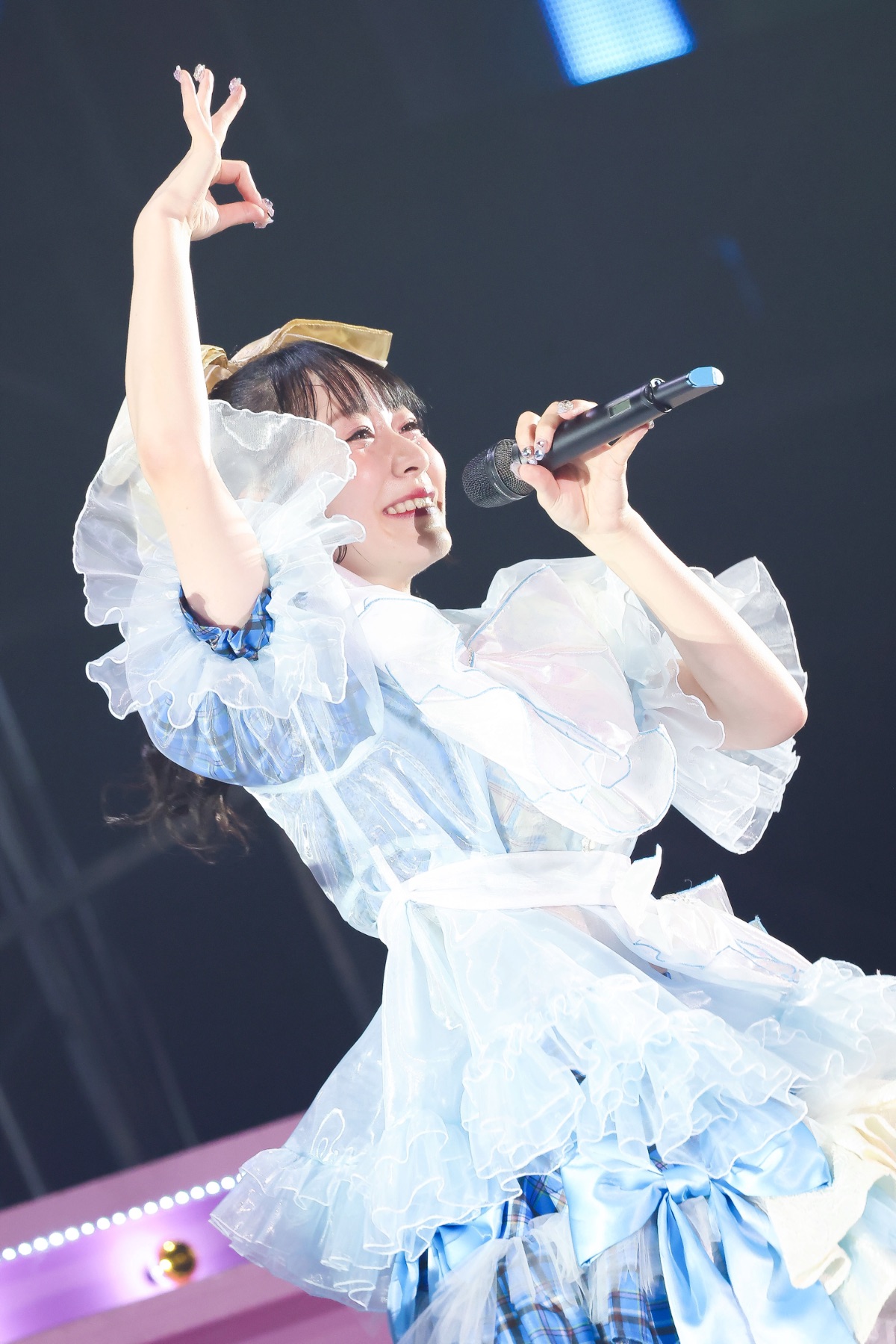
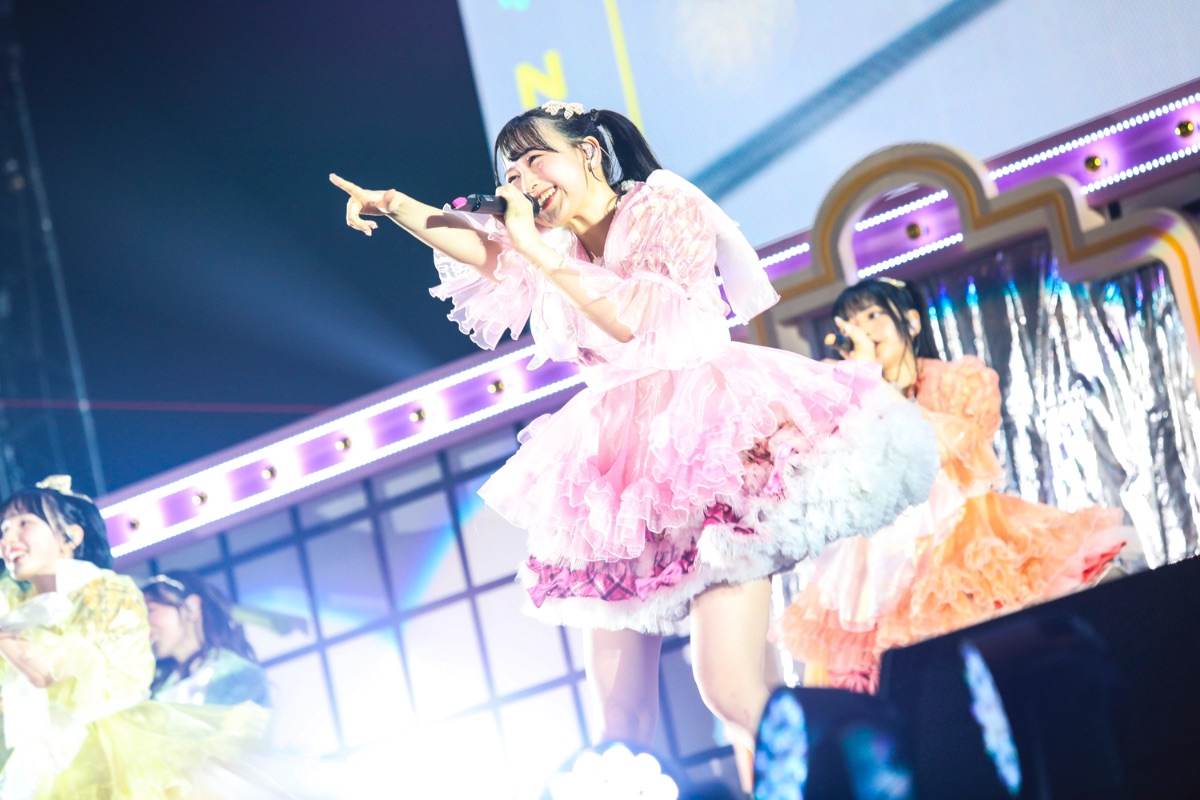
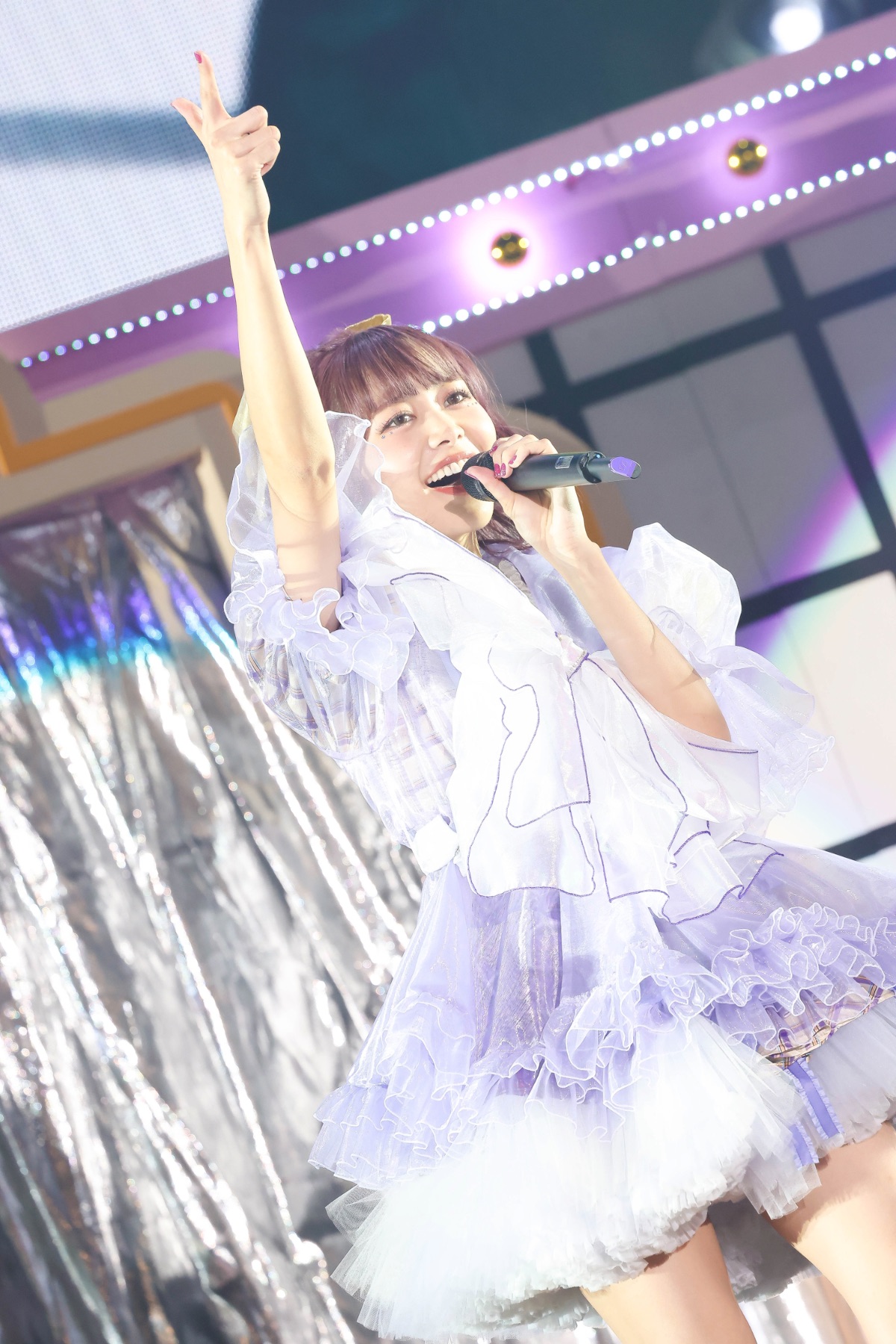

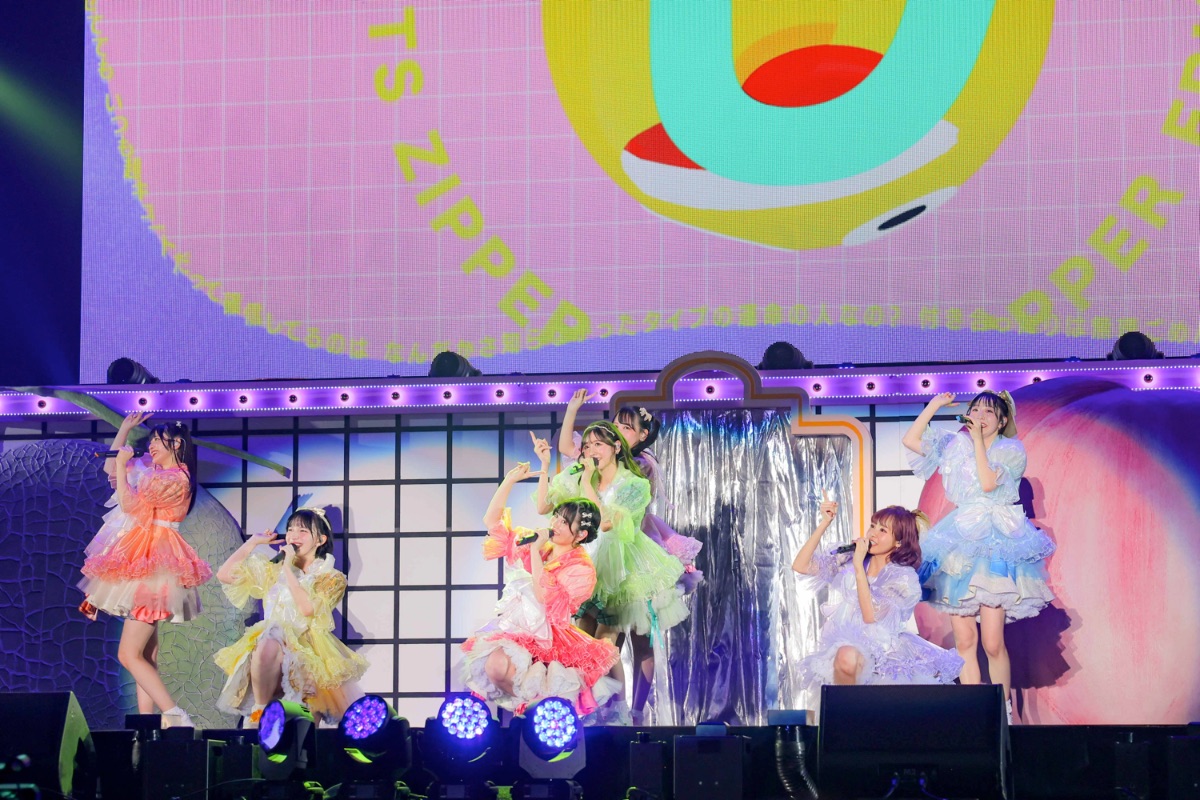

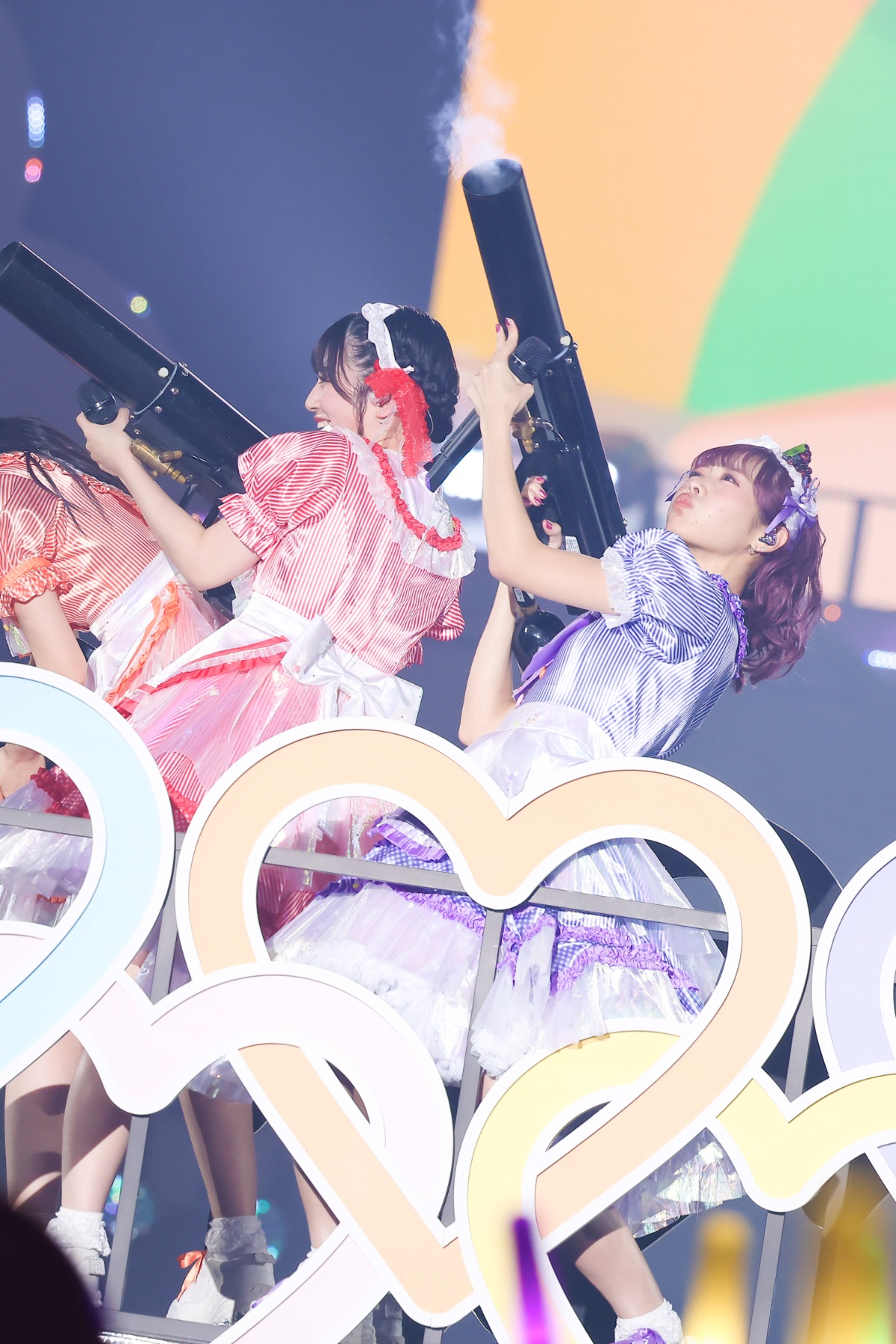
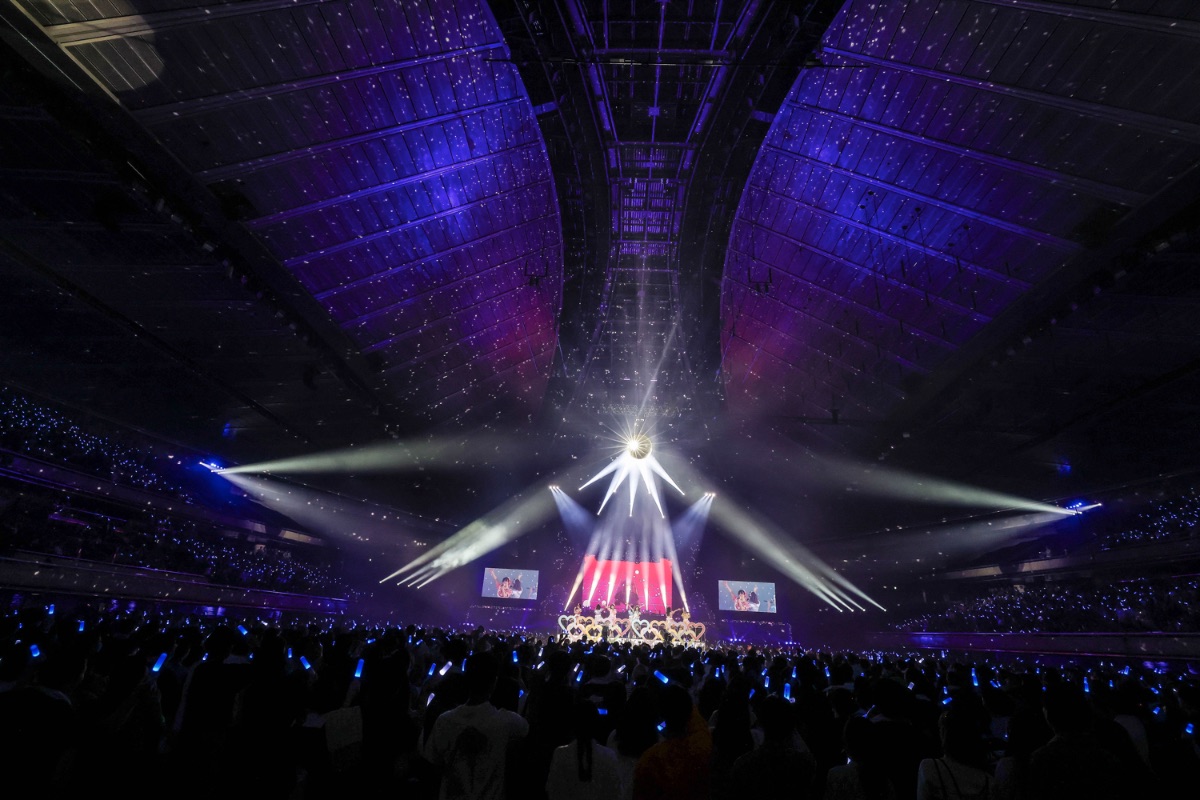
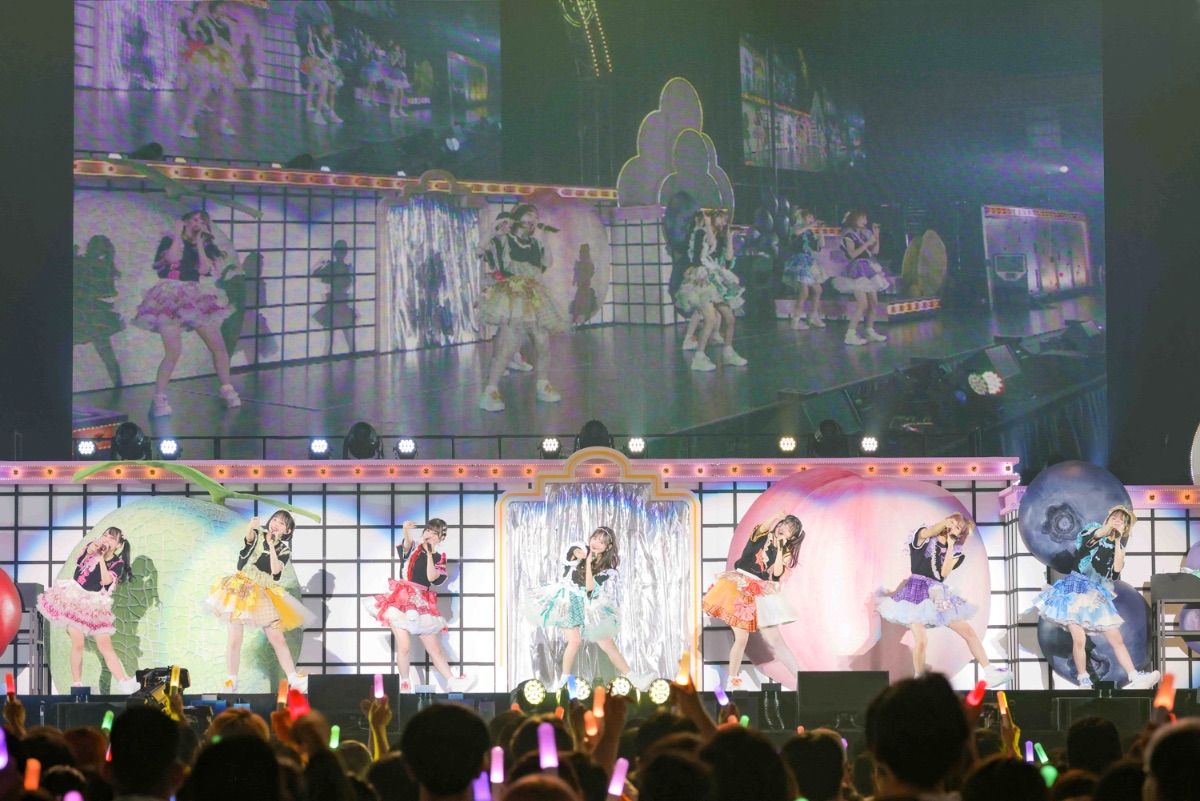
■Set List
OP OVERTURE
M01 Pure in the World
M02 Kanpeki Shugide☆
M03 Kimino Akaruimiraiwo Oikakete
M04 Fre-Fru Summer!
M05 RADIO GALAXY
M06 Roller Coaster Heart
M07 We are Frontier -Tour Remix ver-
M08 Zutto, Zutto, Zutto!
M09 CO-Kosei
M10 Pinky Red (Amane Tsukiashi, Karen Matsumoto)
M11 Tenshinranman (Suzuka Chinsei, Yui Sakurai, Mana Manaka)
M12 Bye-Bye (Luna Nakagawa, Noel Hayase)
M13 Sekaiwa Kimikara Hajimaru
M14 Welcome to the ♡ Furuppa!
M15 Happy Chocolate
M16 Re→TRY & FLY
M17 skyfeelan
M18 Going!
M19 Kimikoi (Dear you)
M20 Watashino Ichiban KawaiitokoroEncore
M21 Kimikoi (Dear you)
M22 Chou Medetai Song ~Konnani Shiawasede Iinokana?~
M23 Kimino Akaruimiraiwo OikaketeKimikoi (Dear you) – FRUITS ZIPPER (New Digital Single)
Information
<Concert Information>
FRUITS ZIPPER JAPAN TOUR 2023 -AUTUMN- The Parlor of FRUITS ZIPPER TOUR FINAL
Date: October 28, 2023
Venue: Tokyo Metropolitan Gymnasium■U-NEXT Livestream Information
Available: November 11 at 10:00 ~ November 24 at 23:59
Details: https://t.unext.jp/r/fruitszipper<2nd Anniversary Concert Information>
FRUITS ZIPPER 2nd ANNIVERSARY SPECIAL LIVE 2024
Date: May 18, 2024
Venue: Nippon Budokan
Details to be announced at a later date<New Song Information>
Kimikoi (Dear you) – FRUITS ZIPPER (New Digital Single)
Release Date: October 29, 2023
Streaming URL: https://KAWAIILAB.lnk.to/kimikoi
Available on all major music download and streaming sitesM1. Kimikoi
M2. Kimikoi (Instrumental) -
ATARASHII GAKKO! Performs for 8,000 Fans at First Arena Concert, Budokan Show Announced for January 2024
09.November.2023 | MUSIC / Uncategorized
On October 29, ATARASHII GAKKO!’s First Arena Solo Concert 2023 HAMIDASHIHTEIKU was held at Tokyo Metropolitan Gymnasium.
The four members made their world debut in 2021 as part of 88risinng, a record label introducing Asian culture and artists to global audiences. Recently, they have continued to garner attention for their appearance on the music program Music Station and the premiere of their first-ever television show. Tickets for the first arena show were sold out immediately, including extra sales.
The concert kicked off with MANINGEN, beginning with Suzuka’s commanding vocals as the group suddenly appeared on top of the massive set. The 8,000 fans in attendance were already as excited as they could be, and as Saishuu Jinrui began soon after, the group’s intense performance raised the energy in the venue to even higher levels. The girls even performed covers of Dounimo Tomaranai and Neraiuchi, and Suzuka asked the audience to clap along to these popular songs from the past. Following this, H ZETT M, who produced many tracks on the group’s first and second albums Maenarawanai and Wakage ga Itaru, appeared on stage. Fans cheered loudly for such a major player behind ATARASHII GAKKO!’s early hits, and the girls performed the tracks Koi no Jadanki, zzz, and Koigeba in quick succession, creating a super special collaboration for the audience.
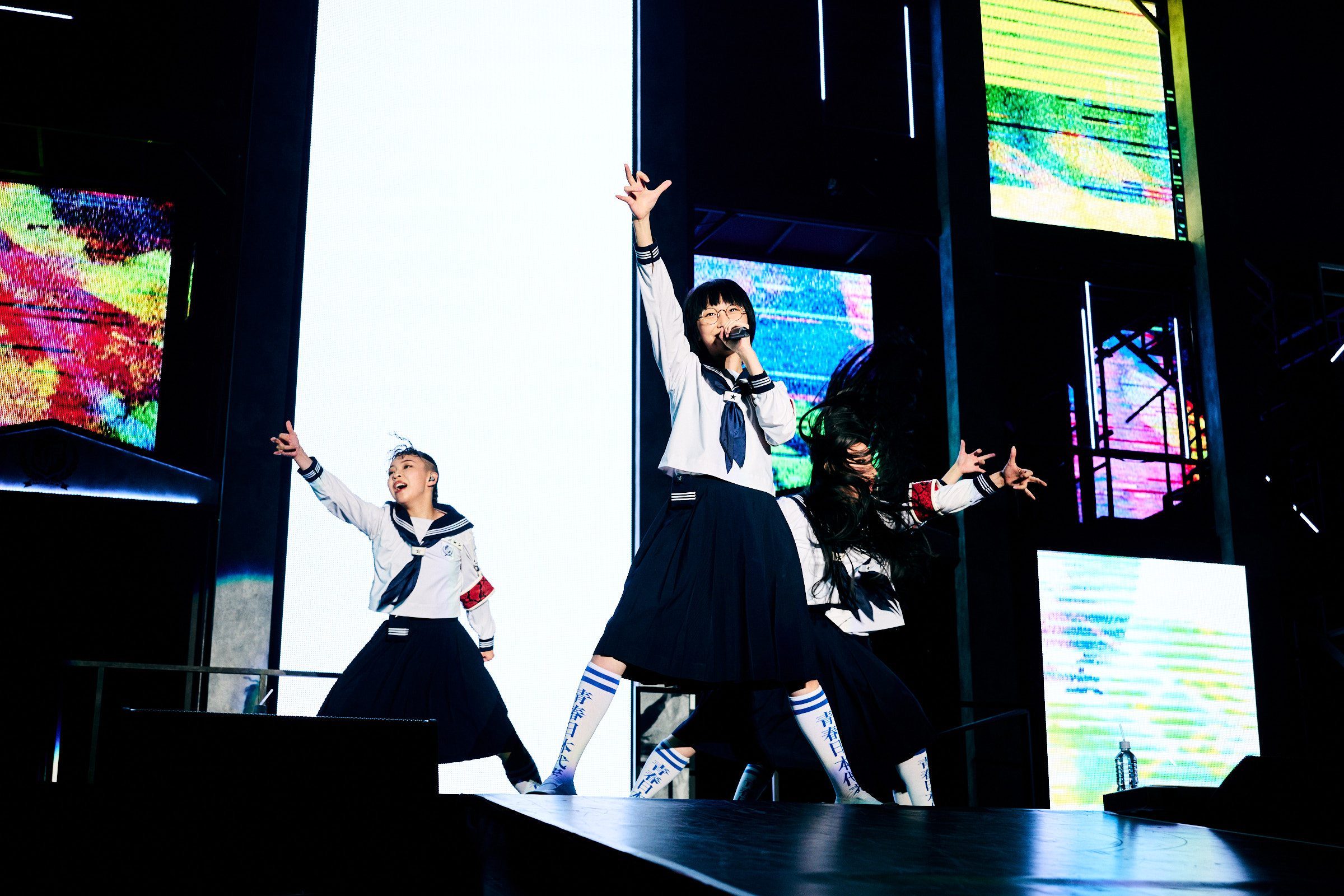
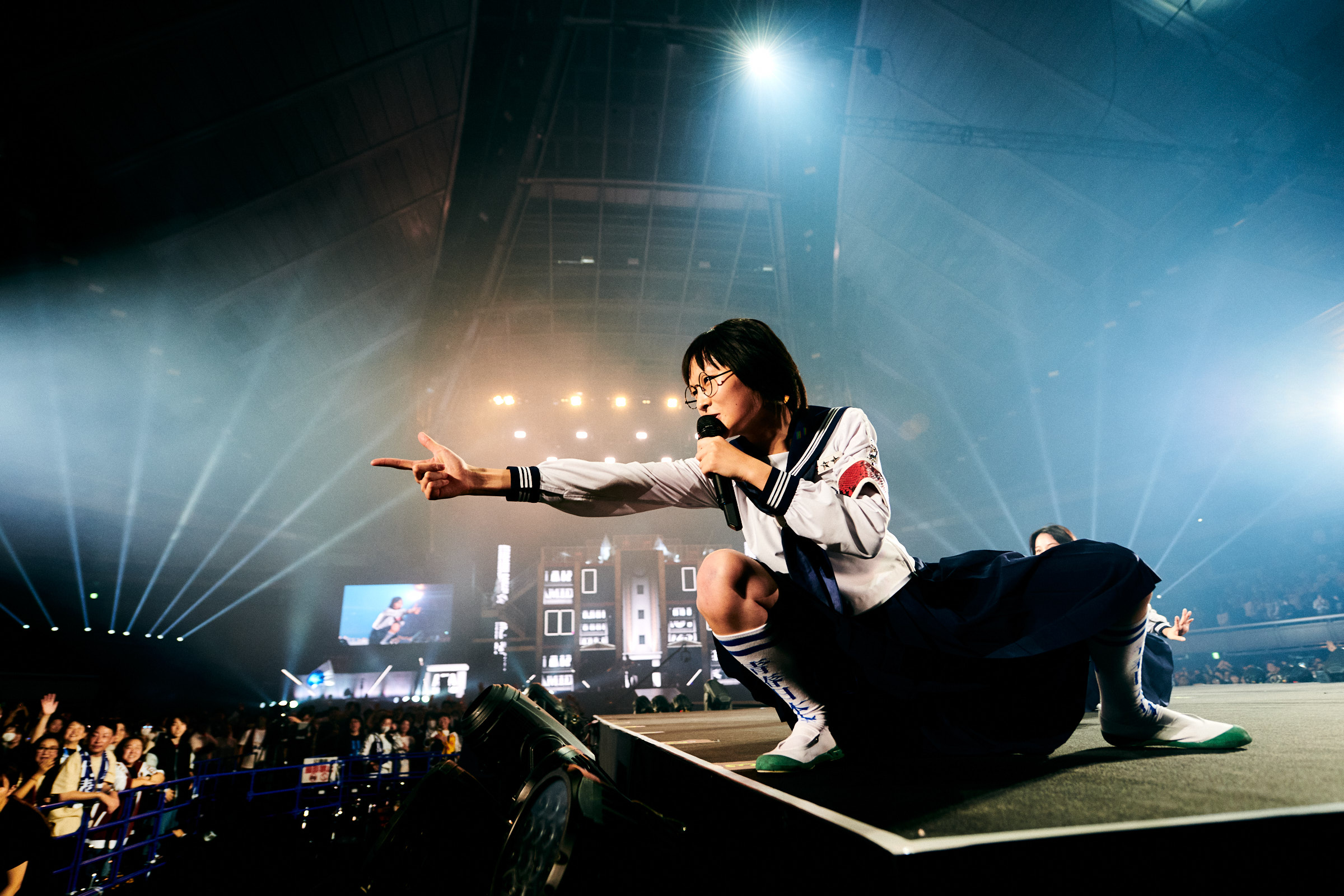
Although the members are typically seen in their signature school uniforms, they dressed up in the American Family costumes they wore in the music video forPineapple Kryptonite for a rare performance never seen at one of their live shows before. The audience roared in unabashed excitement as OTONABLUE, which has garnered 3.1 billion views in related videos on TikTok and subsequently won the 2023 TikTok Trending Grand Prize for the first half of the year, began to play. Fans were eager to move along with the chorus, performing the popular neck-swing dance with enthusiasm.

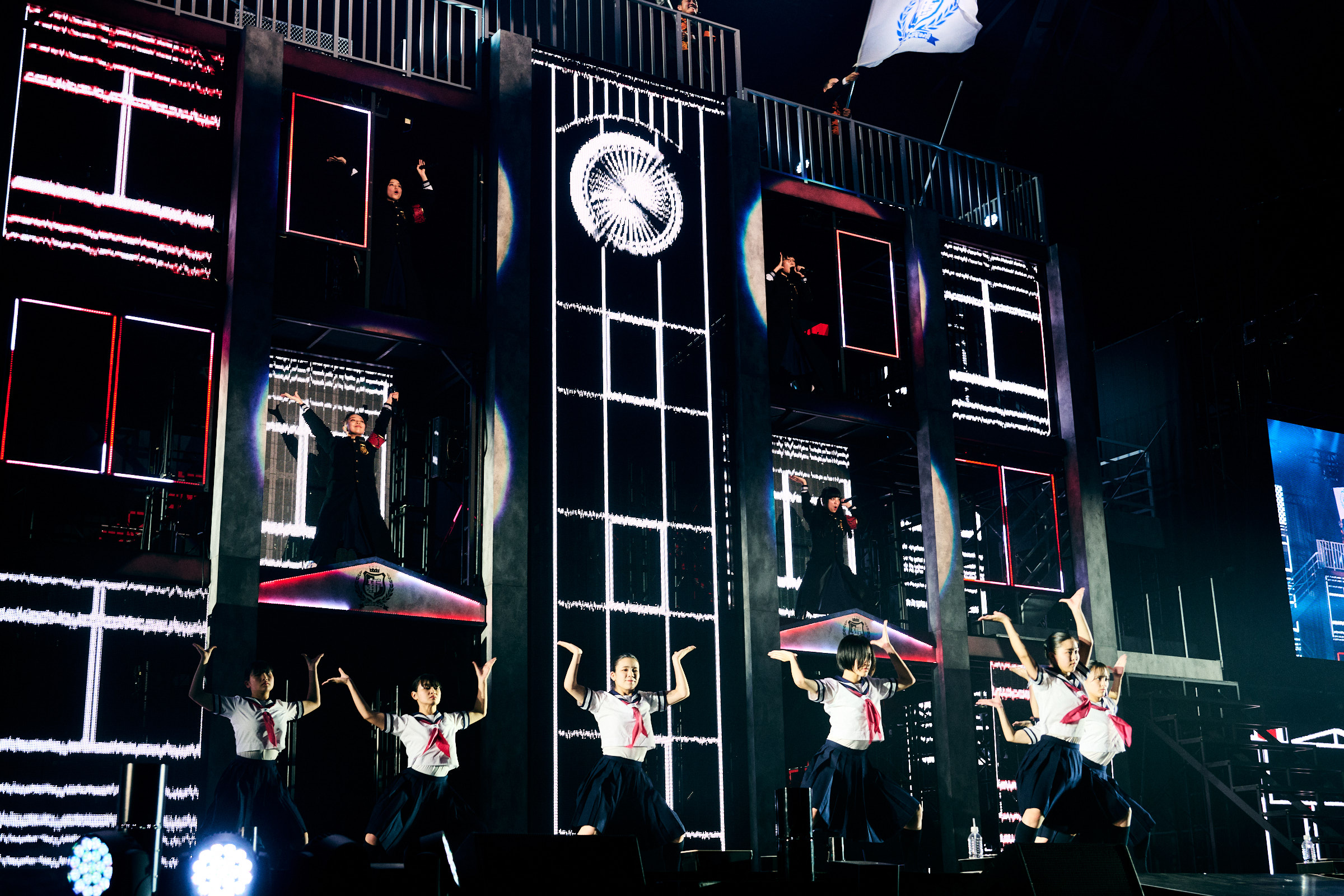
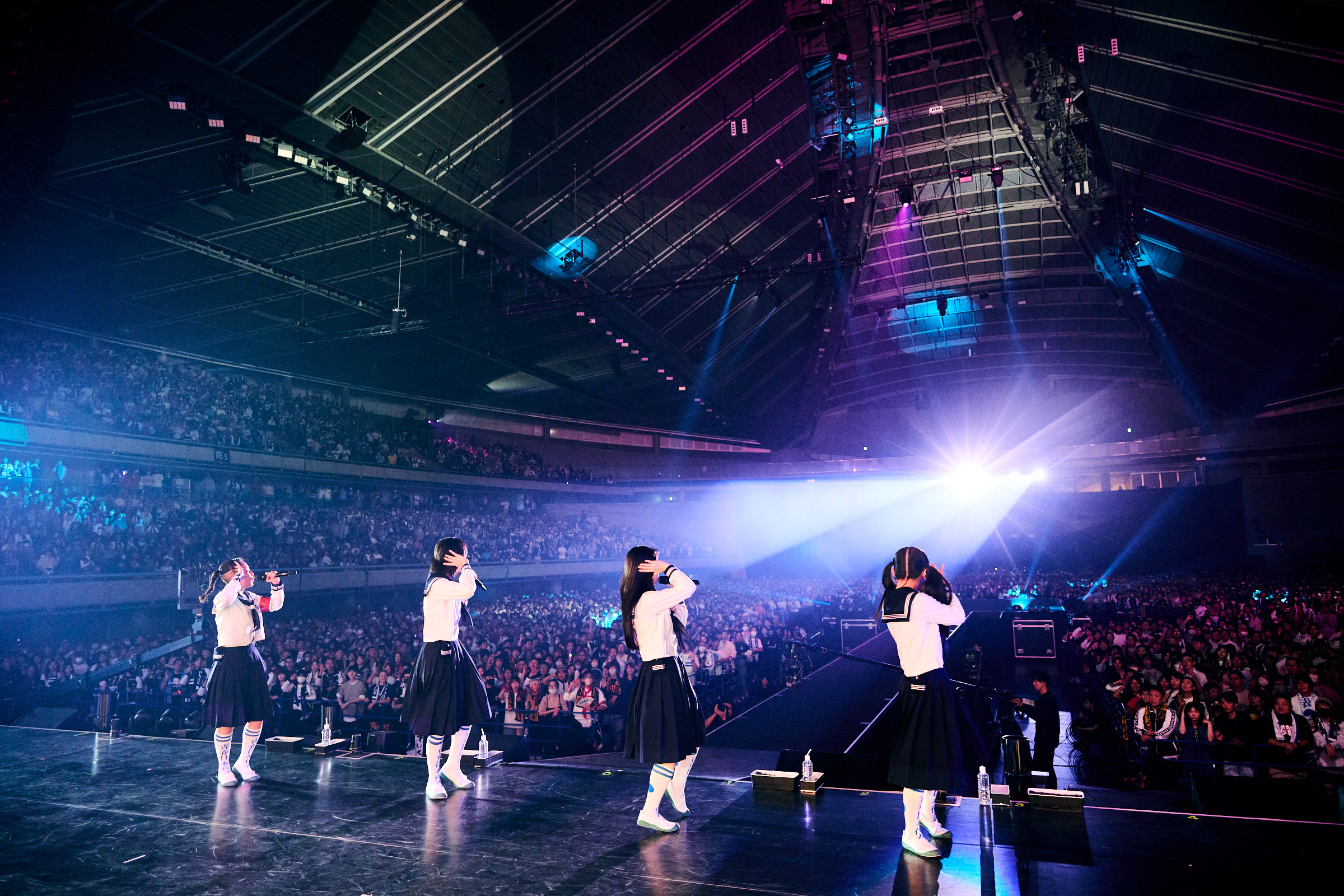
“Tokyo Metropolitan Gymnasium, can we keep going,” the girls asked as they performed SEISHUN WO KIRISAKU HADO, showing the true extent of their energy. During the interlude towards the end of the concert, the venue was full of over-the-top cheers and dances as fans begged for more.
To bring the show to a close, ATARASHII GAKKO! performed Tokyo Calling, their newest song released on October 20. Wearing their Earth Defense Force costumes that were shown in the music video, Suzuka addressed everyone in attendance. “From Tokyo, Japan, to the world, let’s show our power! You all represent the youth of Japan!”
During the encore, ATARASHII GAKKO! announced that their first solo Budokan concert would be held on January 9, 2024. “You’re all coming, right,” the members called out.
The girls performed a total of 25 songs to an overjoyed sea of fans. ATARASHII GAKKO! will begin their first overseas tour in November, and this rare domestic solo concert ended as a massive success.
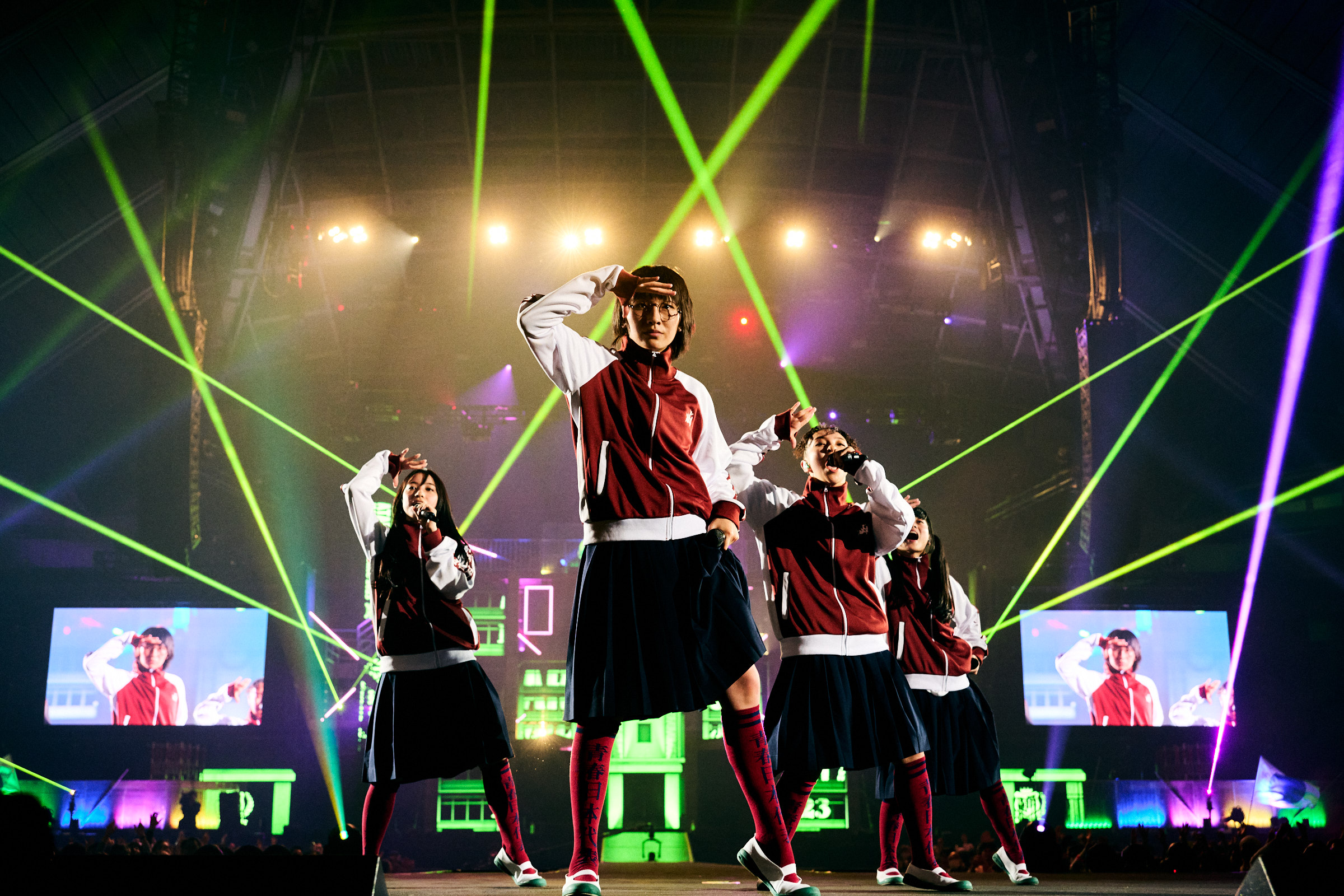

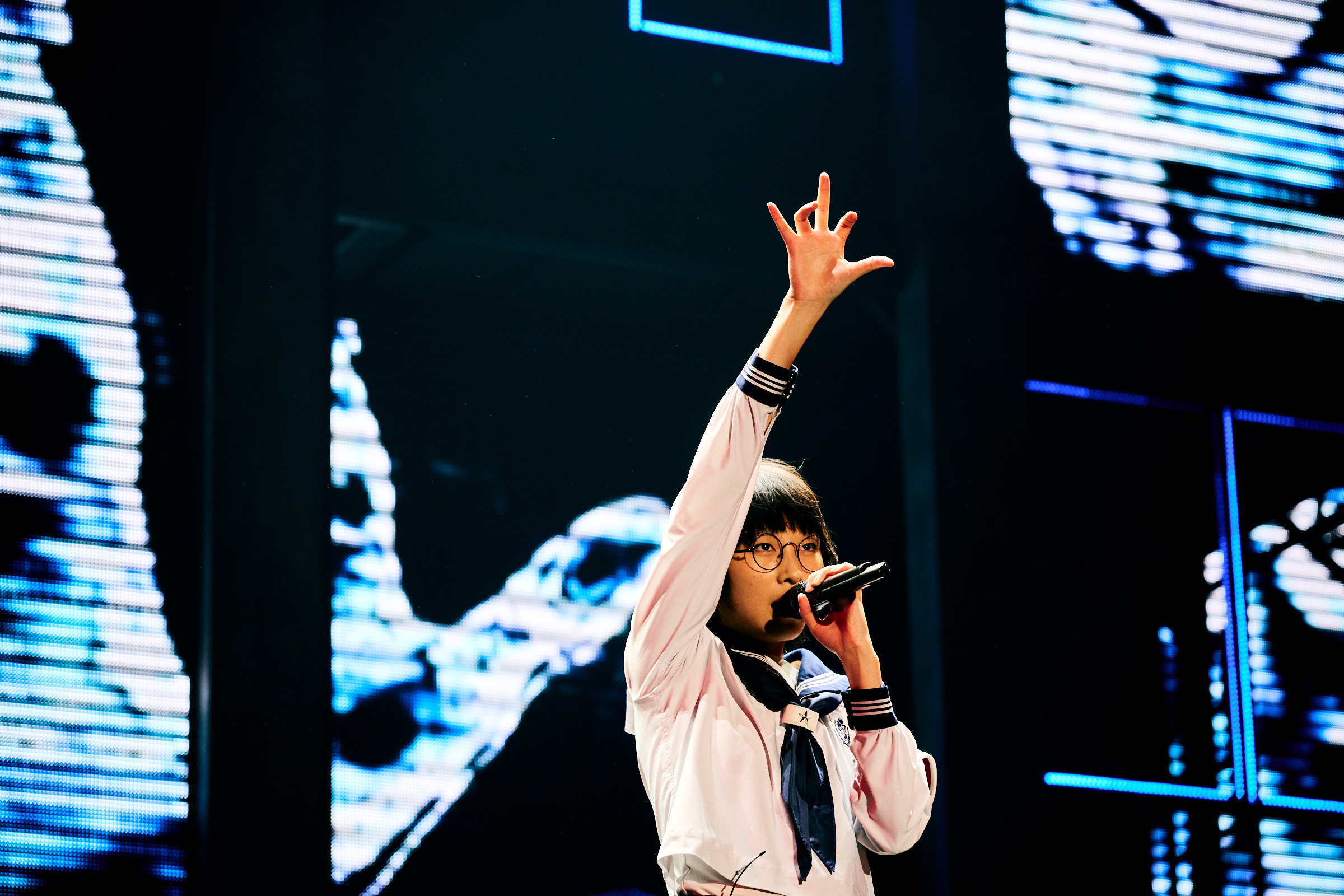


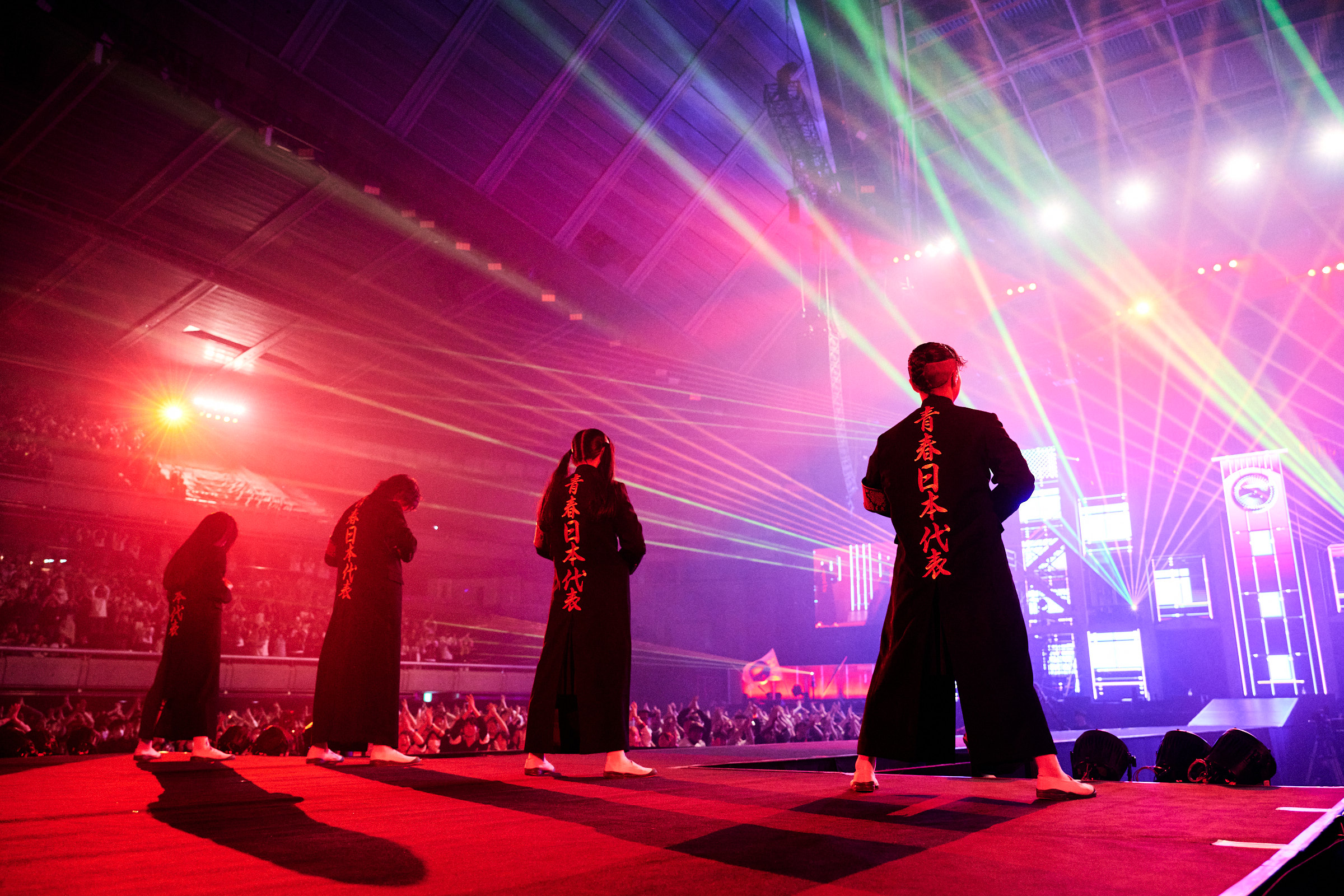

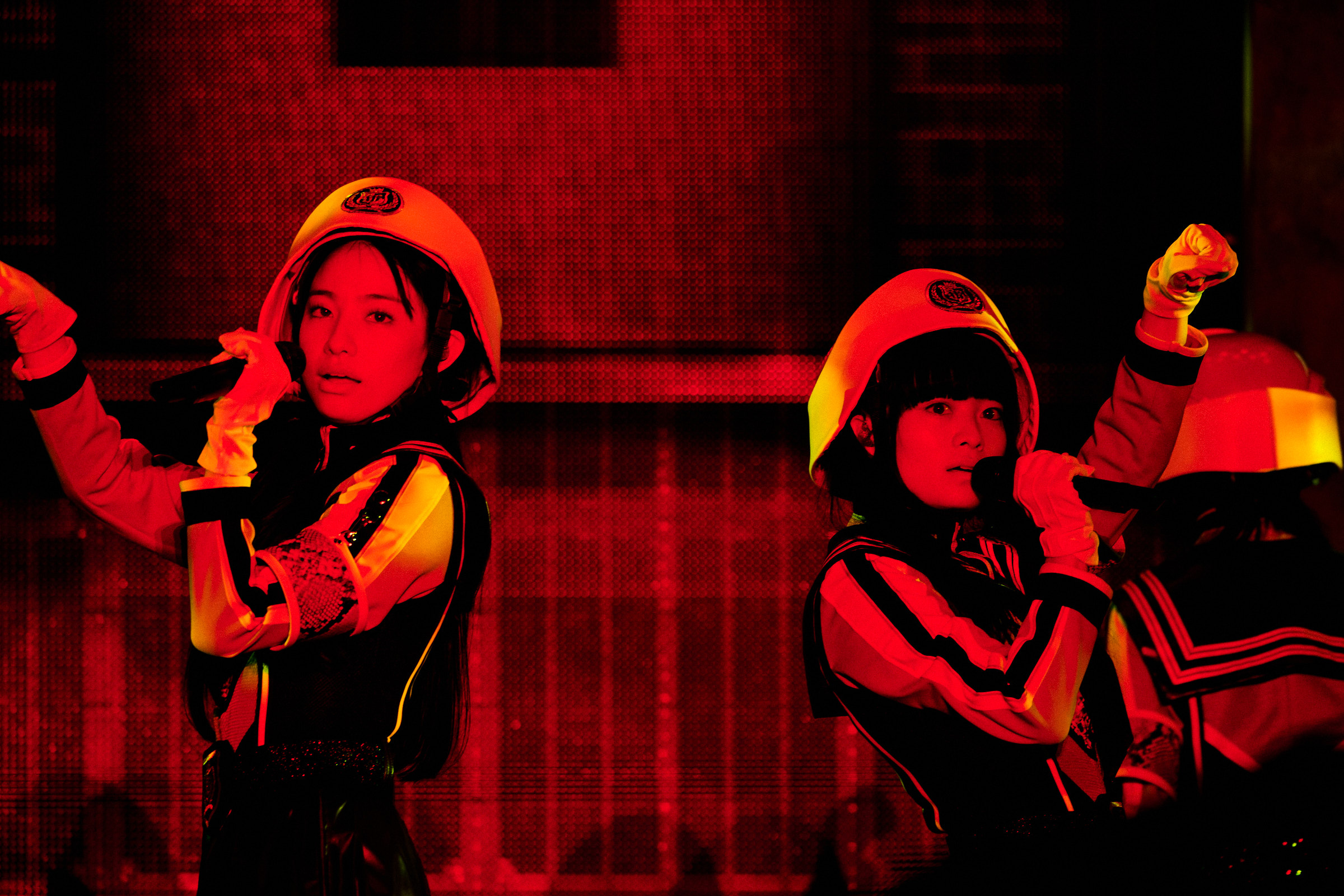


■Setlist
01. MANINGEN
02. Saishuu Jinrui
03. Koibumi
04. Suki Lie
05. Giri Giri
06. Dounimo Tomaranai
07. Neraiuchi
08. Koi no Shadanki
09. zzz
10. Koigeba
11. Happy Hormones
12. CANDY
13. Fantastico
14. Pineapple Kryptonite
15. Free Your Mind
16. OTONABLUE
17. NAINAINAI Remix
18. NAINAINAI
19. Pineapple Kryptonite Remix
20. Odoru Honno 001
21. SEISHUN WO KIRISAKU HADO
22. Tokyo CallingEncore
01. OTONABLUE (Hyperschool Remix)
02. Que Sera Sera
03. Amoeba ToutoshiInformation
ATARASHII GAKKO! First Arena Solo Concert 2023 ‘HAMIDASHITEIKU’
Date: October 29, 2023
Venue: Tokyo Metropolitan Gymnasium■U-NEXT Livestream Information
Available: November 12, 10:00 ~ November 25, 23:59
Details: https://www.video.unext.jp/livedetail/LIV0000003523<Budokan Concert Information>
ATARASHII GAKKO!’s First Budokan (Tentative Title)
Date: January 9, 2024
Venue: Nippon Budokan[Tickets]
Prices:
S-seat: ¥18,000 *Arena seats or front seats in the stands
A-seat: ¥9,000 *Seat in the stands
B-seat: ¥8,000 *Seat towards the back of the stands*No admission for children under 3 years old. Anyone older than 3 must have a ticket.
*Up to 4 tickets per application.[Contact]
DISK GARAGE
050-5533-0888 (Weekdays 12:00~15:00) -
FRUITS ZIPPER’s Yui Sakurai Celebrates 10 Years Since Idol Debut, Limited Edition Merch and Commemorative Events Planned
20.October.2023 | MUSIC
The idol group FRUITS ZIPPER has been picking up steam since its debut in February 2022. On September 13, 2023, the group’s first single CD Watashino Ichiban Kawaiitokoro was released, ranking 3rd on the Billboard Japan Top Single Sales chart and 4th on the Oricon Weekly Single Ranking chart. Yui Sakurai, one of the group’s members, celebrated her 10th year as an idol on October 20, 2023. For the next year, the Yui Sakurai 10th Anniversary -IDOL OF IDOLS- project will be held.
Yui Sakurai has amassed incredible support over the past year. Her line “Nani Nani” from the song Happy Chocolate inspired “Naze Naze,” which hit the top spot in the SNS Trending Word Ranking for 2023. Sakurai was also voted #1 in the “Idols Who are Simply Cute” ranking seen on Fuji TV’s program Neru, Shuzai Ittekimasu ~Tokyo Idol Times~.
FRUITS ZIPPER was formed in April 2022, but Yui Sakurai’s roots as an idol began before the group came together. Over the next year, a number of projects and events will take place to celebrate her incredible idol milestone.The project’s official website was unveiled today and features commemorative goods for sale, as well as comments from the members of FRUITS ZIPPER. A request page has also been opened, allowing fans to send requests to Yui Sakurai detailing what they’d like to see her do for her 10th anniversary.
A live event is also scheduled for December 24, 2023. For the latest information, check FRUIT ZIPPER’s social media.

<Comment from Yui Sakurai>
“I, Yui Sakurai, have been an idol for ten years.
Thank you so much for your continued support!
I treasure sooooo many of the memories I’ve made with all of you, both during the tough times and the happy times. Those treasures have supported me in the past, and they continue to support me now.
This year, to show my gratitude to all of you, I’m beginning my “10th Anniversary Year!”
I just want to give something back to all of you, and I hope that you’re excited to see much more of me in the future.
I’m working with everyone on staff to come up with a lot of ideas, so please look forward to it!” ♡♡♡
Yui Sakurai 10th Anniversary -IDOL OF IDOLS- Official Site
URL: https://yuisakurai-10th-anniversary.com/Information
<Live Event Information>
Yui Sakurai 10th Anniversary -IDOL OF IDOLS- Special Event
Date: December 24, 2023
Venue: Spotify O-WEST
Time: Doors open 11:30 / Doors closed 12:30[Tickets]
General Standing Ticket: ¥5,500 (Tax Included, Drinks Separate)FRUITS ZIPPER OFFICIAL FANCLUB EXCLUSIVE TICKETS
Entry: October 28, 2023 – October 30, 2023 at 23:59 (JST)
URL:https://fruitszipper.asobisystem.com/news/detail/17398<Yui Sakurai Profile>
Starting her idol activities in 2013, Yui Sakurai has since become a member of the popular group FRUITS ZIPPER, bringing her experience as an idol, model, and artist to the collective.
Popular among women, Sakurai was voted #1 in the “Idols Who are Simply Cute” ranking seen on Fuji TV’s program Neru, Shuzai Ittekimasu ~Tokyo Idol Times~.X (Twitter) :https://twitter.com/yui_fz0221
Instagram: https://www.instagram.com/yui.sakurai_7/
TikTok: https://www.tiktok.com/@sakuraiyui2 -
Harajuku-based Brand KAWAII MONSTER CAFE Opens a Traveling Shop, Halloween Pop-Up Shop Opens in Harajuku
The Harajuku-based brand KAWAII MONSTER CAFE has announced a traveling store, KAWAII MONSTER SHOP. As the project’s first event, a Halloween pop-up shop named ‘KAWAII MONSTER SHOP – Colorful Halloween’ will open for 10 days starting October 19 in the birthplace of the brand, Harajuku.
KAWAII MONSTER CAFE is an entertainment restaurant that embodies the vibe of Harajuku in Tokyo, a town that swallows fashion and culture from places around the world and reimagines them into unrestrained originality. Originally opened in 2015 and produced by artist Sebastian Masuda, the colorful and crazy space offered photogenic food and drinks, and guests were served by the iconic Monster Girls clad in future Harajuku fashion. It became a ‘new Tokyo landmark,’ attracting over 700,000 visitors from both Japan and abroad. Even after the restaurant closed in January 2021, its one-of-a-kind concept has lived on in pop-up shops, events, and collaborations with various brands and creators.
The pop-up shop, open in Harajuku for a limited time starting October 19, offers food and drinks, merchandise, special experiences, and photo spots themed around the spooky Halloween season. Additionally, a collaboration with the popular Harajuku accessory store 6%DOKIDOKI will be held from October 19-22. Colorful hair accessories will be on sale, and shop girls with Monster Girls makeup experience will be giving seasonal makeovers to visitors.
■FOOD & DRINK
During the first half of the event, the pop-up shop will be serving food made in collaboration with the hot dog specialty restaurant HOTDOG CAFE STAND STATION TOKYO. The limited-edition menu includes the crazy Monster Dog, consisting of a monster holding a sausage in its mouth, and the monstrous Philly Cheesesteak, made with juicy tenderloin and tons of cheese.
The second half of the event will feature the Colorful Pop Burger Blue Monster (Teriyaki Chicken) from KAWAII MONSTER CAFE’s popular menu, along with French Fries with Monster Dip served with five different colorful sauces. Visitors are welcome to get into the Halloween spirit by enjoying the Monster Float during the pop-up event.
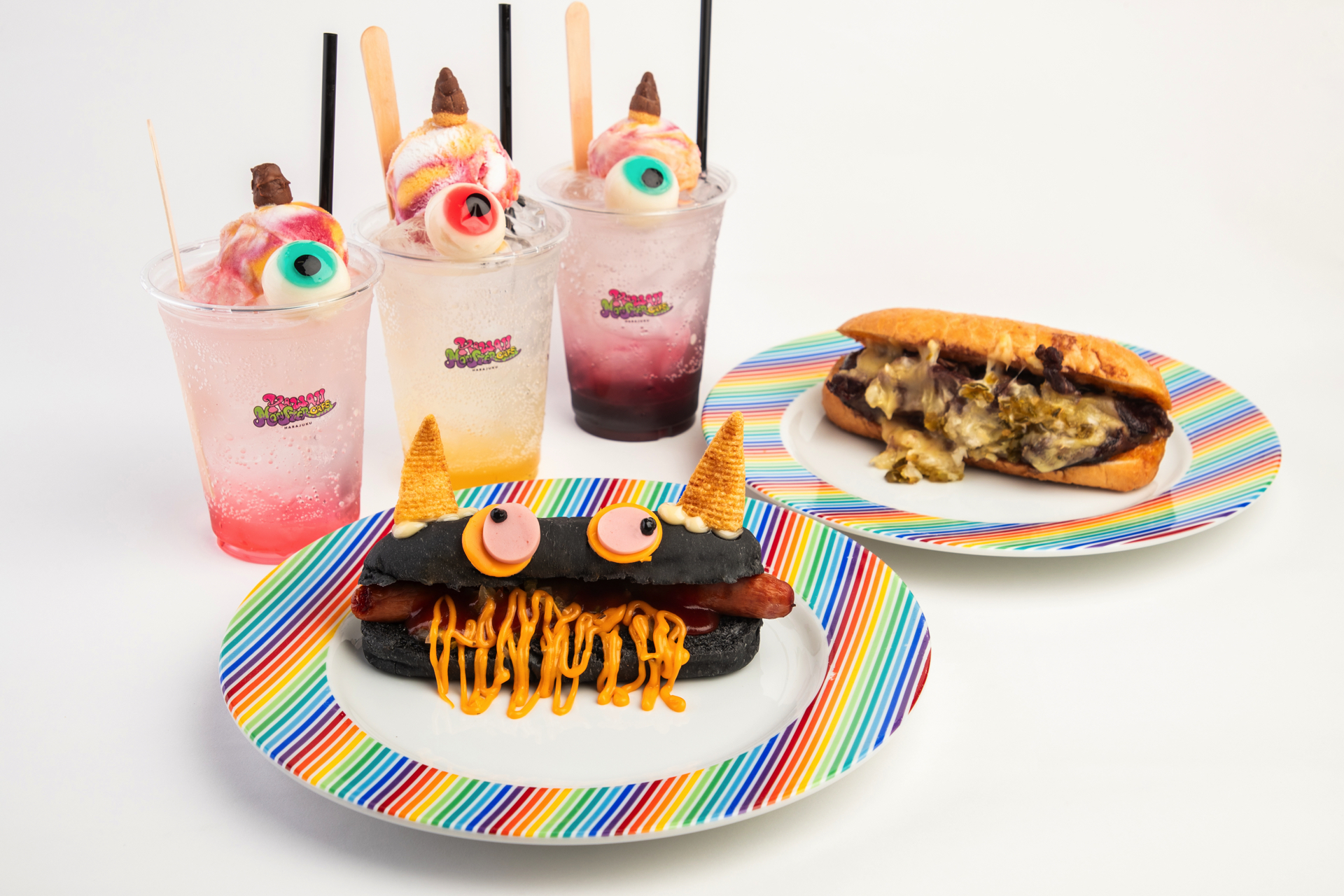
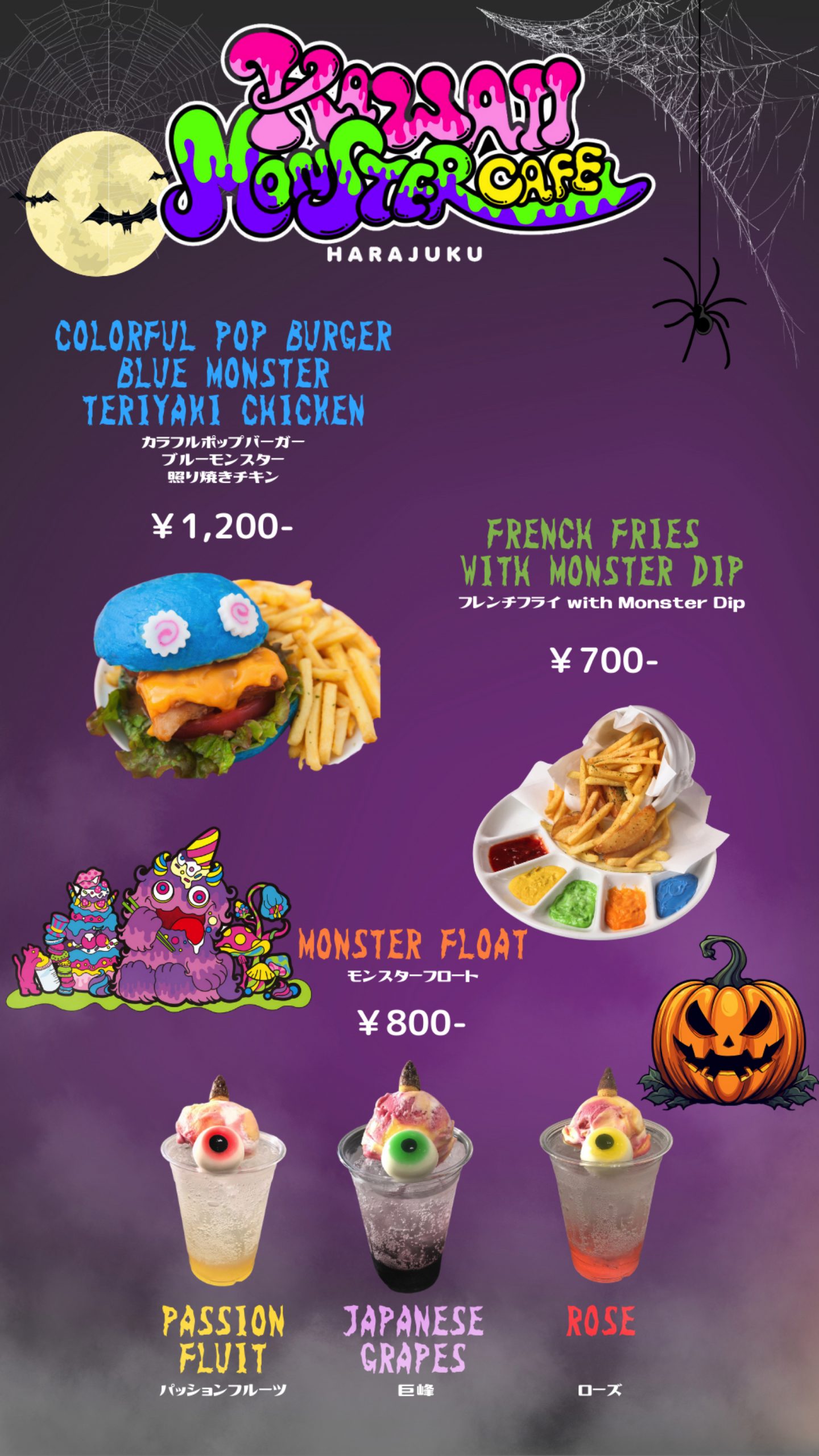
<10/19~10/22 Exclusive Menu>
Monster Dog: ¥880 (Tax Included) *In collaboration with HOTDOG CAFE STAND STATION TOKYO
Philly Cheesesteak: ¥1,350 (Tax Included) *In collaboration with HOTDOG CAFE STAND STATION TOKYO<10/26~10/31 Exclusive Menu>
Colorful Pop Burger Blue Monster (Teriyaki Chicken): ¥1,200 (Tax Included)
French Fries with Monster Dip: ¥700 (Tax Included)Monster Float: ¥800 [Rose/Passionfruit/Kyoho Grape]
■GOODS
New KAWAII MONSTER CAFE goods will make their first appearance at this pop-up shop! Guests can visit the Sweets Factory to create their own candy assortment by filling their favorite containers with chocolates, gummies, and other goodies. Harajuku Icing Cookies will also be available in collaboration with SHONPY, a popular cake shop. Be sure to grab some incredible souvenirs!
In addition, popular KAWAII MONSTER CAFE collaboration items from years past will be available, along with adorable plushies from the globally beloved brand Ty. Visitors can also snag some unique zipit pouches and flexible PLUS PLUS blocks starting October 26.
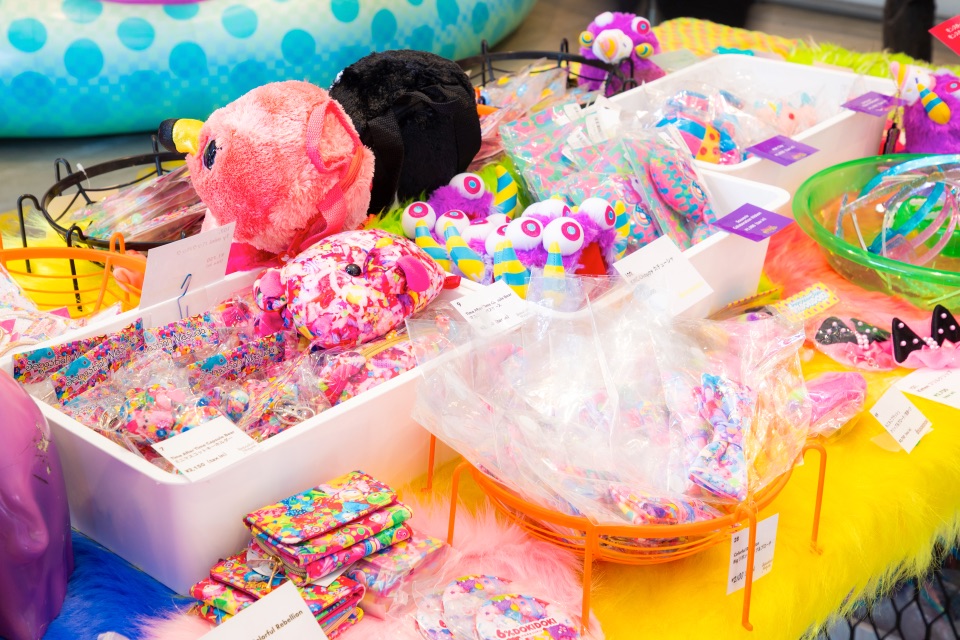
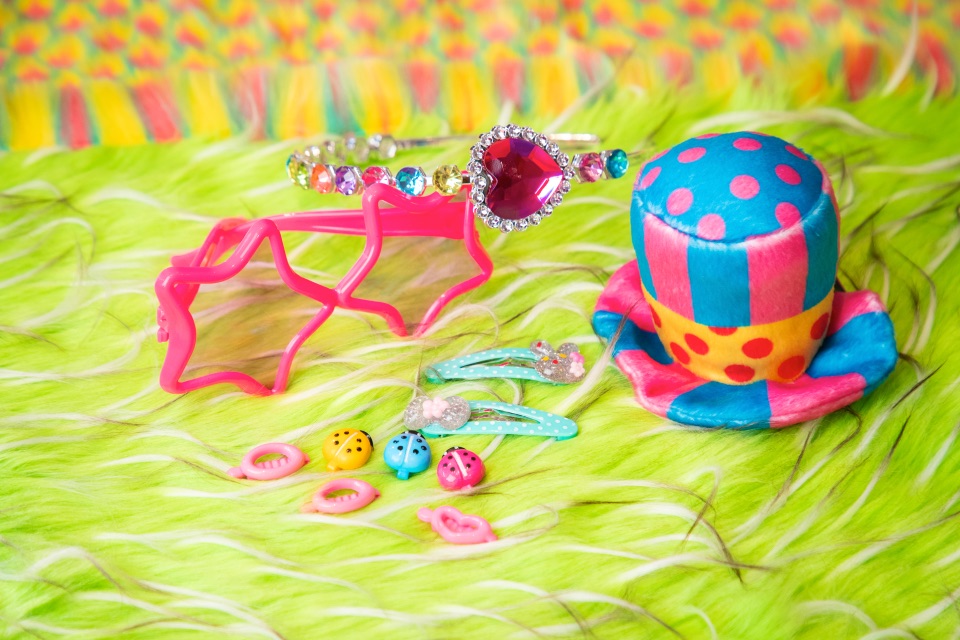
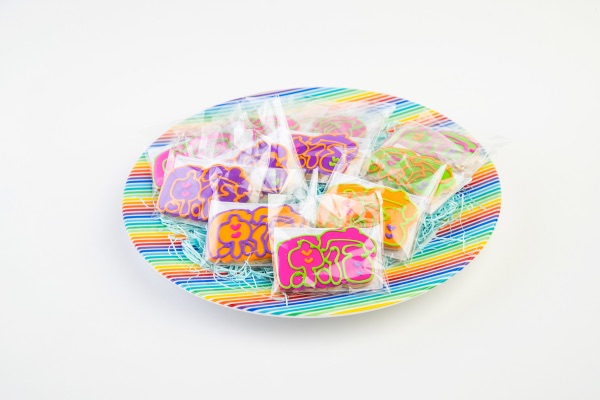
■EXPERIENCE
During the event, KAWAII MONSTER CAFE’s iconic Monster Girls and the character Choppy will greet guests and take photos, as well as shoot cute Halloween-inspired videos together. Visitors wishing to be transformed into Monster Girls themselves can speak to the store girls, clad in Decora fashion and rocking accessories from 6%DOKIDOKI. These ladies will provide POP Harajuku Monster makeovers featuring original tattoo stickers and unique hair accessories to get you ready for Halloween.
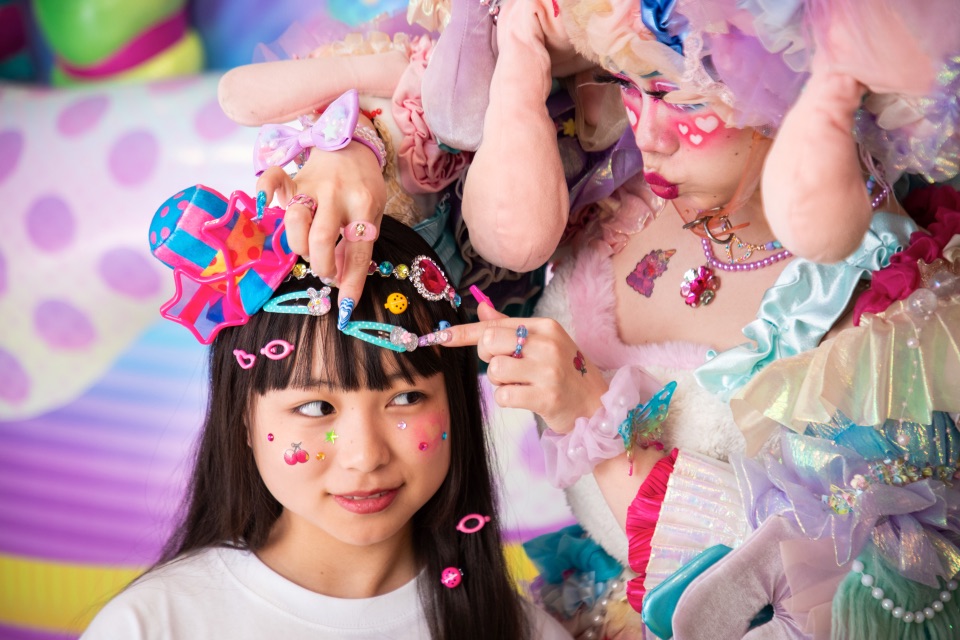
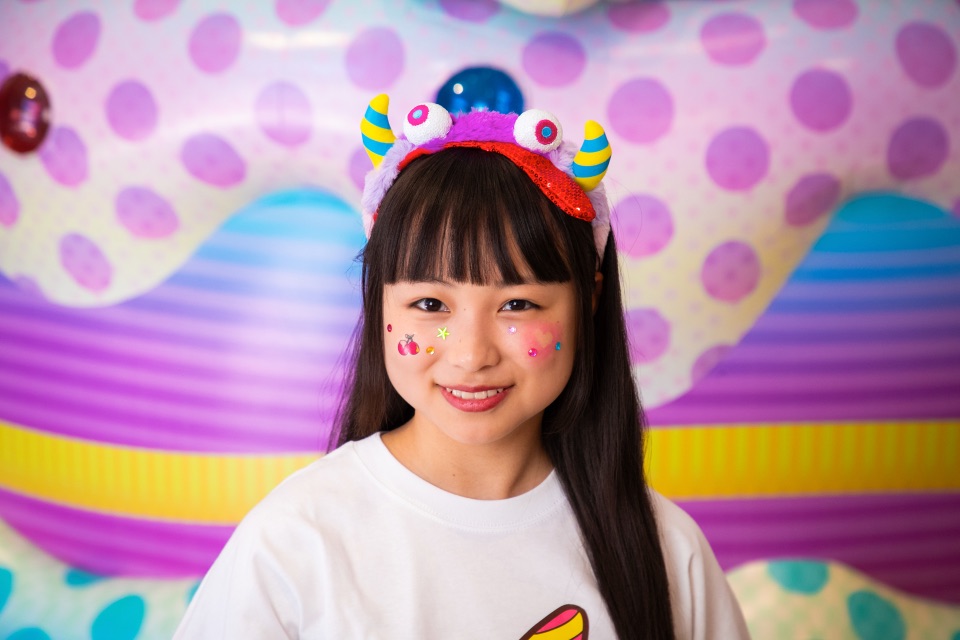
■PHOTO SPOT
At the event, guests will find the 3-meter tall Sweets Cake Balloon inspired by the Sweets-Go-Round Cake, the symbol of KAWAII MONSTER CAFE. Surrounded by colorful decorations and captivating monsters, visitors are sure to leave with plenty of special memories.
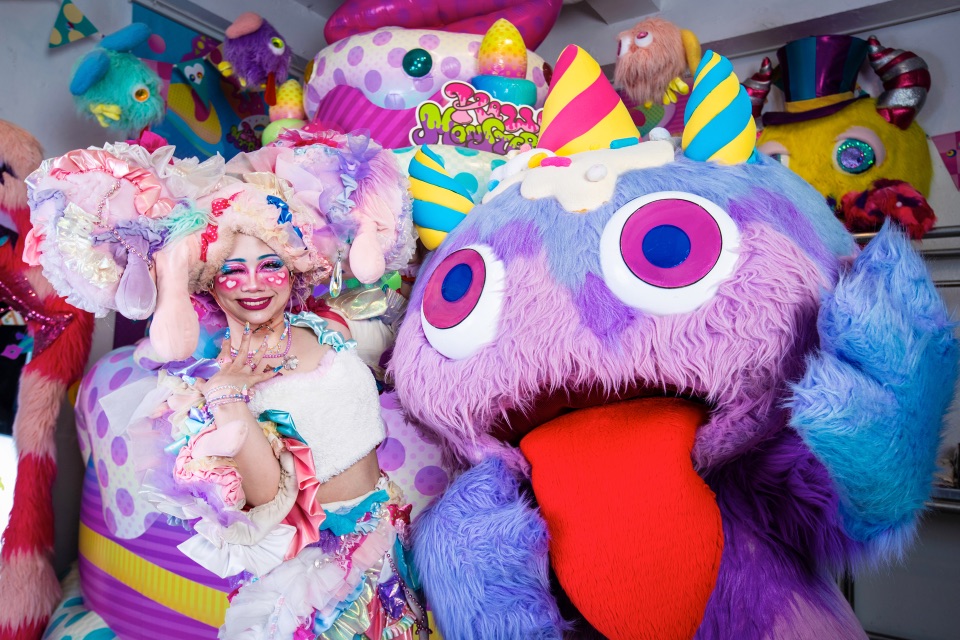
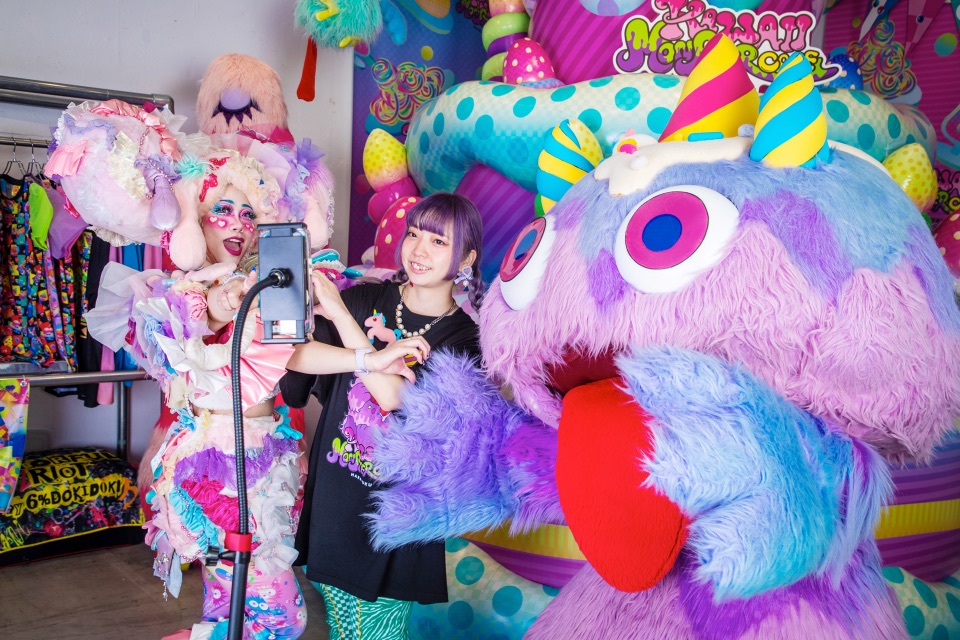
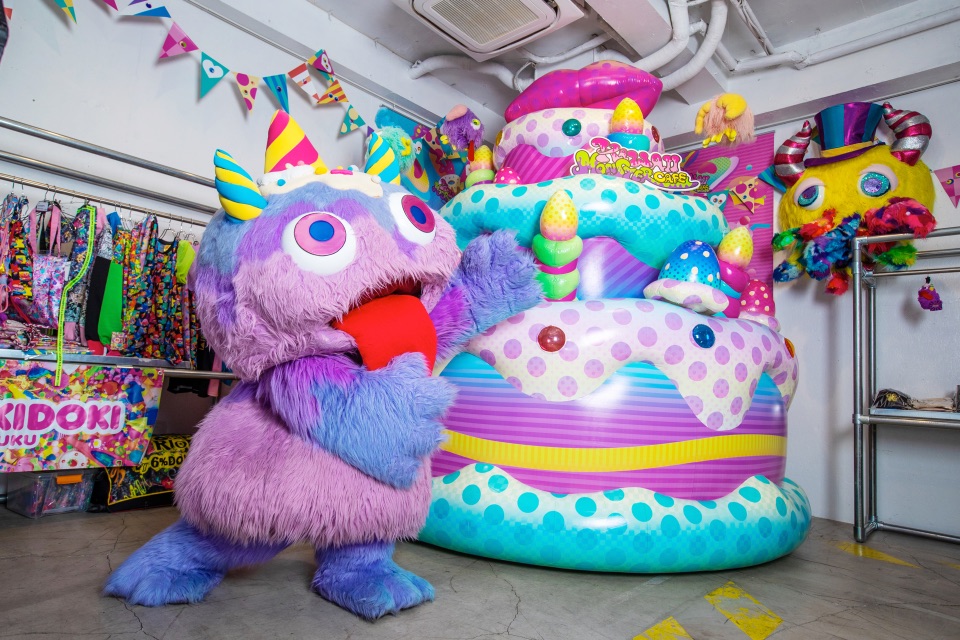
Guests of all ages are invited to spend the Halloween season surrounded by the unique wonders of Harajuku!
Information
KAWAII MONSTER SHOP – Colorful Halloween
Running: October 19, 2023 – October 22, 2023/ October 26, 2023 – October 31,2023
Open: 12:00〜19:00
Venue: ASOBIFACTORY(3-21-8, Jingumae, Shibuya, Tokyo)
Access: 7 minutes walk from JR Harajuku Station, 5 minutes walk from Tokyo Metro Meiji-jingumae StationBe sure to follow where the pop-up shop will appear in the future!
Interested companies are welcome to contact us.
Learn more about KAWAII MONSTER CAFE here
https://asobisystem.com/brand/kawaiimonstercafe/ -
CANDY TUNE Announces First Concert Tour in Tokyo, Osaka, Fukuoka, and Nagoya
18.October.2023 | MUSIC
After debuting in March as part of the idol project KAWAII LAB., CANDY TUNE announced that it would hold its first solo concert, -NEW WAY-, on October 18. The group will also hold its first tour in Tokyo, Osaka, Fukuoka, and Nagoya in March 2024.
The tour will kick off on March 16 at Nagoya ReNY limited, followed by Fukuoka DRUM LOGOS, and Osaka Umeda TRAD, before wrapping up with a finale at Tokyo’s Toyosu PIT, the largest venue in the group’s history.
■October 18 Solo Concert Report
Presale tickets for CANDY TUNE’s first solo concert quickly sold out. The venue, Zepp Shinjuku (Tokyo), was overflowing with fans, and when the Overture began accompanied by excited shouts from the members, the energy in the space immediately became more electrified.
The cheers became louder as the girls appeared on stage, starting the show with a new version of CATCH YOU in which each member introduced themselves during the song. Fans called out the names of their favorite members, and as the first number came to a close, the energy changed as TUNE MY WAY began, the members confidently switching to their cool and sharp choreography. Mikanna Seishun followed, showing the group’s variety as the girls captivated the audience with their youthful voices.
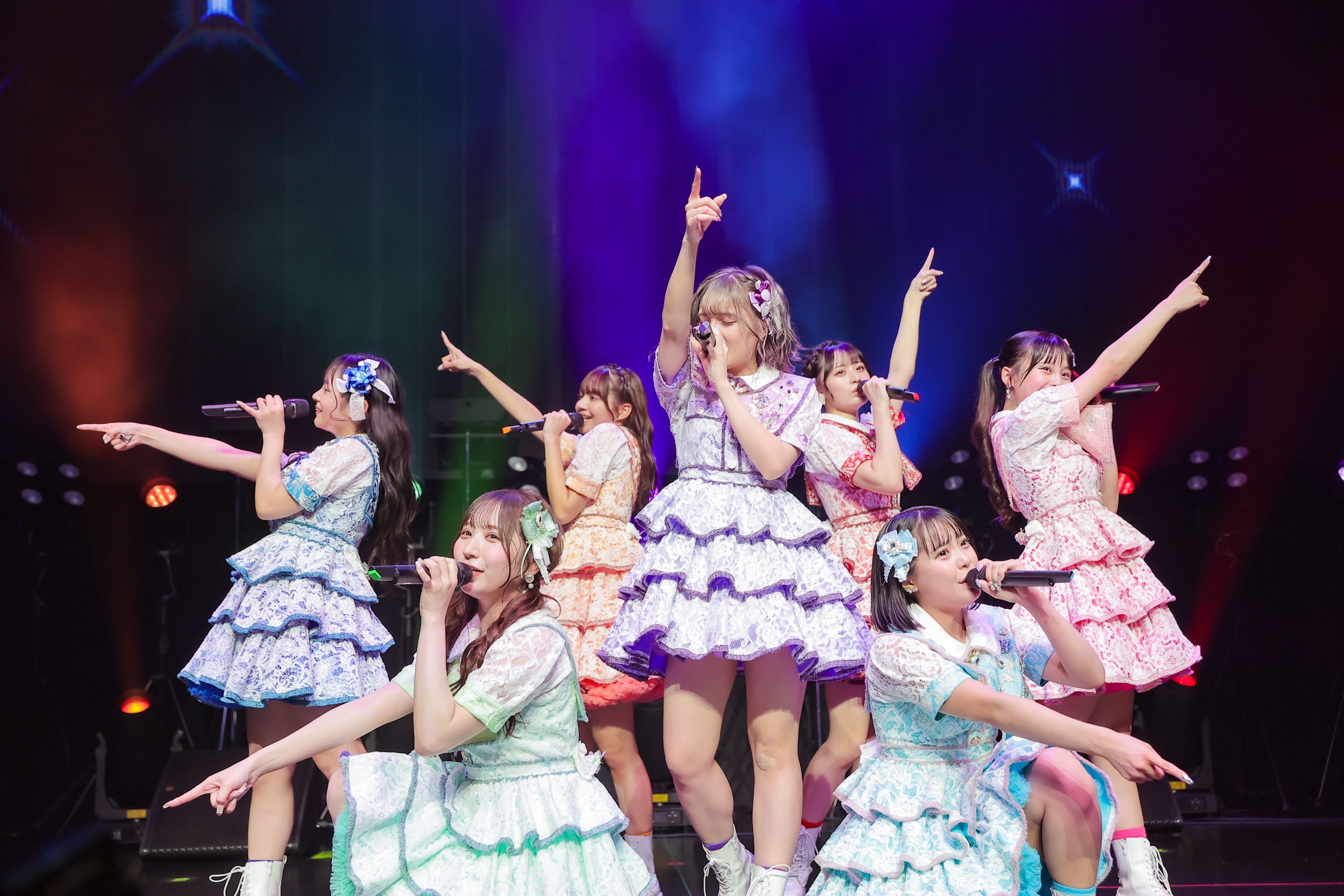
CANDY TUNE took the stage in new cute yet elegant costumes for this live performance. “I tried to design costumes with autumn flare that kept to our usual style but was also a little different than usual,” said member Bibian Murakawa. “I want to make this the most euphoric space ever,” said member Shizuka Miyano, her enthusiasm for the concert clear.
Following the first MC, the group continued with Cu Cu Cu Cute, WAO! AOHARU!, Maewo Muke, and Nanairo Prologue in one go. The audience cheered louder and louder, and keeping up the momentum, CANDY TUNE performed the new song Twilight Dilemma released on October 18. Fans couldn’t take their eyes off the incredible performance, which offered a glimpse of a totally different side of the group. “I think you’ll see an entirely new genre of CANDY TUNE,” said Miyano.
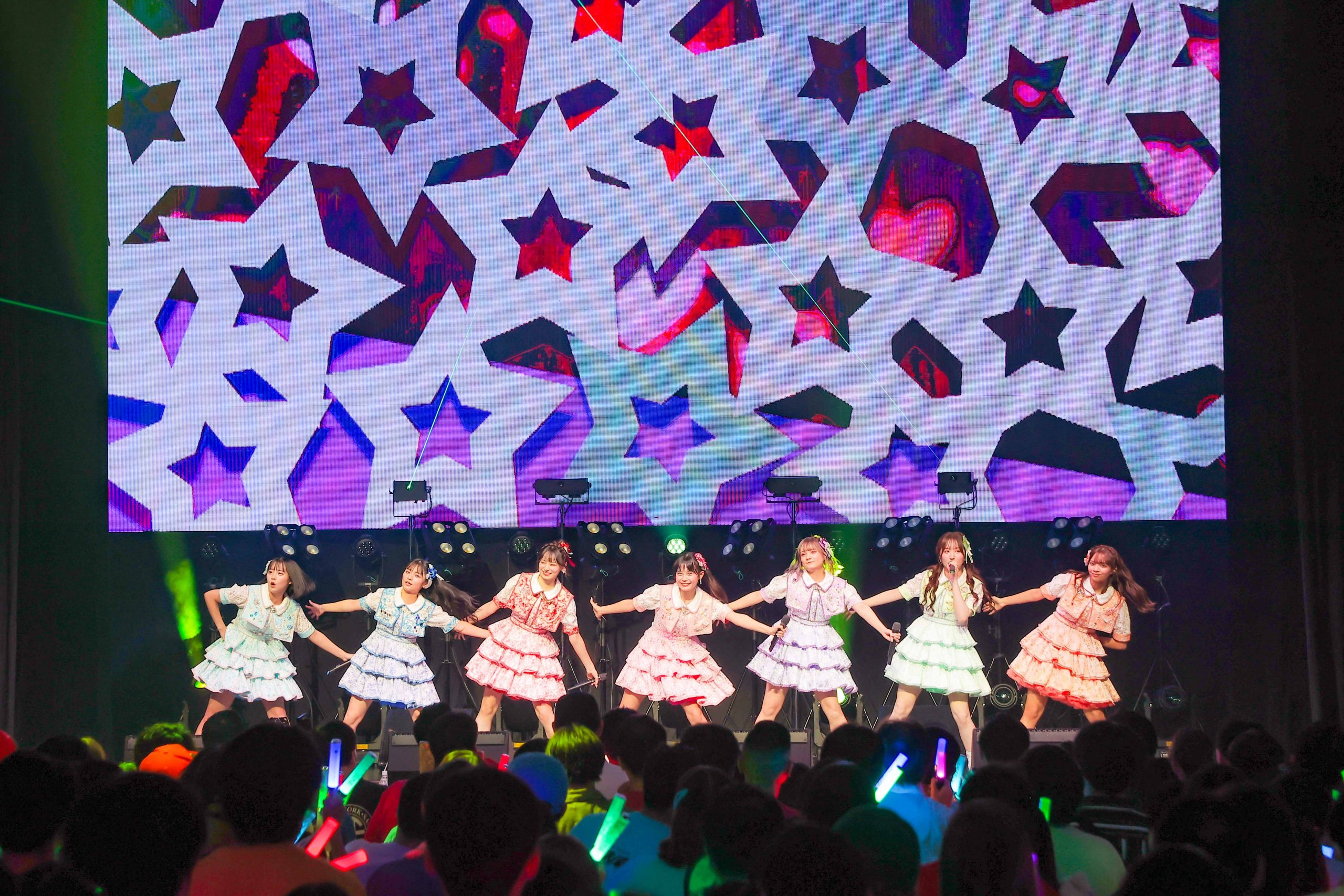
The second half of the show featured Kiss Me Patissier, one of CANDY TUNE’s most popular songs, with a call and response portion from Rino Fukuyama. The members performed with all their might, and as the energy hit an all-time high, the final song hanamaru inspired the biggest cheers of the day.
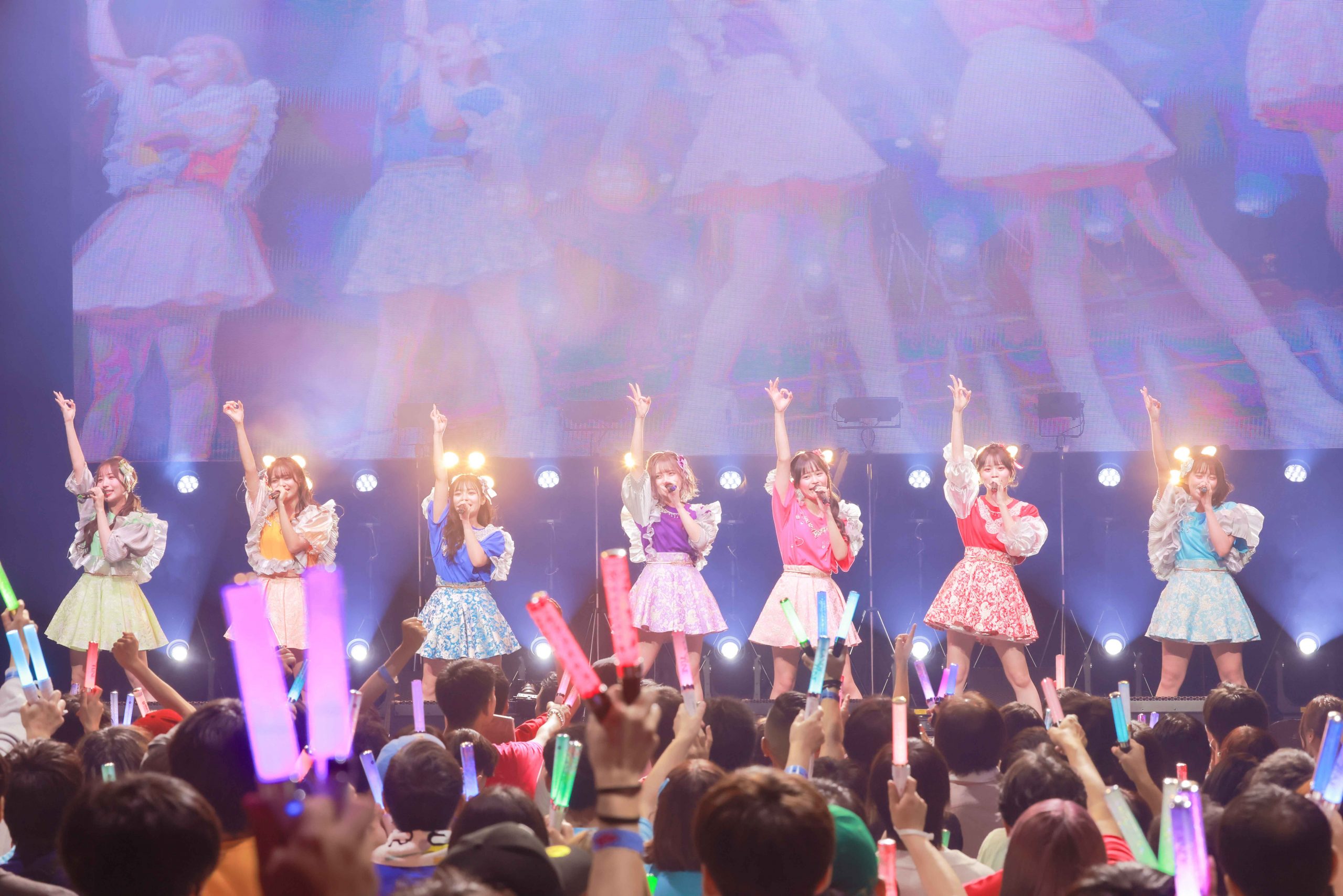
When the members left the stage, the audience immediately begged for an encore. As the girls returned to the stage, they performed their new song Hissatsu Azato Pose for the first time. The lyrics and choreography of the track are cute and flirty, and during the performance, the members addressed the audience with plenty of flirtatious lines and poses that seemed to strike a chord. “The choreography is simple and cute, making it easy for anyone to dance along! I’d be happy if you learn it and dance at live performances or make it go viral on TikTok,” said Nanako Ogawa.
Miyano had plenty to say about the solo concert. “We’re only able to perform on bigger and bigger stages because of our dedicated fans and staff members who support us. I also think that fate brought these seven cute girls together. Please continue to watch over us as we grow,” she said. As the atmosphere became more emotional, the group performed their well-known track Nanairo Prologue as their second encore song. In the midst of so much excitement, Miyano suddenly stopped the performance, standing in the center of the stage to announce CANDY TUNE’s 1st Anniversary tour, with the finale to be held at Toyosu PIT. The audience was shocked by both the new song and the announcement of such a major milestone.
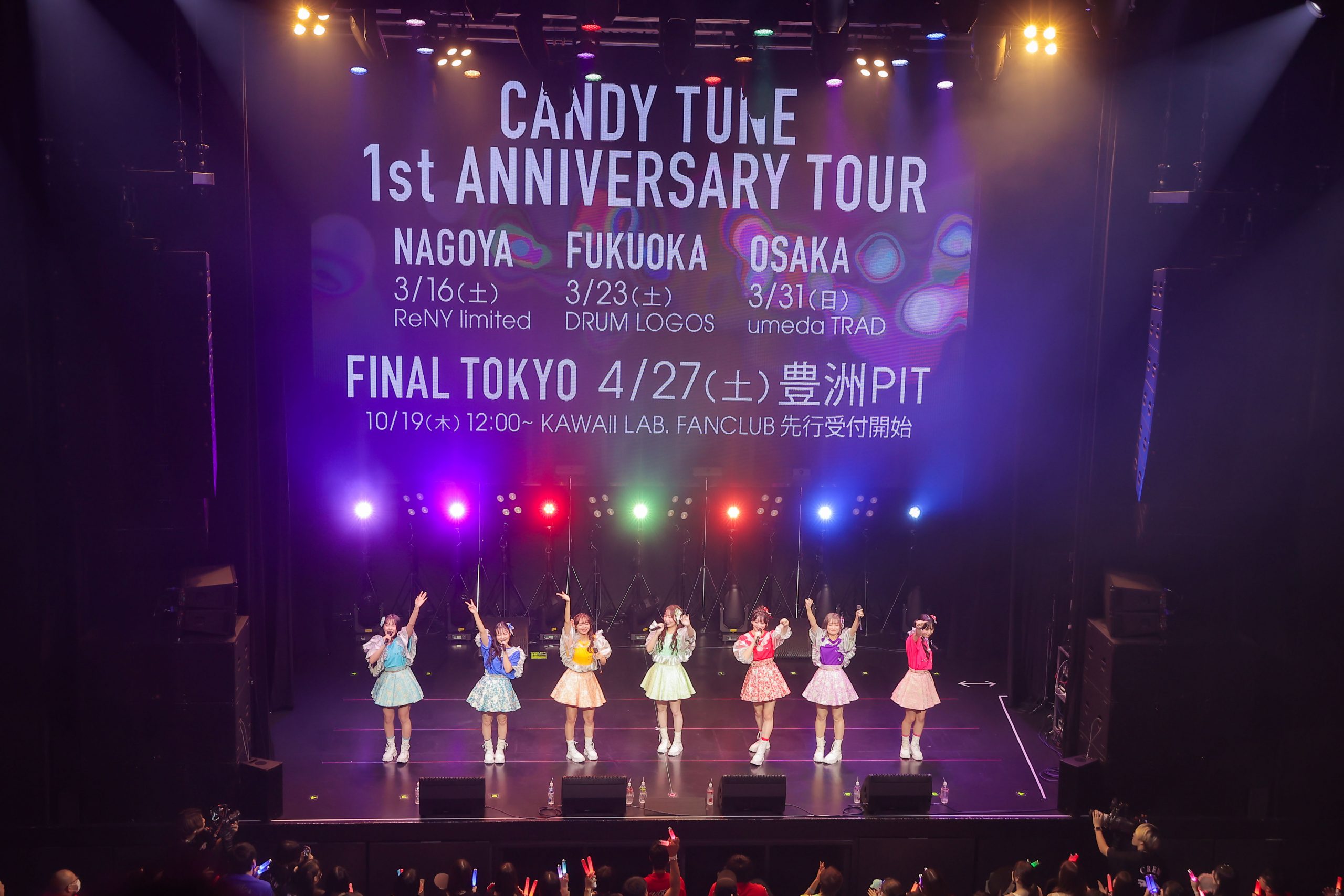
“Thanks to all the publicity from Ame-chan, we were actually able to achieve our goal of filling up Zepp Shinjuku today. I truly believe that we’ll also be able to sell out Toyosu PIT,” said Ogawa, expressing her sincere gratitude. Natsu Minami, in tears on stage, stepped forward to share her feelings. “Before our debut, the seven of us set this goal. For a while, we thought it might not happen, but thanks to everyone’s love for us, it’s actually coming true. Will you come and see the grown-up version of us on April 27 in Toyosu?”
The audience immediately burst into loud applause, and the excitement remained at a fever pitch as CANDY TUNE performed Kiss Me Patissier one more time to bring the solo concert to an end.
■Set List
CATCH YOU
TUNE MY WAY
Mikanna Seishun
Cu Cu Cu Cute
WAO!AOHARU!
Maewo Muke
Nanairo Prologue
Twilight Dilemma
Kiss Me Patissier
hanamaruEN
Hissatsu Azato Pose
Nanairo Prologue
Kiss Me Patissier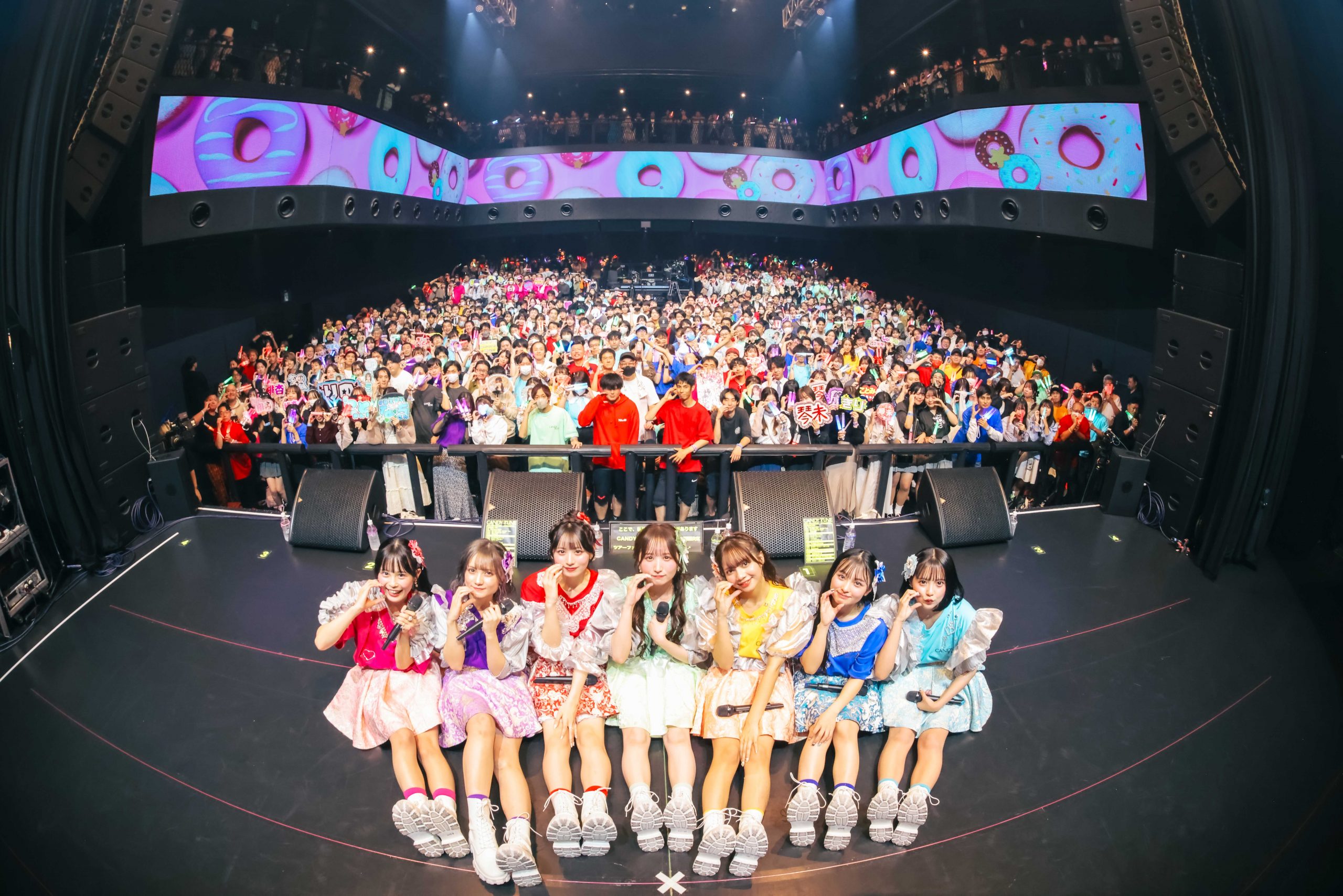
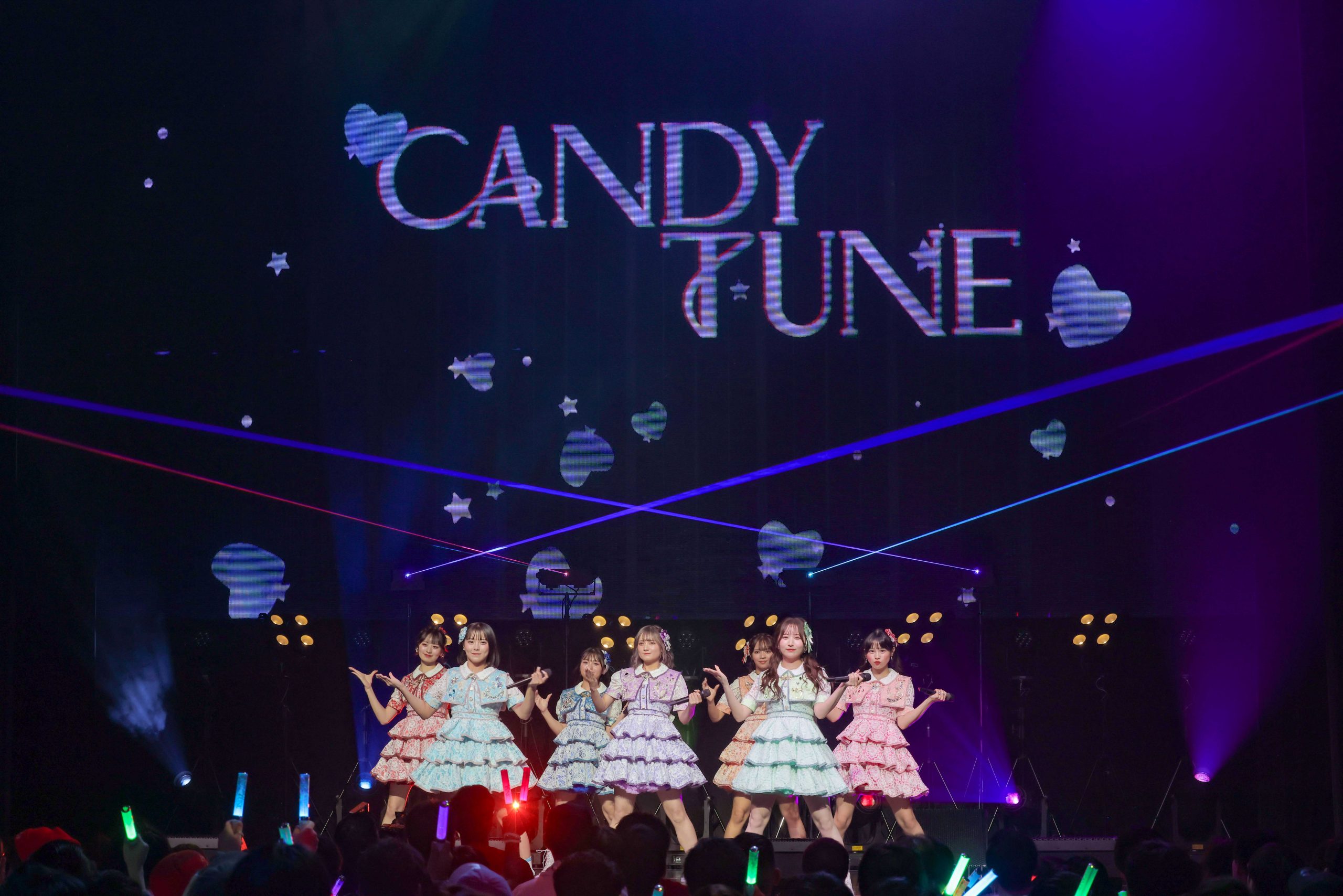
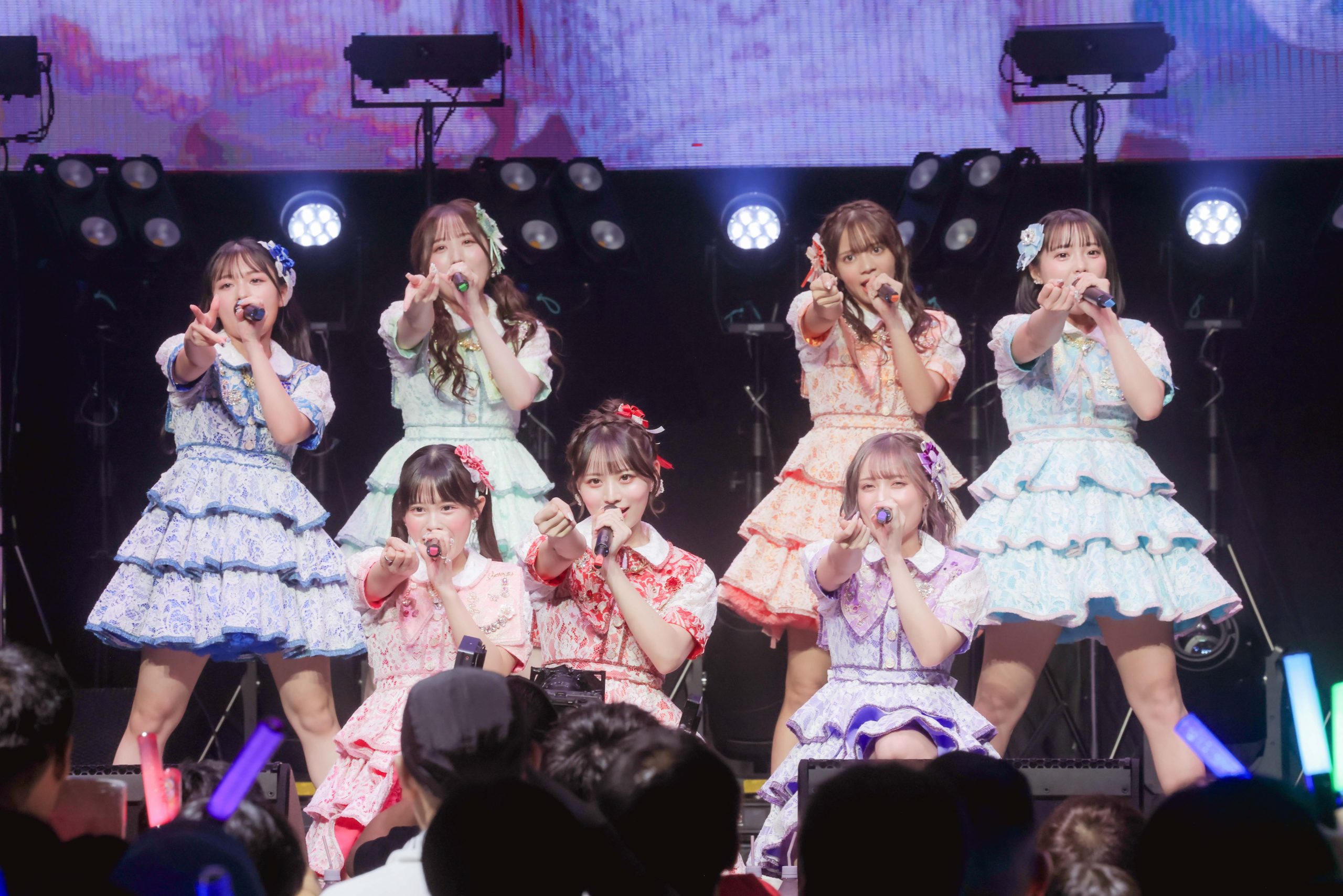
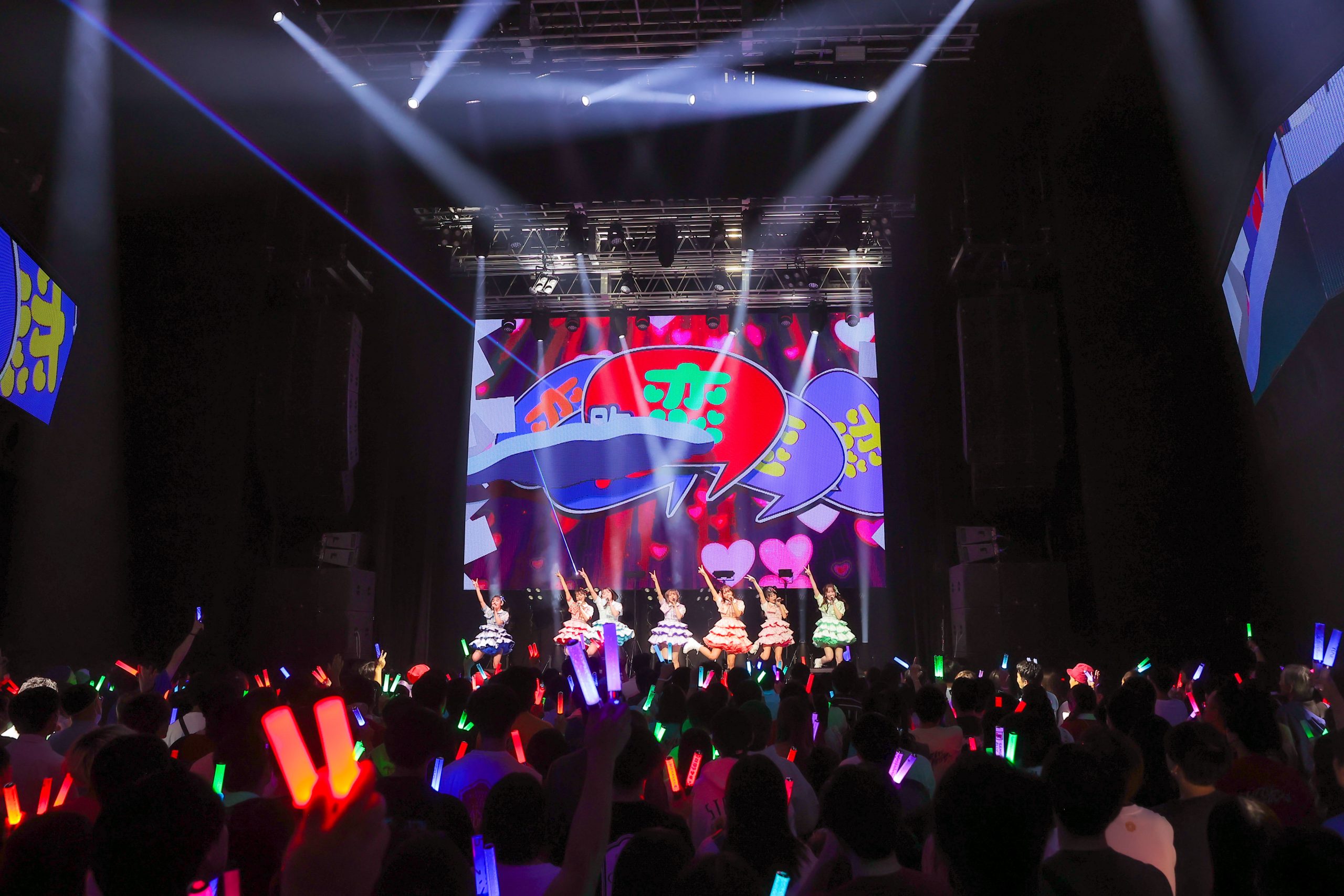
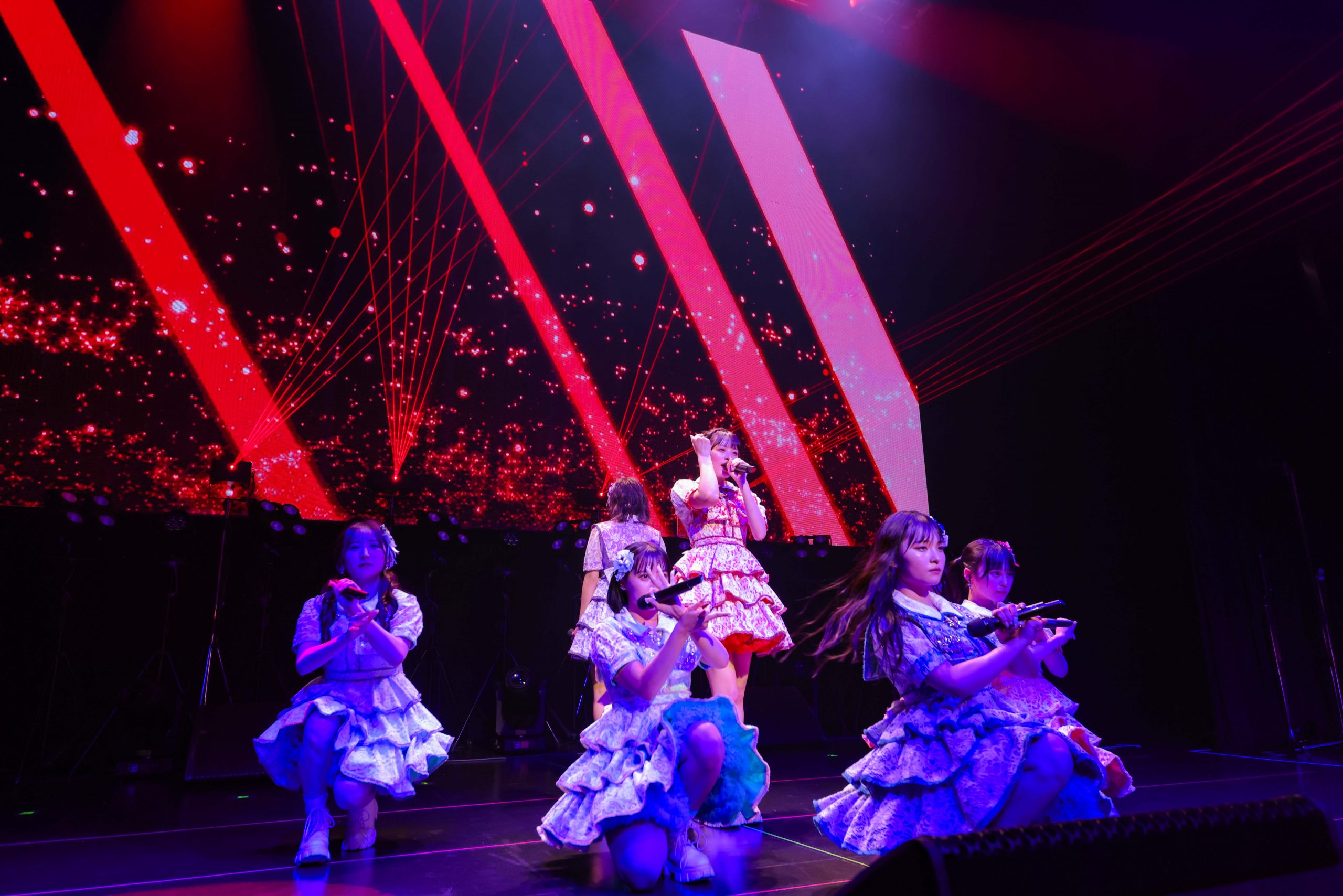
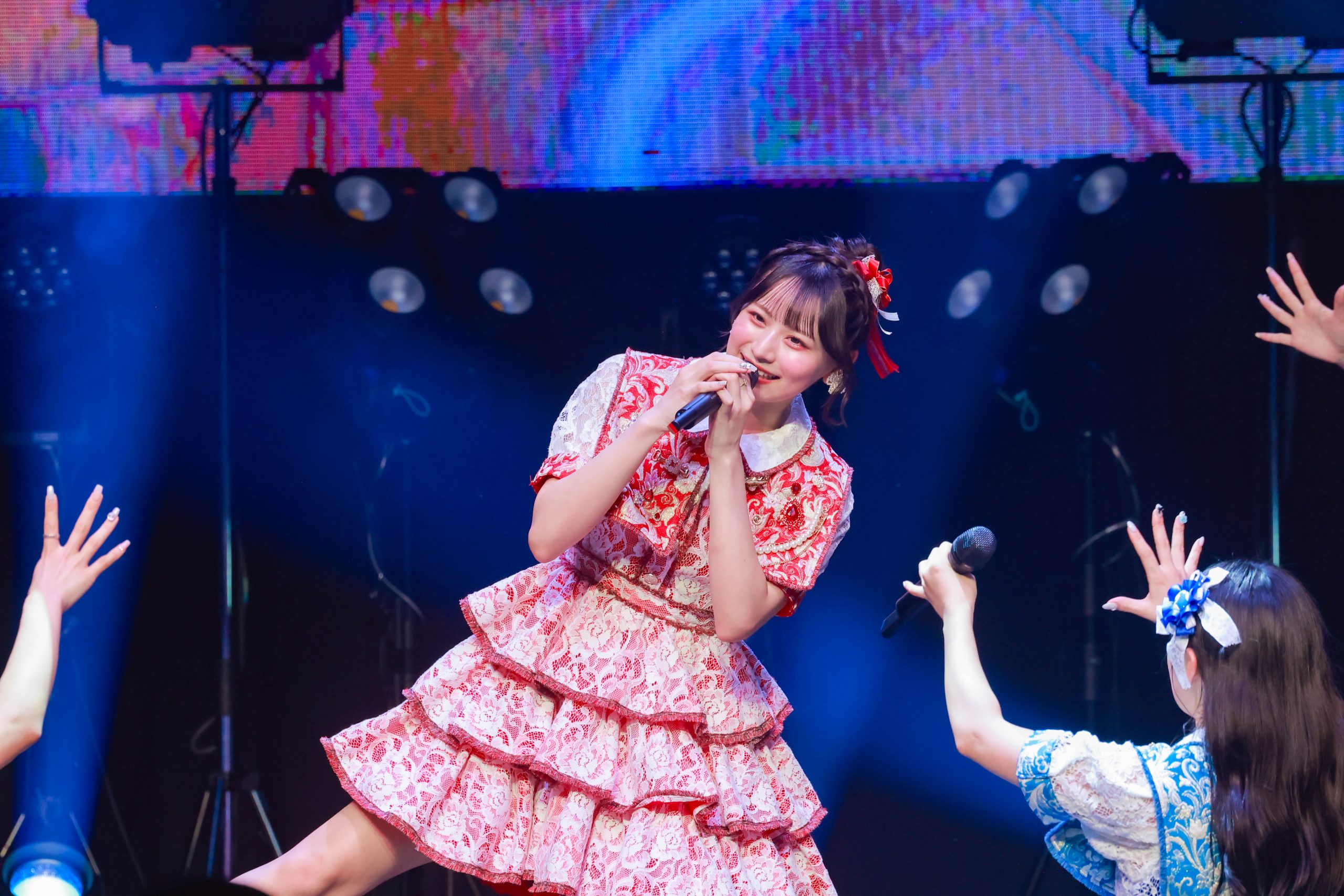

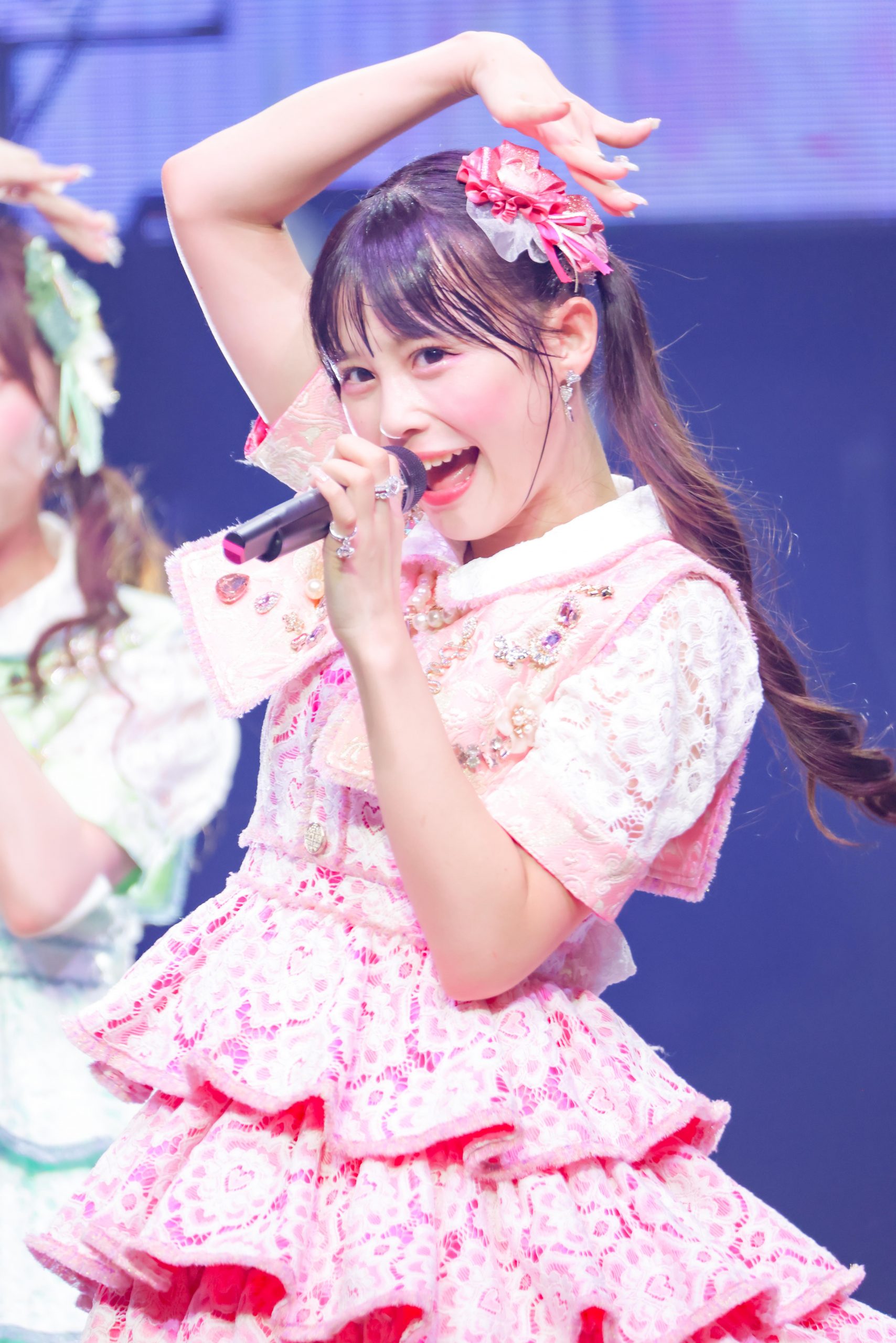
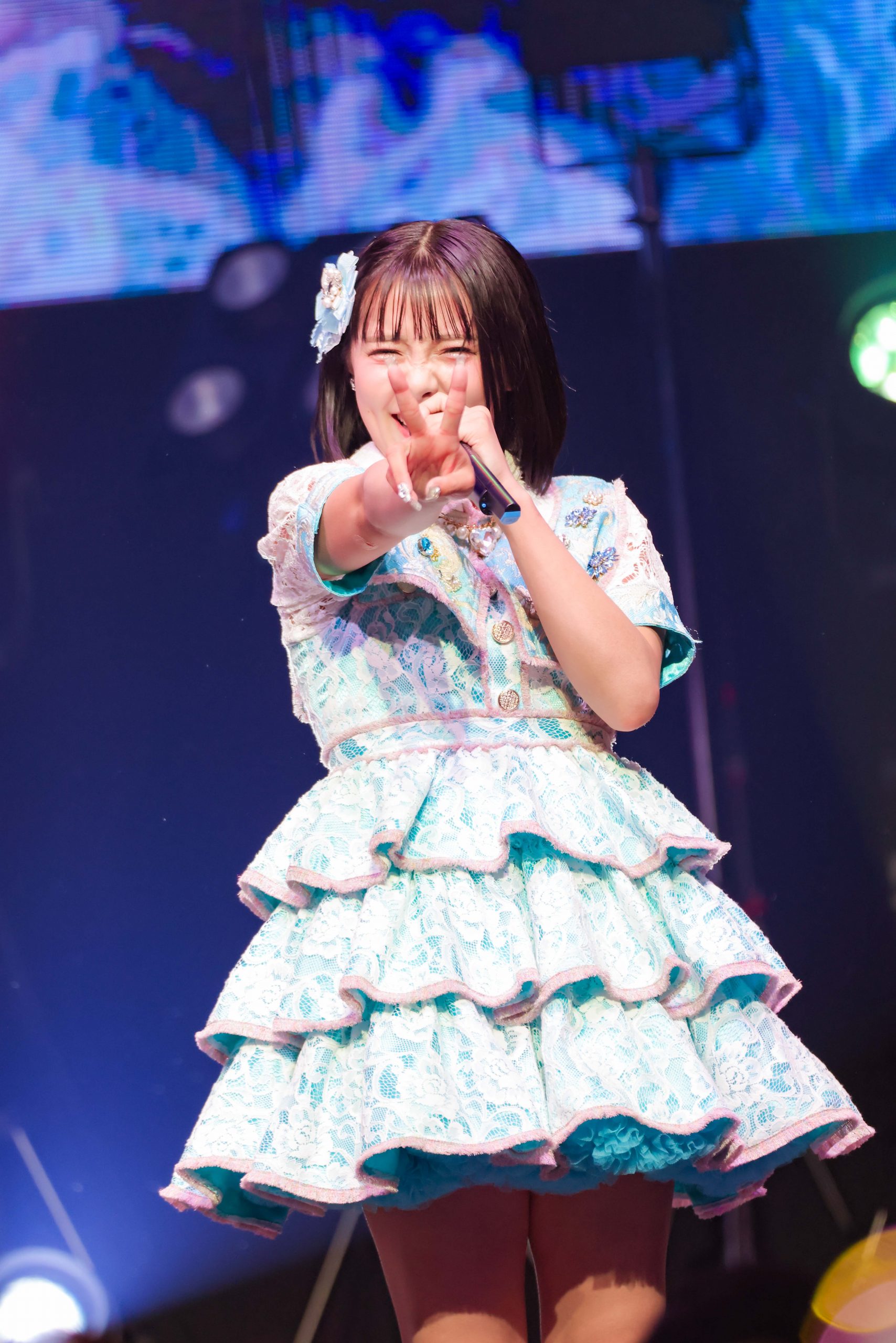
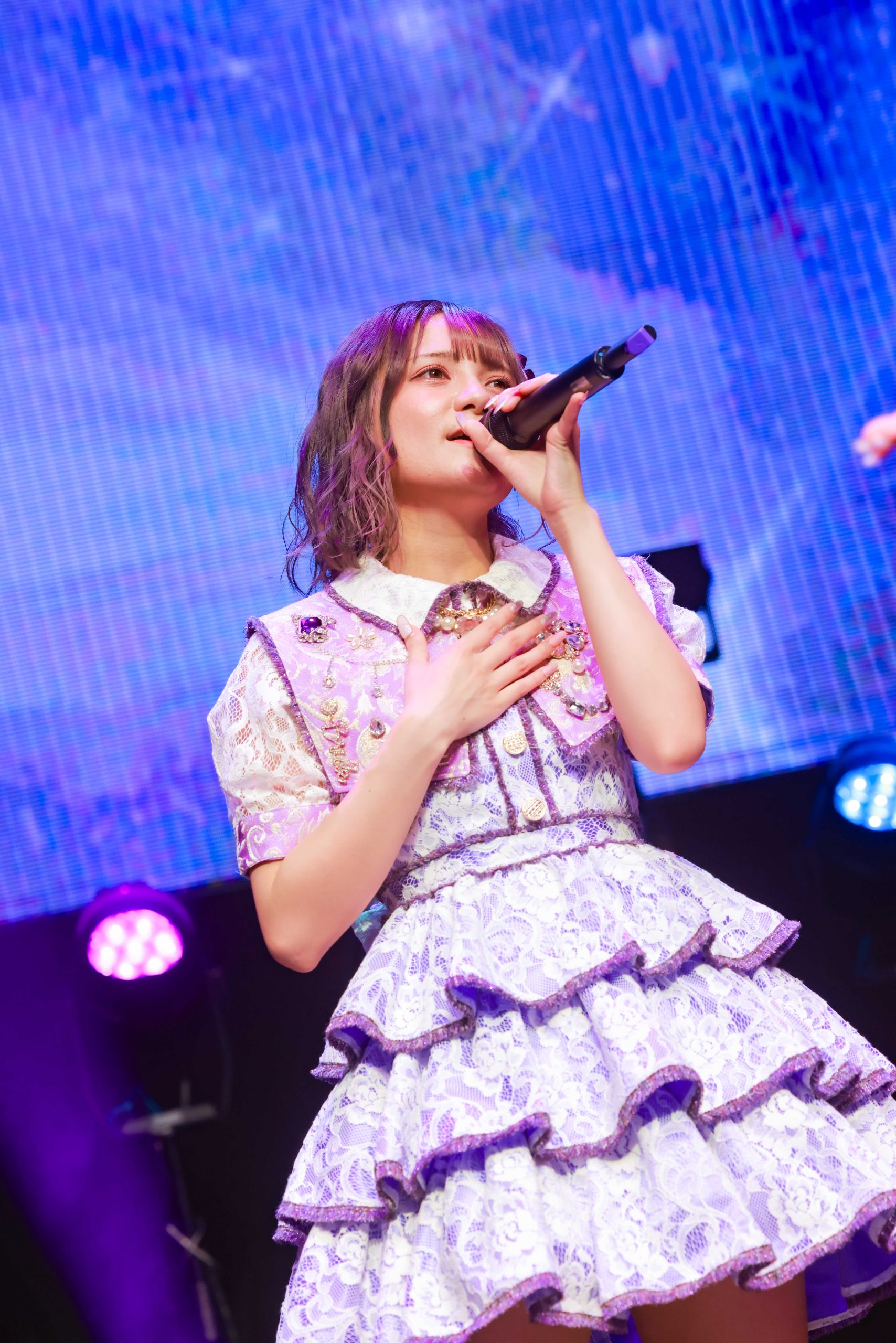
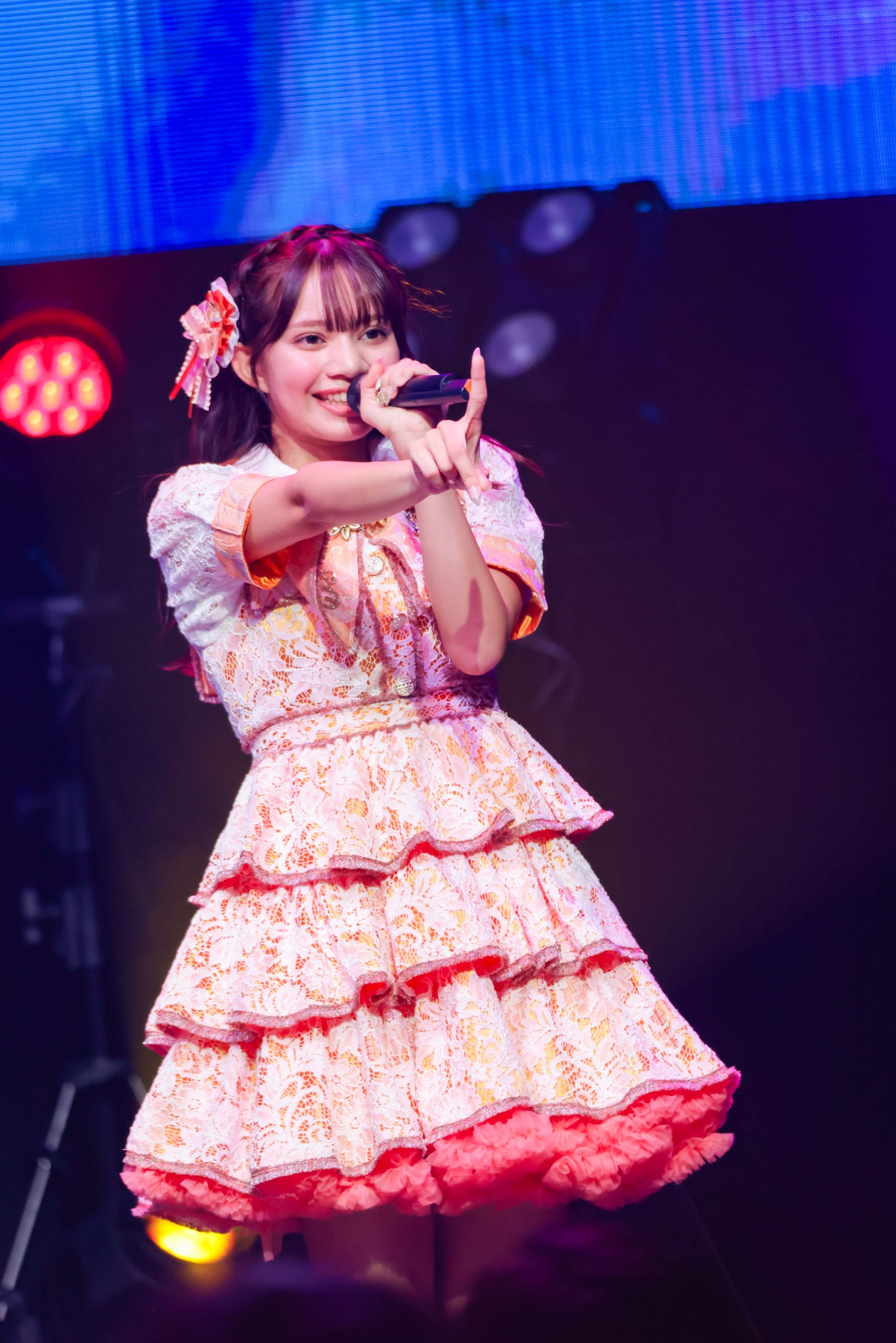

Information
<Tour Information>
CANDY TUNE 1st ANNIVERSARY TOUR 2024
Date: March 16, 2024
Venue: ReNY limited (Nagoya)
Time: Doors open 16:30 / Show starts 17:30
Contact: Sunday Folk Promotion 052-320-9100 (12:00~18:00)Date: March 23, 2024
Venue: DRUM LOGOS (Fukuoka)
Time: Doors open 16:30 / Show starts 17:30
Contact: Kyodo West Japan 0570-09-2424 (11:00~15:00/Closed on Sundays and holidays)Date: March 31, 2024
Venue: Umeda TRAD (Osaka)
Time: Doors open 16:00 / Show starts 17:00
Contact: Kyodo Information 0570-200-888Date: April 27, 2023
Venue: Toyosu PIT (Tokyo)
Time: Doors open 16:30 / Show starts 17:30
Contact: HOT STUFF PROMOTION 050-5211-6077 (Weekdays 12:00〜18:00)[Tickets]
VIP Standing: ¥15,000
miniVIP Standing: ¥7,000 (Only for Toyosu PIT)
General Standing: ¥5,000
*All prices include tax, drinks not included.
*Up to 2 tickets per person per show (Multiple applications accepted)
*All tickets are electronic.
*Unauthorized resale of tickets is prohibited.VIP Ticket Bonuses: VIP area in the front of the auditorium, commemorative goods, original electronic ticket, exclusive special event access
miniVIP Ticket Bonuses: Exclusive special event access (No viewing in the front VIP area)■KAWAII LAB. Official Fanclub Presale Tickets
Available: October 19 at 12:00~October 30 at 23:59
URL: https://kawaiilab.asobisystem.com/news/detail/17323■Ticket Outlet Presales
Available: November 3 at 12:00 ~ November 12 at 23:59
URL: Ticket pia https://t.pia.jp/・A special bonus event will be held during this tour.
・All guests attending the performances in Nagoya (March 16), Fukuoka (March 23), and Osaka (March 31) will be able to participate.
・Only VIP and miniVIP ticket holders will be able to attend the special bonus event at the Tokyo show on April 27.
・Purchase of a special ticket is required to attend the event.<Song Information>
Twilight Dilemma – CANDY TUNE (5th Digital Single)
Release Date: October 18, 2023
Streaming URL: https://KAWAIILAB.lnk.to/TD_C
Available to download and stream from all major music distribution sites -
Idol Group CANDY TUNE Releases Fast-Paced Coming-of-Age Song ‘WAO!AOHARU!’ on Streaming Platforms
27.September.2023 | MUSIC
CANDY TUNE, an idol group from ASOBISYSTEM’s KAWAII LAB. project, released the new song WAO!AOHARU! on all major streaming platforms today, September 27. The group debuted in March of this year.
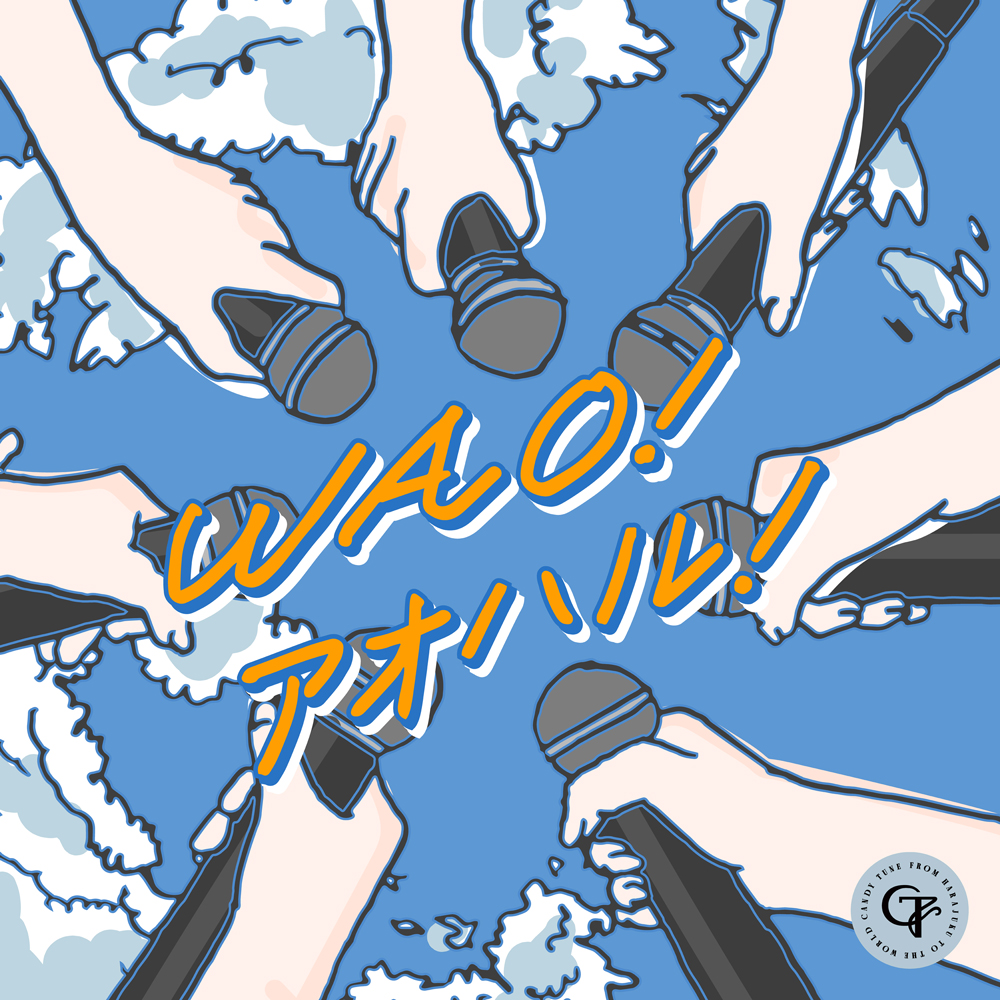
Like the group’s popular song Kiss Me Patissier, which has created plenty of buzz on TikTok and inspired a recent music video, WAO!AOHARU! also features sound production by Naoki Kubo and lyrics by Suu, both from SILENT SIREN. This catchy and fast-paced coming-of-age track expresses the wide range of emotions felt so deeply at a young age, from love and friendship to depression and melancholy. CANDY TUNE expresses their earnest feelings as girls living through the peak of their youth as idols. WAO!AOHARU! will be performed live for the first time at Nanako Ogawa’s Birthday Event at Spotify O-WEST on September 28.
On October 18, CANDY TUNE will hold its long-awaited first solo concert at Zepp Shinjuku in Tokyo. Tickets are available now from a variety of retailers.
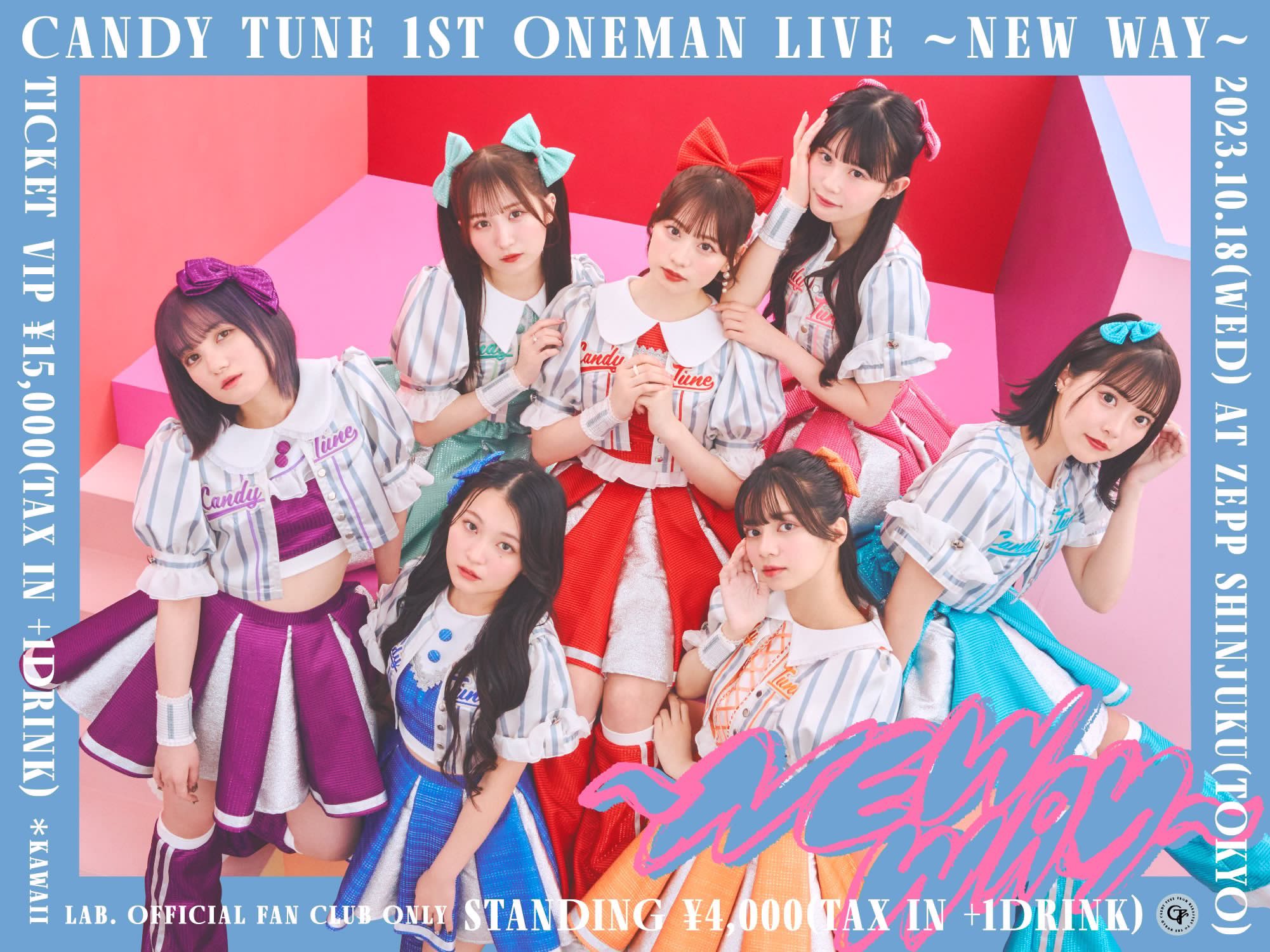
CANDY TUNE 1st Solo Concert -NEW WAY-
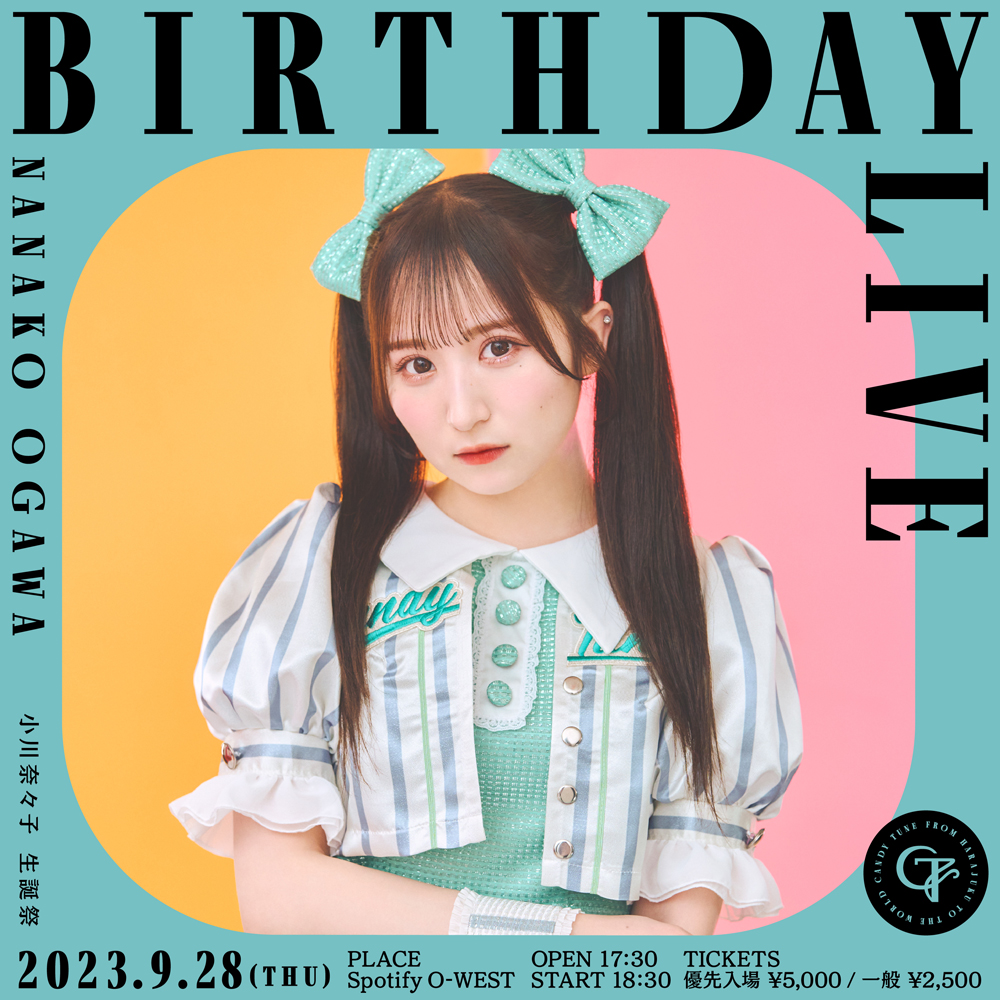
小川奈々子生誕祭
Information
<Song Information>
WAO!AOHARU!– CANDY TUNE (4th Digital Single)
Streaming URL: https://KAWAIILAB.lnk.to/WAOAOHARU
Available on all major music download and streaming platforms
<Concert Information>
CANDY TUNE 1st Solo Concert -NEW WAY-
Date: October 18, 2023
Venue: Zepp Shinjuku (Tokyo)
Time: Doors open 17:30 / Show starts 18:30
Ticket Sales
[Fee]
VIP: ¥15,000 (Tax Included/Drinks separate) *Exclusively available for members of the KAWAII LAB. Official Fanclub (While supplies last)
General Standing: ¥4,000 (Tax Included/Drinks separate)
Where to Buy Tickets:
Lawson Tickets: https://l-tike.com/candytune/
e+: https://eplus.jp/candytune/
Ticket Pia: https://w.pia.jp/t/candytune-t/
Nanako Ogawa Birthday Event
Date: September 28, 2023
Venue: Spotify O-WEST
Time: Doors open 17:30 / Show starts 18:30
Buy Tickets: https://t.pia.jp/pia/event/event.do?eventCd=2332236
[Contact]
HOT STUFF PROMOTION
050-5211-6077
<Profile>
CANDY TUNE
This seven-member idol group was formed by ASOBISYSTEM’s KAWAII LAB.
project. The members include Rino Fukuyama, Mizuki Kirihara, Natsu Minami,
Nanako Ogawa, Bibian Murakawa, Shizuka Miyano, and Kotomi Tachibana.
The group’s producer is model and TV personality Misa Kimura, the former leader
of Musubizm and the general producer of KAWAII LAB. With the project’s motto
‘From Harajuku to the world’ in mind, the group is aiming to share their “NEW
WAY” from Harajuku, a fashion town where diverse cultures gather and
individuality reigns supreme.
Just like candy, which comes in tons of different flavors and shapes, the members will bring their own unique personalities and quirks to their pop tunes as they carry on KAWAII LAB’s mission of sharing Harajuku style with the world.
Fanclub: https://kawaiilab.asobisystem.com/
X (Twitter):https://twitter.com/candy_tune_
Instagram: https://instagram.com/candy__tune
TikTok: https://www.tiktok.com/@CANDY_TUNE
YouTube: https://www.youtube.com/channel/UCU0PgOXf0lxzVxN2TLzMJkw
note (Live Schedule): https://note.com/candy_tune

